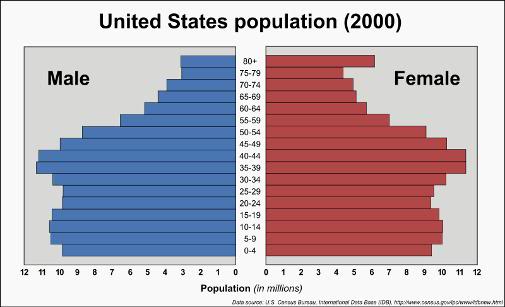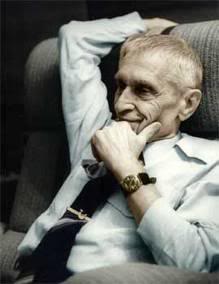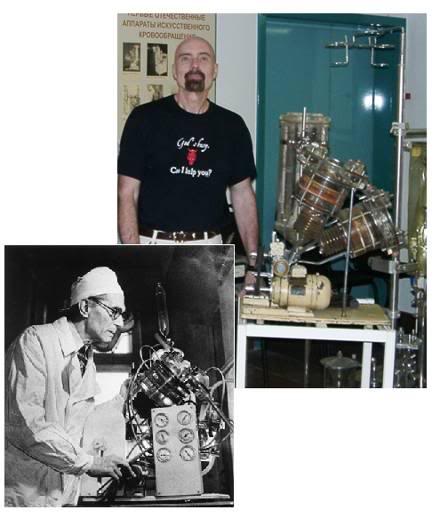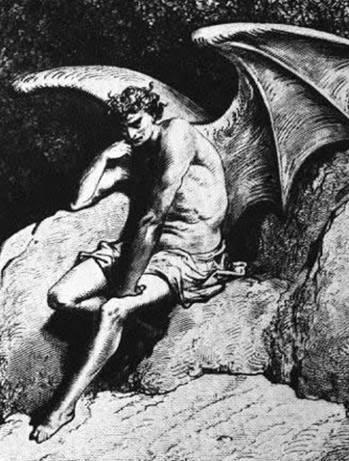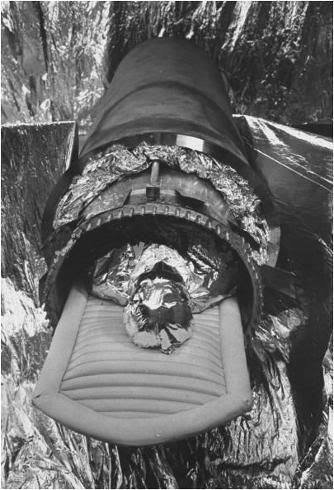Please note: A PDF of this article is available at: http://cryoeuro.eu:8080/pages/viewpageattachments.action?pageId=1441801&sortBy=date&highlight=Darwin_Michael_+G_+Biography_v4.3.pdf&
Authorship & Editing Credits
The following biography began as a Wikipedia entry authored primarily by Ben Best and a Wikipedian who identifies himself as “Cryobiologist.” In May of 2010, I was contacted by an individual who identified himself as “Kahn,” and who solicited my cooperation on “completion of a comprehensive and accurate biography (of Mike Darwin) which could be used as the basis of Wikipedia entry.” This effort was reportedly in response to a deletion notice regarding my Wikipedia biographical entry (news of which I greeted with joyful anticipation). After some negotiation, I was sent a draft of the proposed accurate and comprehensive biography, which, to my considerable surprise, I found was indeed both reasonably accurate and astonishingly comprehensive. Kahn and I exchanged many edits of the biography before he apparently lost interest and disappeared from my event horizon in the closing months of 2010.
By that time I realized that Kahn, whoever he was, had managed to do something that I had not, despite 20+ years of fitful effort; namely to construct a passable narrative of my professional life. With the maturation of the assault on cryonics began by Alan Kunzman and Larry Johnson some years before, I began to realize the importance of such a well referenced narrative, not so much for my benefit, per se, but rather because it represents a narrative of a critical period in cryonics history – and one which is the subject of the current campaign of disinformation and lies. Eugen Leitl concurred in this assessment and made considerable efforts in refining the manuscript and I want to thank for him for this and for his considerable efforts in attempting to disseminate an earlier version. Finally, Steve Bridge spent many hours editing the text, formatting and correcting the references, and preparing it for web publication. This was a boring, frustrating, and probably pretty unrewarding task. I know this because I had struggled with it for many hours myself… So, I want to extend special thanks to Steve for these tedious efforts.
Ten of the 194 citations in the References section are incomplete, and correct information and URLs would be welcomed. Similarly, the start pages for a handful of the newspaper articles cited cannot be located, and again, any help would be much appreciated.
The authorship of this document, roughly in order of contributions, should thus probably be:
By “Kahn,” Mike Darwin, Ben Best and “Cryobiologist”
Michael G. (“Mike”) Darwin, also known as Michael Federowicz, (born April 26, 1955) was the president of the cryonics organization Alcor Life Extension Foundation from 1983 to 1988, and Research Director until 1992. He was also the founder and president of BioPreservation, Inc., and a cofounder, member of the Board of Directors and Director of Research of Twenty-First Century Medicine, Inc., (a cryobiological/critical care medicine research company) from 1993 to 1999. At the time he resigned from Alcor in 1992, Alcor President Carlos Mondragon said of Darwin that he had more experience doing cryonics than “anyone else on the planet.” [1] He is noted for his technical acumen and exceptional communication skills.[2] Darwin is second only to Robert Ettinger as one of the most influential figures in the controversial field of cryonics.[3,4]
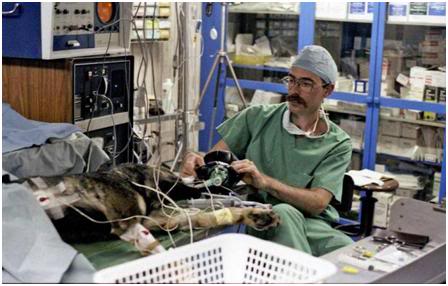
Above: Michael Darwin (Federowicz) with ‘Enkidu’ the second dog to survive and make a full recovery after 5 hours of bloodless perfusion at 5 oC; 18 March, 1984in Fullerton, CA (photo by Hugh Hixon).
Contents
- Personal Background
- Early Cryonics Activities
- Technical Accomplishments
- General Scientific Contributions to Cryonics
- Philosophical and Ethical Contributions to Cryonics
- Controversies
- 2002 to 2010
- Media coverage
- Books About
- Works
- References
|
Personal Background
Born Michael Federowicz in Indianapolis, Indiana, his acceptance of biological evolution and rejection of creationism earned him the nickname “Darwin” among his schoolmates. At the age of seven, he discovered his maternal cousin, Rae Rorhman, with whom he was very close, dead in her home in a state of advanced decomposition. A lifelong and noncompliant diabetic, she had died suddenly and alone, where she lay undiscovered for nearly a week. This event had a profound effect on Darwin and lead to a preoccupation with ways to slow or halt decomposition and ultimately to stop and restart life itself.
As a child, Darwin initially experimented with halting decomposition in small dead animals by immersing them in 70% isopropyl alcohol. In 1965 Darwin gained access to a copy of The Principles and Practice of Embalming by Clarence G. Strub and L. G. Frederick[5] and attempted to improve on preservation by injecting dead animals with formalin. None of these approaches yielded durable preservation and, more importantly to Darwin, none seemed to offer the prospect of allowing the restoration of life after its interruption.
 An avid reader at an early age, Darwin discovered a box of Ace D-series tête-bêche science fiction novels in the attic of an abandoned house in 1965. While a number of the books in this cache had a life changing effect on him, one novel in particular, The Mechanical Monarch[6] by E.C. Tubb had a profound influence on his world view and on the direction of his interests and goals. Tubb’s novel, published in 1957, is the fictional story of the first man sent into space, who becomes marooned in the asteroid belt due to a malfunction of his spacecraft that ends his life when the hull is breached. The spacecraft undergoes decompression; after which the astronaut orbits the cold far reaches of deep space for ~200 years, frozen and lifeless. Ultimately, he is discovered by an asteroid metal miner who transports him to medical facilities on Mars where he is subsequently repaired and resuscitated. Tubb’s novel is doubly prescient in that it not only anticipates the idea of advanced medical technology being capable of reversing freezing damage and restoring life to persons apparently dead, it also clearly articulates the idea of mind uploading. When the recovered astronaut returns to earth, he ultimately discovers that the artificial intelligence that controls every aspect of human life on earth is none other than his close friend and colleague, who was in charge of the project that had sent him into space over 200 years earlier, now uploaded into a near omniscient computer.
An avid reader at an early age, Darwin discovered a box of Ace D-series tête-bêche science fiction novels in the attic of an abandoned house in 1965. While a number of the books in this cache had a life changing effect on him, one novel in particular, The Mechanical Monarch[6] by E.C. Tubb had a profound influence on his world view and on the direction of his interests and goals. Tubb’s novel, published in 1957, is the fictional story of the first man sent into space, who becomes marooned in the asteroid belt due to a malfunction of his spacecraft that ends his life when the hull is breached. The spacecraft undergoes decompression; after which the astronaut orbits the cold far reaches of deep space for ~200 years, frozen and lifeless. Ultimately, he is discovered by an asteroid metal miner who transports him to medical facilities on Mars where he is subsequently repaired and resuscitated. Tubb’s novel is doubly prescient in that it not only anticipates the idea of advanced medical technology being capable of reversing freezing damage and restoring life to persons apparently dead, it also clearly articulates the idea of mind uploading. When the recovered astronaut returns to earth, he ultimately discovers that the artificial intelligence that controls every aspect of human life on earth is none other than his close friend and colleague, who was in charge of the project that had sent him into space over 200 years earlier, now uploaded into a near omniscient computer.
Between 1965 and 1966, Darwin developed an obsession with the idea of suspended animation via cryopreserving organisms as a possible way to preserve life indefinitely.[7] In 1968, at the age of twelve, he qualified for the Indiana state Science Fair with his project “Suspended Animation in Plants and Animals.” He dreamed of becoming an astronaut and applying his research to space travel, as well as using it to escape death indefinitely, thus allowing him to roam the universe in an unending quest of exploration and discovery. His registration was lost and his project never judged, but he was given an honorable mention out of a sense of fair play. At the fair he learned from one of the judges that Dr. James Bedford had been frozen in California.[8] This was the beginning of Darwin’s lifelong involvement in cryonics.
Early Cryonics Activism
Darwin wrote to all of the cryonics organizations active at that time and received a considerable amount of literature from the Cryonics Society of New York (CSNY), as well as a personal letter from the organization’s Secretary, Saul Kent, who was to become a lifelong patron of Darwin’s rapidly growing cryonics technical skills.[9] It was at this time that Darwin also began a life-long association with the then President of CSNY, Curtis Henderson, a man Darwin has described as his greatest mentor and teacher in cryonics. During the summer months of Darwin’s 15th and 16th years he was invited to stay in the Sayville, L.I. NY, home of Henderson (which also housed CSNY’s office and files). It was during this period that Darwin learned much of the practical side of cryonics as it existed at that time and was, in his own words, “mentored by a man whose honesty, integrity and willingness to unflinchingly confront truly terrible problems in cryonics shaped my own outlook and approach to the discipline.” [10] The intense hostility of Henderson’s second wife to cryonics inspired Mike Darwin to begin a study of the many cases where “hostile spouses or girlfriends have prevented, reduced or reversed the involvement of their male partner in cryonics.”[11] It was in Henderson’s home that Darwin first read and was profoundly influenced by the works of the maverick Soviet surgeon V.P. Demikhov[12] and of the Soviet reanimatologist V. A. Negovskii. [13]
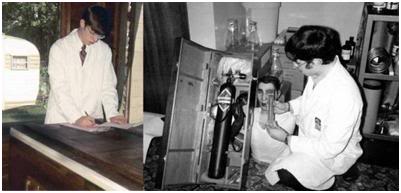 Right: Mike Darwin at his home in Indpls IN in 1973 with cryonics rescue and perfusion equipment holding a flow meter in his hands and temporary dry ice storage container constructed by Darwin (photos by Ella Vinci).
Right: Mike Darwin at his home in Indpls IN in 1973 with cryonics rescue and perfusion equipment holding a flow meter in his hands and temporary dry ice storage container constructed by Darwin (photos by Ella Vinci).
Through CSNY Darwin was introduced to, and began corresponding with an undergraduate student and cryonics activist in Costa Mesa, CA. who had established a cryonics organization for young people, the Cryonics Youth Association (CYA, shortly thereafter renamed the Student Cryonics Association; SCA) which published a monthly, national newsletter, Cryonics News. Darwin immediately joined the CYA in 1969, and in 1970 he founded the Indiana Chapter of CYA, the Student Cryonics Association of Indiana (SCAI). A core objective of the SCAI was to, “obtain perfusion and storage facilities for future members.”[14] By the winter of the following year, the 16-year-old Darwin had acquired virtually all of the equipment and chemicals necessary to carry out blood washout and cryoprotective perfusion of human cryonics patients, and had constructed a foam insulated container for dry ice storage of whole body patients.[15]
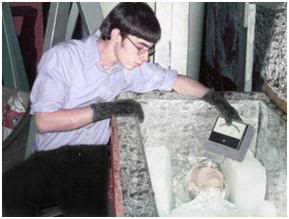 Right: Mike Darwin with cryonics patient Clara Dostal in January of 1972 (photo by Curtis Henderson).
Right: Mike Darwin with cryonics patient Clara Dostal in January of 1972 (photo by Curtis Henderson).
At the age of 17 Darwin was invited by Saul Kent to participate in the cryopreservation of a CSNY member, a 60 year old woman named Clara Dostal who had experienced cardiac arrest from cancer. This experience proved traumatic for Darwin because it exposed the harsh reality that the care being delivered to cryonics patients was extremely primitive and lacking in even the rudiments of a scientific or medical foundation. As a result of the Dostal case, Darwin became extremely focused on placing cryonics on a firm scientific and biomedical footing.
In July of 1973 Darwin made a trip to Southern California to learn the state of cryonics on the West coast and, in particular, to try to determine if rumors about inadequate care of the Cryonics Society of California’s (CSC) cryonics patients had any basis in fact. Darwin met with CSC’s president Robert F. Nelson, as well as CSC’s mortician, Joseph Klockgether. These meetings, and a subsequent meeting with Fred and Linda Chamberlain, who had only recently left CSC to found Alcor, persuaded Darwin that CSC was in serious trouble and that it was very likely that the CSC patients had been thawed out, or otherwise mishandled.[16] It was also on this trip that Darwin, on the premises of an Anaheim-based cryogenics manufacturing and repair firm, Galiso, Inc., had his first personal encounter with James H. Bedford, the first man to be cryopreserved.[17]
 Right: Mike Darwin and Linda Chamberlain stand next to the cryogenic dewar holding the body of James H. Bedford, in July of 1973 (photo by Fred Chamberlain, III).
Right: Mike Darwin and Linda Chamberlain stand next to the cryogenic dewar holding the body of James H. Bedford, in July of 1973 (photo by Fred Chamberlain, III).
In 1974 Darwin moved to California from where he was attending college in Augusta, Georgia and began a year-long collaboration with Fred and Linda Chamberlain where he conducted basic cryobiology research and worked with the Chamberlains to prepare for the cryopreservation of Fred Chamberlain’s seriously ill father.[18] When funding ran out for the effort, Darwin moved back to Indianapolis, IN where, in 1977, he co-founded two cryonics organizations; the non-profit Institute for Advanced Biological Studies (IABS) with Stephen W. Bridge, and the for-profit cryonics service provider company, Soma, Inc., with his lover at the time, Allen J. Lopp, a computer programmer from Lanesville, IN. Soma, Inc., merged with Jerry Leaf’s Cryovita Laboratories in 1981, and IABS merged with the then-California-based Alcor Life Extension Foundation (Alcor) in 1982.[19]
When he began his career as a dialysis technician, he adopted “Darwin” as the surname for his cryonics persona, so as not to end his career in medicine by association with cryonics. He has used both names since that time, and Michael G. Darwin is a legally acknowledged a.k.a. of Michael Federowicz.
Although his only formal training was as a dialysis technician, he is a self-taught expert in the field of cerebral ischemia, [20] and a respected contributor to CCM-L, the international critical care medicine internet discussion group. In 2005 he was an invited co-author of a medical ethics article on the definition of death in the journal CRITICAL CARE.[21] He has been a frequent invited speaker at diverse conferences on critical care medicine, discussing topics ranging from obstacles to new drug development, the use of mild therapeutic hypothermia and combination drug therapy in cardiopulmonary cerebral resuscitation [22], and the possible impact of fully reversible cryopreservation of the human brain on critical care medicine.[23]
Darwin is an openly gay man who has written about the relationship between homosexuality and activism in the early days of cryonics.[24]
Technical Accomplishments
Darwin’s technical contributions to cryonics are manifold. In March of 1973 he co-authored the first technical case report documenting the procedures, problems and responses of a human patient (Clara Dostal) to cryoprotective perfusion and freezing.[25] This report was the first to document glycerol-induced dehydration of the eye by evacuation of the water from the vitreous and aqueous humors, as well as unexpectedly serious dehydration of the skin and other tissues and organs. It also revealed, for the first time, the problem of widespread infarction of skin, and thus presumably other organs, due to post-cardiac arrest blood clotting and small vessel and capillary plugging from red blood cell aggregation and white blood cell adhesion in the capillaries, as well the need to perfuse the pulmonary circulation by applying sternal compressions during perfusion. The paper proposed many changes in cryonics procedures that were not to be implemented until a decade or two later, such as biohazard safety precautions for cryonics personnel, premedication of cryonics patients with an oral anticoagulant (i.e., before medico-legal death while the patient was in the last days of life), administration of PIPES buffer during manual and mechanical cardiopulmonary support (CPS) to combat metabolic acidosis, use of a bubble trap in the perfusion circuit, use of large volumes of cryoprotective perfusate to achieve adequate tissue concentrations of cryoprotective drug(s) before freezing, and careful and detailed documentation of the procedures used and the response of the patients to them.
It is notable that Darwin was the first to acquire and archive patient effluent samples – samples of perfusate that had passed through the patient’s circulatory system – in order to allow for extensive analysis of cryoprotectant uptake and to monitor the release of tissue enzymes indicative of cell injury or rupture. Darwin was also the first to both propose and implement that these samples be held in long term storage with the patient to allow future, as yet unanticipated, biomedical testing to be performed on them, thus avoiding any need to directly sample the cryopreserved patient.[26]
 As a result of the Dastal perfusion and cryopreservation, Darwin was the first to conceive of the idea of an autonomous, bioengineered cell repair and replacement device, which he called the “anabolocyte”:
As a result of the Dastal perfusion and cryopreservation, Darwin was the first to conceive of the idea of an autonomous, bioengineered cell repair and replacement device, which he called the “anabolocyte”:
“The concept (and the name) for the anabolocyte originated in the winter of 1973 after participation in my first human cryopreservation (Clara Dastal) at the Cryonics Society of New York. I was pondering how it might be possible to repair literally billions of non-functional, severely injured cells in this cryopatient. After a restless night worrying over this problem I came up with the idea of genetically engineered leukocytes that would be able to either repair or replace damaged cells and tissue. In 1974 I sketched out some drawings and put the ideas into print.”[27,28]
In 1973 Darwin, et al., conducted the first known vitrification experiments on mammalian (guinea pig) brain slices using the Farrant technique [29] and documented that a solution of 60% (v/v) dimethyl sulfoxide (DMSO) fractures extensively when cooled below its glass transition point; a phenomenon that was later to have profound implications for both cryonics and for researchers attempting to perfect solid state organ preservation via vitrification. This work also demonstrated retention of 95% of the viability in brain slices subjected to cooling to and rewarming from -77oC in the absence of freezing that was present in control tissue as measured by oxygen consumption.[30]
In 1975, on the basis of experiments employing carbon black labeled solutions to re-perfuse ischemic rabbit brains, Darwin proposed induced hypertension during CPR using metaraminol and epinephrine; and cautioned against the use of vasodilatory drugs while CPR was underway [31] anticipating the work of Peter Safar, et al., by a year. [32] In this same document, Darwin introduced the use of methylprednisolone as a membrane stabilizer into cryonics transport procedures and advocated the use of inert gaseous perfusion of the circulatory system as a means of rapidly and evenly cooling the entire human body during freezing, and in particular the brain.
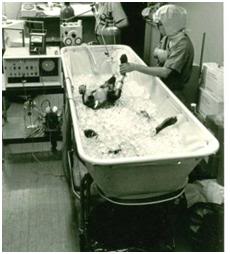 Right: First Portable Ice Bath (PIB) at the facilities of Soma, Inc. in, Indpls., IN in 1979.
Right: First Portable Ice Bath (PIB) at the facilities of Soma, Inc. in, Indpls., IN in 1979.
In 1979, after observing the unacceptably slow rate of cooling in dogs chilled with ice in plastic bags, [33] Darwin invented the Portable Ice Bath (PIB) and documented its superiority in achieving external cooling in this model. The discovery by Darwin of the even slower rate of cooling achieved with human cryonics patients using ice packs [34] led him, starting in 1989, to widely deploy the PIB as a tool for in-field cooling during cryonics patient transport during his tenure as President of Alcor.[35] The PIB remains the standard of care for external cooling in cryonics worldwide through the present.
It was also during this period in Indiana (1977-1980) that Darwin introduced the use of refractometry into cryonics as a means of measuring cryoprotective concentration in patients undergoing cryoprotective perfusion, [36] undertook the first study in cryonics to determine the effects normothermic ischemia (clinical death) on the rabbit brain [37] and of then extant cryopreservation techniques on rabbit brain macroscopic and microscopic structure. This work also uncovered the first evidence that “fractures or planes of cleavage were developing on cooling to liquid nitrogen temperature” was occurring in whole animal brains loaded with high concentrations of DMSO or glycerol.[38]
In cooperation with Jerry Leaf, he began the systematic introduction of extracorporeal medical technology and a medical model to cryonics.[39,40] This effort lead to a collaboration between Leaf and Darwin which culminated in a joint research effort to recover dogs from extended bloodless perfusion under conditions of ultra-profound hypothermia (5oC ) using an intracellular perfusate similar to those employed in organ preservation for transplantation.[41] In these experiments Darwin introduced the use of hemodialysis to normalize blood electrolytes, concentrate plasma proteins and red blood cells, and remove excess water from the animals, eliminating the need for large volumes of costly ‘vascular rinse’ perfusate and greatly reducing the need for transfused blood which was both costly and injurious. After Leaf’s cryopreservation in July of 1991, Darwin continued this work at 21st Century Medicine, extending the length of time from which dogs could be successfully recovered from bloodless perfusion at 5oC from 4 to 5 hours, a record not yet surpassed.
In 1980 Darwin introduced the practice of cranial burr holes into human cryopreservation procedures. [42] The use of burr holes, ~15 -20 mm holes, or windows made in the skull exposing the surface of the brain to view, allowed for monitoring of the adequacy of blood washout in the brain, provided an indication of cryoprotectant equilibration (marked shrinkage or dehydration of the brain indicating poor penetration of agent) and, perhaps most importantly, allowed direct visualization of developing brain swelling (when it occurred) secondary to injury from ischemia so that cryoprotective perfusion could be halted before the brain was herniated, or squeezed out through openings in the cranium, such as those through which the cranial nerves and spinal cord pass.
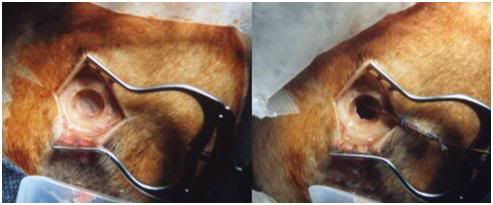 Above: The utility of burr holes in the skull for monitoring the response of the brain to cryoprotective perfusion is illustrated in these photos. At the start of cryoprotective perfusion (left) the brain is of normal volume, whereas near the conclusion of perfusion (right) it has lost substantial volume due to dehydration and has disappeared from view in the burr hole opening (photo by Hugh Hixon).
Above: The utility of burr holes in the skull for monitoring the response of the brain to cryoprotective perfusion is illustrated in these photos. At the start of cryoprotective perfusion (left) the brain is of normal volume, whereas near the conclusion of perfusion (right) it has lost substantial volume due to dehydration and has disappeared from view in the burr hole opening (photo by Hugh Hixon).
In 1983 Darwin demonstrated that inexpensive hollow fiber hemodialyzers used to provide artificial renal replacement could be effectively used as oxygenators in dogs; even under the demanding conditions of rewarming from profound hypothermia.[43] This preliminary report was followed up in May of 1985 with an extensive validation of the concept by Leaf, Darwin and Hixon.[44]
In 1985 Darwin was the first to propose barbiturate, neuromuscular blockade and cardioplegic medications to improve neuroprotection, enhance cooling, and prevent ROSC during stabilization procedures used on cryonics patients. [45] Also in 1985, Leaf and Darwin were the first to successfully undertake in-field extracorporeal support and total body washout of a cryonics patient.[46]
In July of 1984 Darwin, working with Hugh Hixon, introduced silicone oil (5 centistoke polydimethylsiloxane) as a safe, non-toxic, non-inflammable heat exchange medium for cooling cryonics patients from near 0oC to -79oC, replacing isopropyl alcohol or n-propyl alcohol which had been previously used for this purpose; and which Darwin had identified as being capable of dissolving water (ice) from the tissues of cryonics patients subjected to prolonged dry ice storage.[47]
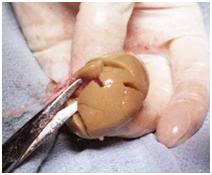 Right: Fractures in a feline kidney as a result of cooling to below Tg, in this case to -196oC, following equilibration of the whole animal with 4M glycerol. Similar fracturing occurs in the brain (photo by Hugh Hixon).
Right: Fractures in a feline kidney as a result of cooling to below Tg, in this case to -196oC, following equilibration of the whole animal with 4M glycerol. Similar fracturing occurs in the brain (photo by Hugh Hixon).
Later that year, overcoming substantial resistance within the cryonics community, Darwin secured permission to perform the first post mortem examinations ever conducted on cryopreserved patients; in this case on the bodies of thee whole body cryonics patients who had been converted to neuropreservation. This work by Darwin, Leaf and Hixon, disclosed multiple ‘cracks’ or fractures in almost every organ system, with only the liver being completely spared and the kidneys only slightly affected. In the remains of one patient, fracturing was so severe that numerous organs were often completely or almost completely transected by fractures.[48] It was Darwin who correctly posited that fracturing was occurring because the patients had been cooled significantly below the glass transition point (Tg) of the water-cryoprotectant mixture present in their body tissues; a phenomenon he had observed over a decade previously in cooling 60% (w/v) DMSO-water solution below its Tg while vitrifying brain slices. This work also demonstrated for the first time that that the cryoprotectant concentration within patients’ bodies varied widely by organ/tissue and were far lower than was either previously thought, or considered to be desirable.[49] Remarks (by Darwin) in this paper foreshadowed the difficult technical problems associated with cooling to below Tg, which continue to be a major source of concern, not only in cryonics, but also in organ and tissue preservation via vitrification, noting:
“If the latter explanation [cooling of non-homogenously cryoprotected patients below Tg] is indeed the correct one, then cooling to very low temperatures in the absence of serious fracturing may be extremely difficult in large biomasses. Perhaps the solution to this problem may be to anneal the patient for a prolonged period of time at or near Tg prior to completing the descent to -196 degrees centigrade. Alternatively, it may be determined to be both safe and feasible to pursue storage at higher temperatures, perhaps in the region of Tg, where there will be no available liquid water/cryoprotective agent to allow for appreciable propagation of chemical reactions.” [50]
In an editorial which accompanied the report documenting the technical findings of the autopsies on these three cryonics patients, Darwin noted that the kinds of damage observed would require “molecular level” repair and he urged cryonicists to abandon ‘simplistic’ macroscopic scenarios for resuscitation:
“What these results do point up is that it is time for those (hopefully few) of us who have been thinking of cryonic suspension in terms of simple viability and traditional surgical repair techniques to wake up and face reality. Contemporary freezing techniques are disruptive and they will require the development of very sophisticated repair techniques. Undoubtedly we will discover damage on the molecular level which is equivalent to or even worse than the fracturing problem we have encountered on a gross level. Repairing such injury will require that we be able to move atoms around almost on a one by one level. It will require that we have tools and engineering capability on a molecular level and that we be able to build molecular repair and fabrication machines–basically our own version of enzymes.” [51]
In 1986 Darwin authored the first text on cryonics standby and transport operations, Transport Protocol for Cryonic Suspension of Humans, which documented procedures for administrative interface between cryonics organizations and medical facilities and coroners, data acquisition, cardiopulmonary support and external cooling, temperature monitoring, intravenous access, pharmacological treatment of ischemia-reperfusion injury, and procedures for safe air or ground transport of the cryonics patient from the site of cardiac arrest to the cryonics organization’s facilities. [52] This work was an extension and refinement of the very first scientifically derived procedure manual for the cryopreservation of humans, Instructions for the Induction of Solid State Hypothermia in Humans, authored by Alcor founders Fred and Linda Chamberlain in 1972.[53]
It was also during this period that Darwin, as President of Alcor, established the first international Cryonics Patient Stabilization Coordinator program which consisted of volunteers who had undergone in-house training and certification in basic cardiopulmonary support and transport procedures (i.e., Certified Alcor transport Technicians) and who had been issued emergency response kits that included a mechanical, compressed oxygen driven heart-lung resuscitator, an array of intravenous medications to reduce ischemic injury and prevent blood clotting, as well as cooling and monitoring equipment including PIBs.[54] By 1988, Darwin had deployed 5 such kits in the US, as well as ones in Toronto, Canada and London, England. [55]
From 1986 to1988 Darwin engaged in extensive in-house research on improved methods of CPR with the goal of improving perfusion and ventilation in cryonics patients. After experimenting with pneumatic vest CPR, simultaneous compression-high pressure ventilation CPR and several other modalities, Darwin settled on high impulse CPR combined with continuous compressions (not stopping compressions to administer ventilations) as a way to increase perfusion and help overcome the cerebral no-reflow phenomenon.[56] This change resulted in a marked increase in mean arterial pressure (MAP) and perfusion (as determined by end tidal CO2 monitoring) in cryonics patients (MAP of 25-30 with conventional CPR versus 60 mm Hg with high impulse continuous compression CPR).[57] Darwin worked with Michigan Instruments, Inc, of Grand Rapids, MI to develop custom-built mechanical heart-lung resuscitators to deliver this new modality of CPR and the first cryonics patient to be treated with this device was Alcor patient A-1068 on August 09,1990.[58] This approach to CPR is essentially the same as cardiocerebral resuscitation CPR, now being advocated by Gordon Ewey, M.D., of Phoenix, AZ.[59] The American Heart Association has also revised its CPR guidelines (in 2007) to alter chest compressions to conform to the high impulse approach and to eliminate pauses for ventilations between compressions, acknowledging the priority of brain perfusion for survival with CPR after cardiac arrest.[60]
 Right: Schematic of the Darwin Esophageal Gastric Tube Airway (illustration by Mike Darwin).
Right: Schematic of the Darwin Esophageal Gastric Tube Airway (illustration by Mike Darwin).
In 1987-88 Darwin developed modifications of the esophageal gastric tube airway (EGTA) and the Combitube airway to incorporate thermocouple probes so probe placement was concurrent with airway placement (eliminating delays in initiating temperature monitoring) and to allow for continuous monitoring of the intrathoracic pressure by measuring the dynamic pressure in the occlusive balloon on this device. Continuous (indirect) monitoring of intrathoracic pressure during CPR allowed for dynamic adjustment of chest compression parameters (force on chest, frequency and depth of compression as well as duty cycle) permitting for individualized optimization of cardiac output during CPR. [61]
In 1989 Darwin proposed the use of elective dehydration for terminally ill cryonics patients who found the quality of life at the end of their illness unbearable, and who were considering suicide or assisted suicide, which would likely result in autopsy. This approach was first implemented with Leaf, et al. in 1990.[62]
In 1987 Darwin proposed that visceral organs from neuropatients that would normally be discarded with the body (cremated) could be used as a surrogate(s) for determining brain viability following transport. This would serve as invaluable feedback on the effectiveness of stabilization procedures and also provide data for quality control. The kidney is an ideal organ for such evaluation because the renal cortex is similarly sensitive to ischemic injury.[63] This technique was first applied clinically in 1990, and demonstrated renal viability in a kidney removed from a cryonics patient following cryoprotective perfusion of the patient’s cephalon (2.5 days after cardiac arrest) that was compatible with survival of the organ upon transplantation.[64]
Beginning in the mid-1980s Darwin, working alone and with Leaf, began systematic evaluation of medications to reduce ischemia-reperfusion injury (IRI), including a multi-modal approach to the problem by experimenting with combinations of drugs that addressed the multiple causes of IRI in mammals.[65] This resulted in the development of an evolving combination of novel, as well as clinically available drugs that were first applied to cryonics patients in 1987.[66] Darwin and Hixon developed in-house capability for sterile preparation and small scale production of these novel injectable drugs in a stable form with a shelf life comparable to that of ethical pharmaceuticals.[67]
The first iteration of this protocol used a combination of 8 drugs not previously employed in cryonics transport operations: 6-hydroxy-2,5,7,8-tetramethylchroman-2-carboxylic acid Trolox), a water-soluble derivative of vitamin E, ascorbic acid (vitamin C) + deferoxamine (the latter to scavenge free radicals generated by vitamin C in the presence of free iron via Fenton’s Reaction), high dose mannitol (hydroxyl radical scavenger and flow promoter) low dose nimodipine and high dose IV trisodium citrate (to reduce damaging influx of calcium into brain cells), dextran-40 (to reduce blood sludging and improve microcirculatory flow), and chlorpromazine to provide cell membrane stabilization during the period of deep hypothermic asanguineous circulatory arrest frequently required to air transport cryonics patients from remote locations where legal death occurred to the cryonics organization’s facilities for perfusion with cryoprotective drugs to reduce or prevent freezing. [68] Since that time, Trolox has become the antioxidant standard against which most other bioactive antioxidants are measured [69] and multimodal approaches to the experimental treatment cerebral IRI initially advocated by Darwin have become commonplace in both stroke and global cerebral ischemia research. [70-72]
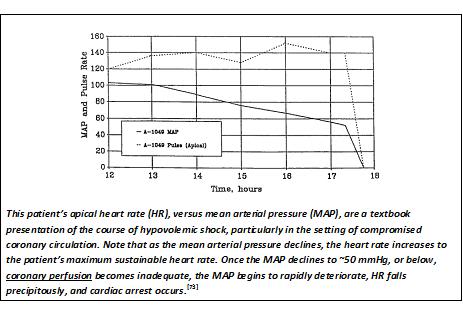 At right: This patient’s apical heart rate (HR), versus mean arterial pressure (MAP), are a textbook presentation of the course of hypovolemic shock, particularly in the setting of compromised coronary circulation. Note that as the mean arterial pressure declines, the heart rate increases to the patient’s maximum sustainable heart rate. Once the MAP declines to ~50 mmHg, or below, coronary perfusion becomes inadequate, the MAP begins to rapidly deteriorate, HR falls precipitously, and cardiac arrest occurs.[73]
At right: This patient’s apical heart rate (HR), versus mean arterial pressure (MAP), are a textbook presentation of the course of hypovolemic shock, particularly in the setting of compromised coronary circulation. Note that as the mean arterial pressure declines, the heart rate increases to the patient’s maximum sustainable heart rate. Once the MAP declines to ~50 mmHg, or below, coronary perfusion becomes inadequate, the MAP begins to rapidly deteriorate, HR falls precipitously, and cardiac arrest occurs.[73]
Darwin was the first to acquire, analyze, and archive, blood/effluent samples from patients. In 1985 he initiated a systematic program of collecting and analyzing effluent samples from cryopatients and began the practice of dividing each sample into at least 3 parts; with one part staying with the patient (inviolable), one being used for immediate analysis of hematological parameters and serum chemistry and biochemistry, and one sample being archived indefinitely so that, as medicine and biotechnology advanced, retrospective studies could be carried out on patients already cryopreserved.
In1989 he introduced and implemented real time vital signs trending to aid in prediction of cardiac arrest (CA) which was first used clinically in 1990.[74]
In 1991, Darwin introduced pulse oximetry into cryonics as a tool to provide early warning of impending cardiac arrest. This was first applied clinically in 1992.[75]
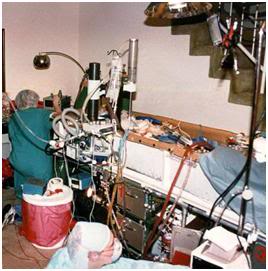 Right: Darwin (bottom center) with patient receiving in-home cardiopulmonary support using the first active compression-decompression heart-lung resuscitator followed by blood washout and extracorporeal support in 1995 (photo by Billy Seidel).
Right: Darwin (bottom center) with patient receiving in-home cardiopulmonary support using the first active compression-decompression heart-lung resuscitator followed by blood washout and extracorporeal support in 1995 (photo by Billy Seidel).
After the discovery of active compression decompression CPR (ACD-CPR) in 1992, Darwin undertook experiments to determine its efficacy in dogs, with and without high impulse CPR. In 1994 Darwin designed the first combination high impulse-ACD-CPR machine which was fabricated by Michigan Instruments in 1994 [76] and applied clinically in cryonics for the time in 1995.[77]
Other technical accomplishments in the period from 1990 through 2002 include:
- Proposed and used in-field (bedside) monitoring of urine specific gravity to monitor the progress of dehydration in cryonics patients refusing food and fluids as a result of noticing the unreliability of anuria (absent the presence of an indwelling bladder catheter in predicting cardiac arrest from dehydration.
- Identification of hypercoagulability as a serious risk of causing sudden and unexpected cardiac arrest due to pulmonary embolism in cryonics patients dying from cancer, or undergoing dehydration during the agonal process, and proposed prophylaxis with vitamin E and aspirin (1989) and implemented it in 1990.[80] He later suggested the use of clopidrogrel (Plavix) to reduce the risk of pulmonary embolism in terminally cryopatients who are determined by their treating physicians to be hypercoagulable (2000).[81]
- Replaced federally controlled, Schedule II barbiturate with propofol as the drug of choice for preventing the return of consciousness in cryonics patients (1997) [82] and introduced the use of potassium chloride as a first-line drug during transport to secure cardioplegia and prevent cardiac auto-resuscitation as a result of cardiopulmonary support during transport operations.[83,84]
- Conceived of premedication of cryopatients in 1972, seriously proposed a comprehensive, evidence based medicine (EBM) level II/III protocol in 1994 [85], and designed and implemented such a protocol in 1995.[86]
- Often during the peri-arrest period, or at or shortly after cardiac arrest, patients defecate or experience leakage of liquid stool due to loss of control of the anal sphincter. The resulting fecal contamination of the circulating water in the PIB in the setting of a cryonics transport poses a health risk to the cryonics personnel attending the patient and can cause serious difficulties with medical or mortuary personnel who may be present or assisting.
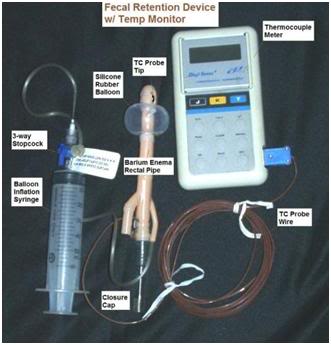 Left: Fecal retention device with associated temperature monitor.
Left: Fecal retention device with associated temperature monitor.
Darwin solved this problem by developing a combination temperature monitor, cold fluid colonic lavage tube, and inflatable silicone rubber silastic retention balloon (1990) which was first applied clinically in 1994.[87] This device proved easy to place, provided a highly reliable seal, and allowed for repeated closed-system irrigation of the colon with ice-cold balanced salt solution to facilitate more rapid core cooling of the patient during transport. It is currently used by two US cryonics organizations.
- First proposed and then implemented both colonic and peritoneal irrigation for rapid post-cardiac arrest cooling cryonics patients (1995) which resulted in the fastest non-invasive cooling of a cryonics patient yet achieved; a tympanic and pharyngeal cooling rate of 1.0oC/min for the first 10 minutes of cardiopulmonary support following pronouncement of legal death.[88]
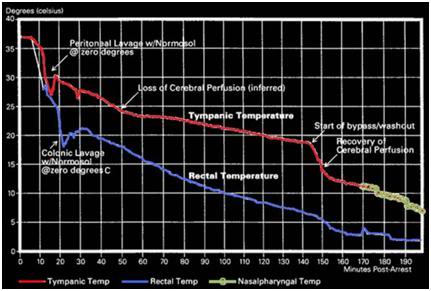 Above: Cooling curve of a cryonics patient receiving highly efficient CPS in conjunction with external cooling in the PIB as well as peritoneal and colonic lavage with ice cold fluids.
Above: Cooling curve of a cryonics patient receiving highly efficient CPS in conjunction with external cooling in the PIB as well as peritoneal and colonic lavage with ice cold fluids.
- Identified the presence of ascites as barrier to effective femoral-femoral cardiopulmonary bypass (CPB) and advocated in-field stab wound /fenestrated tube gravity assisted drainage of ascites before CPB (1997).[89]
- Darwin was the first to identify melatonin and phenyl-N-tert-butylnitrone (PBN) as potent cerebroprotective agents in animal research (1993)[90] and the first to apply them to cryonics patients both as premedication in the peri-arrrest setting, as well as primary cerebroprotective drugs during transport administered immediately after cardiac arrest (1995).[91]
- Developed first micelle-based delivery system for the cerebroprotective lipid soluble drugs d-alpha tocopherol, PBN and melatonin in 1993 [69] which were administered to the first cryonics patient in 1995.[92]
- Selected (1993) and administered the first excitotoxicity blocker to cryopatients (kyneurinine) (1995) as part of a multimodal protocol of drug and other interventions to mitigate cerebral ischemia reperfusion injury which had proved successful in allowing resuscitation of dogs from up to 16 minutes of normothermic cardiac arrest.[93]
- In 1994 Darwin proposed, and in 1995 with his colleagues at 21st Century Medicine conducted, the first successful experimental demonstration of uniform whole body subzero cooling and rewarming using intravascular perfluorocarbons (PFCs) in dogs.[94,95]
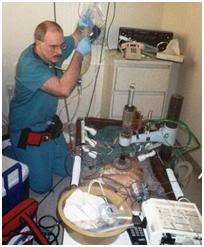 Right: Mike Darwin performing the first chilled perfluorocarbon lung lavage on a cryonics patient (photo by David Hayes).
Right: Mike Darwin performing the first chilled perfluorocarbon lung lavage on a cryonics patient (photo by David Hayes).
Conceived of, and validated in dogs, rapid cooling of the entire body via the lungs by repeated pulmonary lavage to vital capacity (VC) with liquid perfluorocarbon (PFC) and proposed its application to cryonics patients in 1995.[96] In 1997 he invented a scheme of combined gas and liquid PFC ventilation and cooling [97,98] and with Harris, et al., developed liquid assisted pulmonary cooling using a combined gas and liquid (fractional tidal volume) ventilation approach that was demonstrated in animals (1998-2000) to be effective at allowing cooling of rates of 0.5 C/min.[99,100] Darwin carried out the first application of serial lung lavage to vital capacity using cold PFC to speed the induction of hypothermia in a human cryonics patient in 2002.[101]
He has also made notable contributions to mainstream medical research, such as the use of liquid PFC ventilation for rapidly inducing both moderate and mild therapeutic hypothermia in humans for the treatment of the post-resuscitation syndrome, heart attack, stroke and heat stroke.[102] Using the multi-modal pharmacological approach developed by Darwin, Fahy and Woods[103] and working with physician Steve Harris and a team of researchers and technicians at 21st Century Medicine, this group was able to resuscitate dogs without neurological damage following 16 minutes of warm ischemia (clinical death at normal body temperature) — a world record which remains unmatched. [104]
General Scientific Contributions to Cryonics
Along with his associates and mentors Frederick Rockwell Chamberlain III and his wife Linda, Arthur Quaife, Ph.D., and Jerry D. Leaf, Darwin was responsible for attempting to put human cryopreservation procedures employed in cryonics on a medically sound and evidenced based footing. Darwin was the leading advocate of the position that technical and scientific excellence was essential not just to progress in cryonics, but to its survival as a discipline, arguing that poor quality of care for cryonics patients and haphazard, non-scientific or pseudoscientific procedures would damage the credibility of cryonics and lead to medico-legal intervention in the field, possibly making cryonics either illegal or impractical.[105]
Darwin and Leaf placed heavy emphasis on meticulous documentation of each cryonics patient’s care, viewing each as an individual experimental procedure, using as many modalities as were feasible, including the patient’s pre-cardiac arrest medical records, as well as data gathered during the cryopreservation process such as, clinical and laboratory documented response to cardiopulmonary support, cryoprotective perfusion and cooling, imaging (X-ray, CT) photo documentation (still photography, videography) fluid and tissue sampling and thorough post mortem examination of the non-cryopreserved bodies of neuropatients.[106] Darwin worked tirelessly to ensure that autopsies were, wherever possible, conducted on both the bodies of neuropatients and those of patients removed from cryopreservation in order to understand the effects of transport procedures (thus facilitating the development of better methods), instruct cryonics personnel in the pathophysiology of the dying process, and provide teaching and training material for cryonics professionals. [107] All of these procedures have subsequently been discontinued by the two largest US cryonics organizations, Alcor and the Cryonics Institute (CI); both prohibit any photography and neither uses autopsy or tissue or effluent biochemical evaluation as a method of quality control or research.[108]
Darwin was and remains the only cryonics activist or professional to publicly criticize the use of positive, dramatic, incredible, and not reproduced published scientific studies to validate and promote cryonics [109] (i.e., data dredging), most notably the claim by Suda, et. al., to have achieved recovery of near normal metabolic and electrical activity in cats’ brains after freezing to and prolonged storage at -20oC [110,111] and the claim of Blaine C. White reporting neurologically intact resuscitation of humans after an hour of normothermic circulatory arrest via the use of a calcium channel blocking drug.[112]
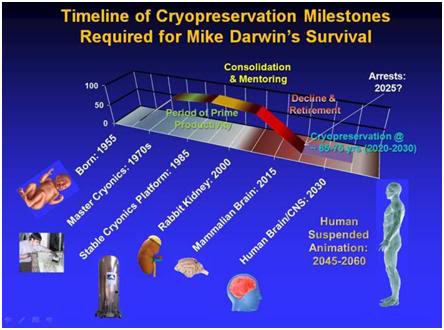 Above: Illustration of milestones Darwin anticipated achieving or facilitating during his “first life cycle;” from his August, 2008 lecture, “Cryonics: Why it has failed and what you can do about It.”
Above: Illustration of milestones Darwin anticipated achieving or facilitating during his “first life cycle;” from his August, 2008 lecture, “Cryonics: Why it has failed and what you can do about It.”
Far more controversially and perhaps more importantly, Darwin has been a relentless advocate of channelling both cryonics organization efforts and resources into animal research based efforts to systematically validate each of the speculations, presumptions and extrapolations upon which cryonics depends upon for its ultimate success; such as that the normothermic ischemic intervals currently experienced by cryonics patients under the best of circumstances (i.e., 5-30 minutes) do indeed allow for survival of memory and personality, that prolonged bloodless ultra-profound hypothermia is survivable with recovery of normal mentation, and finally, that cryopreservation and long term storage do not destroy the information needed to restore cryonics patients to life and health.[113] With the exception of Saul Kent, [114] Brian Wowk, and perhaps a handful of other cryonicists, Darwin took the position, virtually from the beginning of his activism in cryonics, that the development of fully reversible suspended animation within a single human generation (i.e., his lifetime) was critical to the success of the program and to the personal survival of most of its adherents. As a result of this position, from his earliest days in cryonics Darwin was an experimentalist who undertook to validate the effectiveness (or lack thereof) of virtually all of the procedures used to carry out cryopreservation; and a central concern of his was validation that existing cryopreservation techniques were adequate to allow for repair and recovery of cryonics patients using a highly conservative interpretation of information theoretic death criteria.

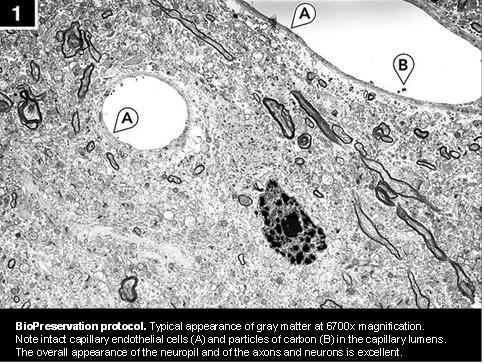 Above: The work of Darwin, et al., demonstrating extensive damage with inadequate cryoprotection due to widespread ice formation in the cryopreserved cat brain (top) and vastly better preservation via freezing using 7.5 M glycerol in the dog brain (bottom).
Above: The work of Darwin, et al., demonstrating extensive damage with inadequate cryoprotection due to widespread ice formation in the cryopreserved cat brain (top) and vastly better preservation via freezing using 7.5 M glycerol in the dog brain (bottom).
Beginning in 1977 using rabbit brains,[115] and continuing throughout the 1980s and 1990s, Darwin lead the effort to conduct animal research that would document the effects of cryopreservation techniques then being used on humans. In 1983, along with Jerry Leaf, he published “Cryoprotective perfusion and freezing of the ischemic and non-ischemic cat,” which showed unexpectedly poor preservation of the cat brain following perfusion with 4 molar glycerol.[116] Darwin provoked great controversy within the cryonics community when he made the following comments on this research in 1992:
“ I think it is also fair to say that anyone, layman or neurophysiologist, who looks at either the pictures in the study by Darwin, et al., or the pictures generated by Fahy of freeze-substituted brains (showing massive histological disruption by ice) will be given pause for thought about the workability of cryonics.” [117]
In 1995 Darwin, et al., published the “Effects of a human cryopreservation protocol on the ultrastructure of the canine brain” demonstrating that the use of greatly increased concentrations of glycerol (adopted because of the demonstrated inadequacy of the earlier techniques employing lower glycerol concentrations) was effective at preserving brain structure such that, on the basis of electron microscopic examination, both cellular structure and neuronal interconnectivity were well preserved.[118] This is perhaps his most important scientific contribution to cryonics.
Philosophical, Ethical, and Business Contributions to Cryonics
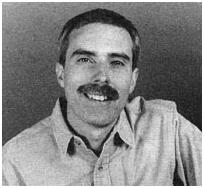 Left: Mike Darwin during his presidency of Alcor in 1986 (photo by Luigi Warren).
Left: Mike Darwin during his presidency of Alcor in 1986 (photo by Luigi Warren).
In 1979 the decomposing bodies of nine cryonics patients were discovered in Oakwood Memorial Park Cemetery in Chatsworth, California, where they had been stored by the head of CSC, Robert F. Nelson (aka Frank Bucelli), under the auspices of his associated organization, Cryonic Interment, Inc. In late July of 1980, Darwin, along with his high school friend and IABS colleague Joe Allen, removed two badly decomposed cryonics patients from their storage dewar at a facility located in Mt. Holiness Cemetery in Butler, New Jersey. The facility had been operated as a branch of Cryonic Interment, Inc. The condition of the remains and the gruesome conditions under which Darwin and his colleague had to work left a lasting impact on Darwin that are perhaps best articulated in his own words written less than a year after the event:
“What happened to those two poor souls was inexcusable, avoidable and unnecessary. The amount of unthinkable stupidity required to produce the mess we found still awes me as I sit here at the typewriter. My experience with this case has filled me with anger and has further broken down my tolerance for those who would pursue cryonics with anything but good sense and complete commitment.” [119]
During his tenure as President of Alcor, Darwin’s approach to cryonics and its dissemination may fairly be described as radical or even militant. In his 1983 essay “Why We Are Cryonicists” he argues that cryonics is a moral imperative for human civilization on par with rendering life saving resuscitation to a victim of heart attack; and he foreshadows a major shift in communicating cryonics to the public, namely abandonment of the words “after death” and “dead” to describe cryonics and cryonics patients (subsequently more completely articulated by Brain Wowk, Ph.D. in 1988 [120] ) when Darwin states:
“Cryonics is not about “freezing dead people” since we do not agree with the contemporary medical definition of death which is based solely on the physician’s immediate ability to restore function — an ability that will change as medical technology evolves. Today, no one considers a patient in cardiac arrest who is receiving CPR in an attempt to restore life as dead. Similarly, we know that cryonics patients retain the structure and information content which constitute the basis of their personal identity and humanity to allow for restoration of life. We steadfastly refuse to concede they are dead (irreversibly lost to life) because we believe medicine will advance to a point where it can repair damaged brain structure and restore them to life, health and youth.”
In 1982 Darwin co-authored with Stephen Bridge the first article to seriously address the cost of cryonics and to itemize all of the equipment and consumables used in the cryopreservation process. This article, [121,122] and a revised version, which later appeared in the Alcor publication Cryonics: Reaching For Tomorrow, which Darwin co-authored with Brian Wowk, [123,124] provided the first rigorous basis for determining the actual costs of the procedure, as well as planning for future contingencies depending upon technological changes and the degree to which cryonics was accepted, and therefore might experience economies of scale.
In March of1984, Darwin received a copy of the manuscript that was to become the book Engines of Creation by K. Eric Drexler.[125] Over the next five years Darwin and Hixon, and later Brian Wowk as well, worked to introduce the idea of nanotechnology as a possible route to repairing and resuscitating cryonics patients, while at the same time working to inform and recruit highly respected scientists such as Drexler and Ralph C. Merkle into cryonics activism.[126]
Darwin was a vocal advocate of the rights of cryopreserved patients as well as the rights of those who did not wish to be cryopreserved. He introduced the idea of informed consent into cryonics and authored the first informed consent document, a version of which is still in use by Alcor [127] and by the American Cryonics Society [128] today. Darwin began the now universal practice of hanging pictures of cryonics patients throughout the cryonics facility so that their individuality and humanity would not be taken for granted; especially by cryonics personnel, or members of the cryonics organization caring for them, who had become involved in cryonics long after those patients were cryopreserved.[129] While president of Alcor he directed that a window be placed between his office and the area of the facility where the patients were stored so that he would “always be reminded in my work that my first duty is to those who are now completely helpless and totally dependent upon Alcor for their survival.” [130]
In 1990 Darwin authored the first set of criteria for accepting “at need” (terminally ill or legally dead non-member) cases; criteria which emphasized both informed consent and the prospective patient’s legal and mental competence to execute cryopreservation; either for oneself or on behalf of another.[131] He was the first to both articulate and implement Curtis Henderson’s admonition against “ third-party funding” of cryonics patients, whereby relatives or other interested parties made periodic payments (usually quarterly or annually), to maintain a patient in cryopreservation. Under Darwin’s leadership, Alcor became the first cryonics organization to ban such arrangements and to publicly call for industry-wide adoption of same.[132] In1982 he initiated the successful effort to rescue two third party funding patients in the care of Trans Time, Inc., in Berkeley, CA whose son, who was providing the money for their care on a pay as you go basis, was killed in an automobile accident leaving them bereft of funding. [133,134] He was a strong advocate of providing charitable assistance to Alcor members in distress and worked to facilitate the cryopreservation of at least two patients now in Alcor’s care who were in financial need. In 2007 he attempted, unsuccessfully, to facilitate the cryopreservation of long time Alcor member and cryonics pioneer Marcelon Johnson working with David Pizer and his Venturist organization to raise the funds needed for her cryopreservation.[135]
Darwin was co-founder and co-editor (1977 to1988) of Alcor’s monthly magazine Cryonics, and was a prolific communicator about cryonics, via the magazine as well as via the print and electronic media, lectures and the Internet; not only about technical matters, but about business, philosophical and ethical issues in cryonics, as well. Continuing in the footsteps of his primary mentor in cryonics, Curtis Henderson, Darwin also took the immensely unpopular position that “There is no such thing as feel good cryonics,” meaning that optimism and faith in the future should never be allowed to distract cryonics advocates from the hard choices, challenges, and inadequacies of procedures in the real world.” It has been said of him that he “was the most informed and credible critic of cryonics and that, as a result, he was the most hated man in cryonics.” [136]
In 1983, in keeping with Darwin’s position of conservatism and concern about over-optimism in cryonics, he initiated two actions to provide greater safety for cryonics patients; a steel reinforced concrete vault for the storage of Alcor’s neuropatients, and a controversial policy known as the 10% Rule, whereby 10% of all revenues flowing into Alcor would be diverted (irrevocably) to the Patient Care Fund (now the Patient Care Trust) – the entity charged with providing the financial resources for the long term care and eventual resuscitation of Alcor’s patients. Darwin, a student of the history of technology, was concerned that cryonics organizations not make the mistake that many innovators and engineers do when applying novel technology to undertakings such as bridge building, steamship engineering or tall building construction by failing to provide sufficient safety margins.
He argued that it was prudent, if not essential, that the same Factor of Safety (FoS) calculations be applied to cryonics patient care funding as are routinely applied in contemporary civil construction to allow for “emergency situations, unexpected loads, misuse, or attrition.” He was also greatly influenced by George Samuel Clason’s book, The Richest Man in Babylon, and believed that cryonics patients, like their living counterparts, could only keep pace with the social, political and economic hazards of the world by the practice of ongoing savings and investment. Since cryonics patients could no longer generate personal income through work, Darwin believed it the responsibility of the organizations caring for them to save and invest for them, over and above the money they themselves had provided for their long term care and recovery from cryopreservation. In The Richest Man in Babylon, Clason advises that everyone save 10% of their gross income and Darwin proposed, and maneuvered into existence, a policy creating a savings program for Alcor’s patients in the form of 10% of the organization’s gross revenues; the 10% Rule, a policy that was implemented in 1983 [137] and subsequently abandoned by Alcor over the period of 1992-94.[138]
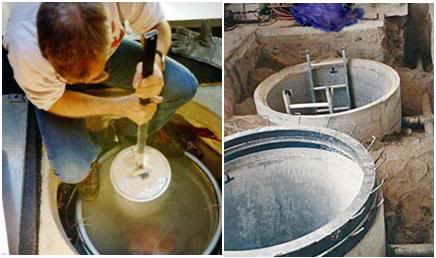 As was the case with the 10% Rule, the use of hardened, earthquake, fire, ballistic and blast resistant “vault protected” storage of cryonics patients, which Darwin designed and implemented with Hugh Hixon in 1983-4, (above left) [139,140] was also abandoned by Alcor not long after their move from Riverside, CA to Phoenix, AZ in 1994.[141] Darwin also originated the idea of using underground modular, concrete lined silos (fabricated from inexpensive, pre-cast steel reinforced concrete water drainage pipes) sunk into the floor of the cryonics facility to protect patients against earthquake, wind, fire, flood, and vandalism; a proposal that was implemented by Paul Wakfer and Mark Connaughton at the facilities of CryoSpan, Corporation, in Rancho Cucamonga, CA in 1995 (above right) [142,143] but which has not been used since.
As was the case with the 10% Rule, the use of hardened, earthquake, fire, ballistic and blast resistant “vault protected” storage of cryonics patients, which Darwin designed and implemented with Hugh Hixon in 1983-4, (above left) [139,140] was also abandoned by Alcor not long after their move from Riverside, CA to Phoenix, AZ in 1994.[141] Darwin also originated the idea of using underground modular, concrete lined silos (fabricated from inexpensive, pre-cast steel reinforced concrete water drainage pipes) sunk into the floor of the cryonics facility to protect patients against earthquake, wind, fire, flood, and vandalism; a proposal that was implemented by Paul Wakfer and Mark Connaughton at the facilities of CryoSpan, Corporation, in Rancho Cucamonga, CA in 1995 (above right) [142,143] but which has not been used since.
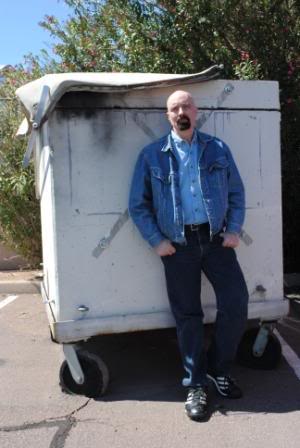 Mike Darwin stands beside discarded neuropatient protective vaults in the parking lot of the Alcor Life Extension Foundation in March, 2011 (photo by Stanislaw Lipin).
Mike Darwin stands beside discarded neuropatient protective vaults in the parking lot of the Alcor Life Extension Foundation in March, 2011 (photo by Stanislaw Lipin).
Certainly Darwin’s most underappreciated and perhaps most important contribution to cryonics, technical or otherwise, was his identification of the “no-feedback problem” [144] as a central failure mode in all cryonics operations to date. He believed that the problem with cryonics is that neither the patient nor their family or other interested parties, will experience any objectifiable results or outcome from the procedure, at least not in their lifetimes.[145,146] As Darwin has written: “There is no feedback: no normal corrective market mechanisms; no crippled patient, no person in pain, and no loss suffered and reported upon as a result of flawed cryonics procedures. A badly cryopreserved patient looks as good as or better than a well cryopreserved patient. Shortcuts, missteps, and even outright negligence that severely injure cryonics patients cannot be detected or remedied if the patient, or those caring for him, has no way of knowing that such damaging events have occurred.” Darwin saw this as “a corrosive, single point of failure that would ultimately degrade or even destroy cryonics as a whole,” unless what he termed “artificial” or “surrogate” feedback mechanisms, such as” laboratory evaluation of markers of injury, meticulous documentation of the physical procedures employed, and surrogate markers for brain viability are put into place and adhered to.” [147]
The subject of many mass media articles, his policy when president of Alcor was to avoid the mass media, believing that cryonics could not be proselytized or grown by incomplete, superficial and almost always inaccurate print and television news stories. While his mentor Curtis Henderson believed that cryonicists “were born not made,” [148] Darwin believed that cryonicists would have to be “born first and then made.”[149] In other words, that acceptance of cryonics would require that a new generation be born into a world where cryonics was a commonplace and accepted part of the popular culture; for example, be the subject of, or an accepted plot mechanism in literature, television and other manifestations of popular culture.[150] To this end, he believed that mass media coverage of specific cryonics personalities, organizations and activities had almost no immediate benefit, but that the cumulative effect was to “enrich the cultural groundwater” with the idea of cryonics thus preparing the way for a new generation to grow up comfortable and at ease with the idea; the polar opposite of the situation that existed after cryonics was first introduced in 1964.[151-153]
Controversies
In a field that arguably is the working definition of controversial, Darwin has unarguably been one of its most controversial figures. On December 9, 1987 Darwin made the decision to remove Dora Kent 83, the mother of Saul Kent, from the Care West-Mission Nursing Center in Riverside, CA where she was dying of Alzheimer’s disease and pneumonia to Alcor’s Doherty Street facility a few miles away.[154] On December 11, Alcor personnel pronounced Mrs. Kent dead and removed her head to be cryopreserved. Because the death occurred in a non-residential area, zoned for light industrial and commercial enterprises, the case was brought to the attention of the Riverside County Coroner and on December 23rd, the coroner’s office announced it was conducting an investigation to determine if cryonics procedures were initiated before Mrs Kent was legally dead. This action spawned a media firestorm that spread around the Western world with newspapers and magazines in Europe, South America and Australia reporting the story.[155,156]
On January 7, 1988 the Coroner’s Office served a search warrant on Alcor and six people, including Darwin, were taken into custody in handcuffs by the Riverside Police Department for questioning, and subsequently released. Boxes of documents and 35 mm slides were seized and authorities discovered at that time that Dora Kent’s head was nowhere to be found. Another search warrant was served on January 12 and a protracted legal battle between Alcor and the Riverside Coroner began to unfold. A consequence of this highly publicized incident was the action of the California Department of Health Services to effectively outlaw the practice of cryonics. These events had a devastating and lasting effect on Darwin leaving him unable to continue as Alcor’s president and suffering from post traumatic stress disorder.[157] Fortunately, Alcor won this legal battle, establishing an important precedent for the practice of cryonics both in California, and in the US as a whole.
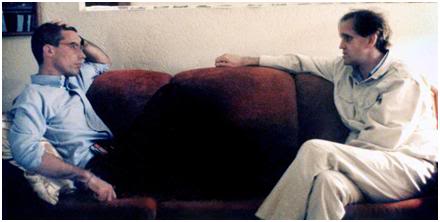 Mike Darwin (left) and Saul Kent (right), 12 May, 1987 at Kent’s home in Riverside, CA.
Mike Darwin (left) and Saul Kent (right), 12 May, 1987 at Kent’s home in Riverside, CA.
In 1993 Alcor underwent schism, with Darwin being the first to leave,[158] and Saul Kent the nexus of the rift.[159]
In order to understand the basis for this schism, and thus much of what has happened to Darwin and Alcor subsequently (including various sensational claims of alleged misconduct in a recent book by a disgruntled former Alcor employee [160]), it is necessary to understand that cryonics began as a radical social movement as much as, or more than, as a scientific or technical undertaking. Until the mid to late 1970s cryonics adherents referred to it as “the cryonics movement” or simply as “the movement.”[161,162] Cryonicists viewed cryonics as being a globally transformative idea; one that would remake, and in some cases abolish, core human institutions such as inheritance, marriage, the family, and religion with the advent of a “freezer-centered society.” [163] None held this view more strongly or vocally than CSNY’s Saul Kent [164,165] and Curtis Henderson.[166]
A consequence of this is that the dynamics of cryonics organizations, and especially of Alcor, as the ideological successor to CSNY, were often emotionally charged, and as is especially the case with any ideologically driven human institution, internal organizational conflicts and partisan politics were not infrequently heated, vituperative, and intensely personal.[167]
The lynchpin that held these diverse interests and personalities together was Alcor vice president Jerry Leaf. One unappreciated consequence of his sudden and unexpected cryopreservation in July of 1991 was the impact the absence of his quiet authority and enormously stabilizing influence would have on the various strong personalities and their diverse interests and objectives towards Alcor in particular, and cryonics as a whole. Additionally, Leaf’s control over the medical and surgical service delivery component to Alcor, via his Cryovita Laboratories, Inc., provided a powerful balancing check on internal power politics. Thus, Leaf’s absence critically destabilized the leadership dynamics of the organization.
While much has been made of the “mystery” of Darwin’s departure from Alcor in 1992, the real mystery (if any) is that this didn’t happen shortly after he resigned as president and became an employee in an organization he had formerly run. The August 6, 1992 compendium, “It’s Time for a Change” produced by Saul Kent [168], in what proved an ultimately successful, but nevertheless unsatisfactory effort to replace Alcor president Carlos Mondragon (the organization still suffered schism) provides ample reasons, and an astonishingly candid degree of insight into the proximate reasons for Darwin’s dissatisfaction and departure, as well as for the subsequent contentious split of Alcor in 1993.[169]
Darwin was a long-time friend and cryonics service provider to 1960’s counterculture movement and LSD advocate Timothy Leary. [170] When Leary changed his mind about cryopreservation, Darwin arranged for an expert in pain management and end of life consultation, David W. Crippen, MD, FCCM, Associate Professor of Critical Care Medicine at the University of Pittsburgh Medical Center in Pittsburgh, PA,[171] to visit Leary and work with local physician Steven B. Harris to enter Leary into hospice care. Acting as a subcontractor to Alcor, Darwin also oversaw the cryoprotective perfusion of Baseball great Ted Williams in July of 2002.[172]
In the closing months of 1999 Darwin posted several written communications on the popular cryonics list-serve CryoNet, the last he was to post there for nearly a decade. In one of the last of these posts, “Clamoring for anything better,” he reiterated his concerns about the “no-feedback problem” in cryonics and expressed what appeared to be weariness and frustration at the lack of accountability of cryonics organizations, as well as the lack of willingness of cryonicists as a whole to hold them accountable.
After leaving Twenty-First Century Medicine, Inc., in 2001, Darwin attempted, unsuccessfully, to launch a cryonics services and biomedical research company Kryos, Inc., which appears to have been modelled on his earlier effort with BioPreservation.[173] In 2002 Darwin was a principal in the start-up of Suspended Animation, Inc., and in fact selected the name of the company. His involvement with the company was brief, and he left its employ shortly after the transport and cryoprotective perfusion of Ted Williams by the company in July of 2002.
2003 to 2010
Darwin has apparently had little involvement with organized cryonics since 2003. In 2008 he published a lengthy monograph on the blog Depressed Metabolism, dealing with the issues of anesthesia and cardioplegia in cryonics patients, and he also published there on technical matters relating to cardiopulmonary resuscitation in medicine, and cardiopulmonary support in cryonics. [174] In that same year, a book chapter, ‘The Intensive Care Unit of the Future,’ which he co-authored with Brian Wowk, and which deals with the speculative application of cryonics in the setting of critical care medicine, appeared in End-Of-Life Communication in the ICU: A Global Perspective edited by David W. Crippen, and published by Springer-Verlag. He delivered a well reviewed lecture comprising a failure analysis of cryonics, “Cryonics: Why It has Failed and Possible ways to Fix It” to the Transhumanist organization ExtroBritannia in August of 2008.[175]
Also in 2008 he co-authored with Aschwin and Channa deWolf the intensely controversial article, “Is That What Love is? The Hostile Wife Phenomenon in Cryonics” which became the subject of a New York Times Magazine article, “Until Cryonics Do Us Part,” which in turn generated wide coverage and controversy in the blogosphere and other media.[176-181]
Darwin travels widely and has published his observations and opinions about cryonics activities outside the US and, notably, was quoted extensively in an article “The Dad’s Army of British Cryonics” about the British cryonics organization Cryonics UK, which appeared in the British national newspaper The Guardian , in November of 2009.
Media Coverage
Beginning in his teens,[183, 184] Darwin was interviewed by, or has been the subject of uncounted print media articles, [185-191] and he has been the guest on many television and radio programs; in the US, most notably: The Oprah Winfrey Show,[192] The Phil Donahue Show,[192] and CNN’s Larry King Live;[193] as well as the BBC’s Kilroy, [195] and numerous chat shows in Australia during the 1980s.
Books About
Darwin has been the subject of, or the model for a character in a number of books, including Great Mambo Chicken And The Transhuman Condition: Science Slightly Over The Edge by Ed Regis, ISBN 0-201-09258-1, Perseus Books (1990); Physical Evidence, a Dr. Eric Parker forensic thriller by Arthur Lyons and Thomas Noguchi, ISBN 9780515104530, Jove Pubs, New York, New York, U.S.A, (1990); Mothermelters: The inside story of Cryonics and the Dora Kent Homicide by former Riverside County Deputy Coroner Alan Kunzman (with Paul Nieto), ISBN 1410791998, AuthorHouse, Bloomington, IN (January 6, 2004), and most recently, Frozen: My Journey into the World of Cryonics, Deception, and Death by former Alcor employee Larry Johnson (and Scott Baldyga), Vanguard Press, New York City (October 6, 2009).
Works
Federowicz, MD, et al. Perfusion and freezing of a 60-year-old woman. Manrise Technical Review. 3(1); 9-32:1973. http://www.lifepact.com/images/MTRV3N1.pdf Retrieved 2010-08-31.
Darwin, MG. The anabolocyte: a biological approach to repairing cryoinjury. Life Extension Magazine: A Journal of the Life Extension Sciences. 1(July/August 1977): http://www.nanomedicine.com/NMI/1.3.2.1.htm Retrieved 2010-08-31
Darwin, M. A question of time. IABS Newsletter #7, Institute for Advanced Biological Studies, Indpls, IN, August 1979, pp. 4-6. http://www.alcor.org/cryonics/cryonics8103.txt. Retrieved 2010-09-29.
Darwin, MG. Water and oil. Cryonics. Published by the Institute For Advanced Biological Studies, Inc., Indpls, IN, #9 April, 6-8:1981. http://www.alcor.org/cryonics/cryonics8104.txt. Retrieved 2010-09-29.
Darwin, MG, Leaf, JD, Noble, C. Pilot study in total body washout. Cryonics. #10 May,1981:11-13. http://www.alcor.org/cryonics/cryonics8105.txt. Retrieved 2010-09-29.
Darwin, MG, Interview with Curtis Henderson. Cryonics. #12, July,1981:22-29. http://www.alcor.org/cryonics/cryonics8107.txt. Retrieved 2010-09-29.
Darwin, M. Interview with Saul Kent, Cryonics. #16, November,1981:13-20. http://www.alcor.org/cryonics/cryonics8111.txt. Retrieved 2010-09-29.
Darwin, M, with Bridge, S. The bricks in the wall. Cryonics. #16, November, 1981:1-7. http://www.alcor.org/cryonics/cryonics8111.txt. Retrieved 2010-09-29.
Darwin, M. A western tragedy. Cryonics. #17, December, 1981:2-6. http://www.alcor.org/cryonics/cryonics8112.txt. Retrieved 2010-09-29.
Bridge, SW and Darwin, M, The high cost of cryonics, Part I, Cryonics, January, 1982, pp. 13-26: http://www.alcor.org/cryonics/cryonics8201.txt Retrieved 2010-08-31.
Bridge, SW and Darwin, M, The high cost of cryonics, Part II, Cryonics, February, 1982, pp. 6-15: http://www.alcor.org/cryonics/cryonics8202.txt Retrieved 2010-08-31
Darwin, M. Report on the use of the Cordis-Dow hollow fiber dialyzer as a membrane oxygenator in profound hypothermia. Cryonics. 4(9);3-5:1983: http://www.alcor.org/cryonics/cryonics8309.txt Retrieved 2010-08-31.
Darwin, M. And Leaf, JD. Cryoprotective perfusion and freezing of the ischemic and nonischemic cat: http://www.cryonet.org/cgi-bin/dsp.cgi?msg=1389 — http://www.cryonet.org/cgi-bin/dsp.cgi?msg=1390 — http://www.cryonet.org/cgi-bin/dsp.cgi?msg=1391 – http://www.cryonet.org/cgi-bin/dsp.cgi?msg=1392 Retrieved 2010-08-31. See also: Federowicz, MG. and Leaf JD. Cryonics. issue 30, p.14, January, 1983. http://www.alcor.org/cryonics/cryonics8301.txt Retrieved 2010-09-04.
Leaf, JD, Federowicz, M, Hixon, H. Hemodialyzers as experimental hollow fiber oxygenators for biological research: a preliminary report. Cryonics. 5(5);10-19:1984: http://www.alcor.org/cryonics/cryonics8405.txt Retrieved 2010-08-31.
Darwin, M, Hixon, H. Evaluation of heat exchange media for use in human cryonic suspensions. Cryonics. 5(7);17-36:1984: http://www.alcor.org/cryonics/cryonics8407.txt Retrieved 2010-08-31.
Federowicz, M., Hixon, H., and Leaf J. Post-mortem examination of three cryonic suspension patients. Cryonics. 5(9);16-28:1984: http://www.alcor.org/cryonics/cryonics8409.txt Retrieved 2010-08-31
Leaf, JD, Federowicz, M, Hixon, H. Case report: two consecutive suspensions, a comparative study in experimental human suspended animation. Cryonics. 6(11):13-38;1985: http://www.alcor.org/Library/html/casereport8511.html Retrieved 2010-08-31
Darwin, MG. Transport Protocol for Cryonic suspension of Humans. Alcor Life Extension Foundation, Fullerton, CA, 1986. http://www.alcor.org/Library/html/1990manual.html Retrieved 2010-09-29.
Darwin, MG, Leaf, JD, Hixon, H. Case report: neuropreservation of Alcor patient A-1068. 1 of 2, Cryonics. 7(2);17-32, 1986: http://www.alcor.org/cryonics/cryonics8602.txt and Part 2 of 2: Cryonics. 7(3);15-29, 1986: http://www.alcor.org/cryonics/cryonics8603.txt Retrieved 2011-02-05.
Darwin, M. The dog and phony show. Cryonics 8(5)1987:3-9. http://www.alcor.org/cryonics/cryonics8705.txt Retrieved 2010-09-29.
Darwin, M. with Harris, SB. How to avoid autopsy III: The problem of atherosclerotic disease. Cryonics. 8(12)1987:32-46. http://www.alcor.org/cryonics/cryonics8712.txt Retrieved 2010-09-29.
Darwin, M. Long time Alcor member enters biostasis. Cryonics. 9(6)1988:2-12. http://www.alcor.org/cryonics/cryonics8806.txt Retrieved 2010-09-29.
Darwin, M. The door into nowhere. Cryonics. 9(6)1988:16-17. http://www.alcor.org/cryonics/cryonics8806.txt Retrieved 2010-09-29
Darwin, M. Remote standby and Apache II. Cryonics. 1988 9(12):6-8. http://www.alcor.org/cryonics/cryonics8812.txt Retrieved 2010-09-29.
Darwin, M. Them and us. Cryonics. Cryonics. 1988 9(12):8-12. http://www.alcor.org/cryonics/cryonics8809.txt Retrieved 2010-09-29.
Darwin, M. with Harris, SB, The Future of Medicine. Cryonics. 9(2)1989:31-39. http://www.alcor.org/cryonics/cryonics8802.txt Retrieved 2010-09-29.
Darwin, M. Keystone coroners. Cryonics. 9(10)1989:8-17. http://www.alcor.org/cryonics/cryonics8810.txt Retrieved 2010-09-29.
Darwin, M. But what will the neighbors think? A discourse on the history and rationale of Neurosuspension. Cryonics. 9(10)1989:40-55. http://www.alcor.org/cryonics/cryonics8810.txt Retrieved 2010-09-29
Darwin, M. Dick Jones enters biostasis. Cryonics. 10(1)1989:2-8. http://www.alcor.org/cryonics/cryonics8901.txt Retrieved 2010-09-29.
Darwin, M. A suspension in Detroit. Cryonics. 10(5)1989:21-35. http://www.alcor.org/cryonics/cryonics8905.txt Retrieved 2010-09-29.
Darwin, M. A major advance in suspension patient support,. Cryonics. 10(8)1989:7-14. http://www.alcor.org/cryonics/cryonics8908.txt Retrieved 2010-09-29.
Darwin, M. Worst case scenario, Cryonics. 10(11)1989:20-35. http://www.alcor.org/cryonics/cryonics8911.txt Retrieved 2010-09-29.
Darwin, M. Guidelines for accepting nonmembers for cryonic suspension at Alcor. Cryonics. 199011(4)1990:6-13. http://www.alcor.org/cryonics/cryonics9004.txt Retrieved 2010-09-29.
Darwin, M. Cardiopulmonary support: Evaluation and intervention. Cryonics. 11(4)1990:26-31. 2010-09-29. http://www.alcor.org/cryonics/cryonics9004.txt Retrieved 2010-09-29.
Darwin, M, Bridge S. The cryonic suspension of A-1242. Cryonics 11(10)1990:18-22. 2010-09-29. http://www.alcor.org/cryonics/cryonics9010.txt Retrieved 2010-09-29.
Darwin, M. Looking at yesterday, seeing tomorrow. Cryonics. 12(3)1991:14-14. 2010-09-29. http://www.alcor.org/cryonics/cryonics9103.txt Retrieved 2010-09-29.
Darwin, M. Reducing ischemic damage in cryonic suspension patients by premedication. Cryonics. 12(4)1991:13-15. 2010-09-29. http://www.alcor.org/cryonics/cryonics9104.txt Retrieved 2010-09-29.
Darwin, M. Cold war: the conflict between cryonicists and cryobiologists, part I. Cryonics 12(6)1991:4-16. http://www.alcor.org/cryonics/cryonics9106.txt Retrieved 2010-09-29.
Darwin, M. Cryonics intellectual property and the problem of the Commons. Cryonics 12(6)1991:18-22. http://www.alcor.org/cryonics/cryonics9106.txt Retrieved 2010-09-29.
Darwin, M. 2-9 Cold war: the conflict between cryonicists and cryobiologists, part II. Cryonics . 12(7)1991:2-9. http://www.alcor.org/cryonics/cryonics9107.txt Retrieved 2010-09-29.
Darwin, M. 2-9 Cold war: the conflict between cryonicists and cryobiologists, part III. Cryonics. 12(8)1991:5-10. http://www.alcor.org/cryonics/cryonics9108.txt ISSN 1054-4305. Retrieved 2010-09-29.
Darwin, M. Evaluation of the condition of Dr. James H. Bedford after 24 years of cryonic suspension. Cryonics. 12(8)1991:22-24. ISSN 1054-4305. http://www.alcor.org/cryonics/cryonics9108.txt Retrieved 2010-09-29.
Darwin, M. Total eclipse. Cryonics. 12(9)1991:16. http://www.alcor.org/cryonics/cryonics9109.txt ISSN 1054-4305. Retrieved 2010-09-29.
Darwin, M. Jerry Leaf enters cryonic suspension. 12(9)1991:19-25. http://www.alcor.org/cryonics/cryonics9109.txt ISSN 1054-4305. Retrieved 2010-09-29.
Darwin, M. How to know if sudden cardiovascular death awaits you. Cryonics. 12(12)1991:19-21. http://www.alcor.org/cryonics/cryonics9112.txt ISSN 1054-4305. Retrieved 2010-09-29.
Darwin, M. The cryonic suspension of A-1184. Cryonics. 13(8):1992:9-11. http://www.alcor.org/cryonics/cryonics9208.txt Retrieved 2010-09-29.
Darwin, M, Bridge, S, The case for neuropreservation. Cryonics. #2, April, 1982:10-13. http://www.alcor.org/cryonics/cryonics8204.txt Retrieved 2010-09-29.
Darwin, M. Cryonics and cryobiology. Cryonics. #23, June 1982:1-9. http://www.alcor.org/cryonics/cryonics8206.txt Retrieved 2010-09-29.
Darwin, M. Cryonics and life . Cryonics. #27, October, 1982:5-6. http://www.alcor.org/cryonics/cryonics8210.txt Retrieved 2010-09-29.
Darwin, M. Cryonics earthquakes and survival. Cryonics. # 29, December, 1982:14-19. http://www.alcor.org/cryonics/cryonics8212.txt Retrieved 2010-09-29
Darwin, M. AIDS a dissertation on public health. #31, Cryonics. February,1983:18-20. http://www.alcor.org/cryonics/cryonics8302.txt Retrieved 2010-09-29
Darwin, M. Ev Cooper. Cryonics . # 32, March, 1983:7-9. http://www.alcor.org/cryonics/cryonics8303.txt Retrieved 2010-09-29.
Darwin, M. Medical care and cryonics. Cryonics.# 34, May, 1983:6-11. http://www.alcor.org/cryonics/cryonics8305.txt Retrieved 2010-09-29.
Darwin, M. Ettinger on neuropreservation: Three strikes and you’re out. Cryonics. #40, November, 1983:8-14. http://www.alcor.org/cryonics/cryonics8311.txt Retrieved 2010-09-29.
Darwin, M, Hixon, H. Simple Cryogenic techniques, Cryonics. #45, April,1983:19-23. http://www.alcor.org/cryonics/cryonics8404.txt Retrieved 2010-09-29.
Darwin, M. The myth of the golden scalpel. Cryonics. 7(1);15-18:1986: http://www.alcor.org/Library/html/MythOfTheGoldenScalpel.html Retrieved 2010-08-31.
Wowk, B, Darwin, M, Cryonics: Reaching for Tomorrow, Alcor Life Extension Foundation (February 1989), Riverside, CA, 1990: ISBN-101880209004: http://cryoeuro.eu:8080/download/attachments/425990/AlcorReachingForTomorrow1989.pdf Retrieved 2010-10-09.
Darwin, M. The cost of cryonics. Cryonics, 11(8);15-36:1990: http://www.alcor.org/Library/html/CostOfCryonics.html Retrieved 2010-09-09.
Darwin, M. Dear Dr. Bedford (and those who will care for you after I do). Originally published in Cryonics (Alcor Life Extension Foundation), July, 1991. Now at: http://www.alcor.org/Library/html/BedfordLetter.htm Retrieved 2010-08-13.
Darwin, M. The pathophysiology of cerebral ischemia. Originally published as BPI Tech Brief #4, March 8, 1994: http://www.cryocare.org/index.cgi?subdir=bpi&url=tech4.txt Also available at: http://www.alcor.org/Library/html/ischemicinjury.html This second link appears to be misdated as 1995. Retrieved 2009-08-24
Leaf, JD, Darwin, M, Hixon, H. A mannitol-based perfusate for reversible 5-hour asanguineous ultraprofound hypothermia in canines. (no date) Report on work performed from 1984-87: http://www.alcor.org/Library/html/tbwcanine.html Retrieved 2010-08-31.
Darwin, M. Cryopreservation case report: Jerome Butler White, posted to CryoNet on 09 Jul 94 03:02:55 EDT http://www.cryonet.org/cgi-bin/dsp.cgi?msg=2868 ; see also: http://www.cryonet.org/cgi-bin/dsp.cgi?msg=2867 and http://www.cryonet.org/cgi-bin/dsp.cgi?msg=2874 Retrieved 2010-08-31.
Darwin, M. Cryopreservation of James Gallagher, CryoCare patient #C-2150: http://www.alcor.org/Library/html/casereportC2150.htm Retrieved 2010-08-31.
Darwin, M. Standby: End Stage Care of the Human Cryopreservation Patient, 1994: http://www.alcor.org/Library/html/standby.html Retrieved 2010-10-08.
Darwin, M, Russell, S, Wakfer, P, Wood, L, Wood, C, Effect of a human cryopreservation protocol on the ultrastructure of the canine brain. (Originally published by BioPreservation, Inc., as BPI Tech Brief 16 on CryoNet and sci.cryonics, May 31, 1995): http://www.alcor.org/Library/html/braincryopreservation2.html and http://www.alcor.org/Library/html/braincryopreservation1.html Retrieved 2010-08-31.
Darwin, M. Premedication of human cryopreservation patients, Part I. Posted on Sci.cryonics on 4 Jan 1997 08:11:24 GMT: http://www.aleph.se/Trans/Individual/Cryonics/premed.txt Retrieved 2010-10-11.
Darwin, M. Securing anesthesia in the human cryopreservation patient. Posted to CryoNet on 18 Jan 97 16:38:31 EST: http://www.cryocare.org/index.cgi?subdir=bpi&url=tech21.txt Retrieved 2010-08-31.
Darwin, M., Russell, S., Rasch, C., O’Farrell, J., Harris, S., A novel method of rapidly inducing or treating hypothermia or hyperpyrexia, by means of ‘mixed-mode’ (gas and liquid) ventilation using perfluorochemicals. In: Society of Critical Care Medicine 28th Educational and Scientific Symposium. 1999, Critical Care Medicine: San Francisco. p. A81. For-fee link at: http://journals.lww.com/ccmjournal/Citation/1999/01001/A_Novel_Method_of_Rapidly_Inducing_or_Treating.189.aspx
Harris, S.B., Darwin, MG, et al. Rapid (0.5°C/min) minimally invasive induction of hypothermia using cold perfluorochemical lung lavage in dogs. Resuscitation. 50; 189–204:2001: http://www.ncbi.nlm.nih.gov/pubmed/11719148 Retrieved 2010-08-31.
Darwin, MG. Cryopreservation case report: Arlene Francis Fried, A-1049: http://www.alcor.org/Library/html/fried.html Retrieved 2010-08-31.
Darwin, M. How dead is dead enough. Depressed Metabolism, posted on 30 April, 2008: http://www.depressedmetabolism.com/how-dead-is-dead-enough/ Retrieved 2010-08-31.
Darwin, MG. Reflections on the birth of the anabolocyte. Cryonics. 29;4:2008. http://www.alcor.org/cryonics/cryonics0804.pdf Retrieved 2010-08-31.
Darwin, MG, de Wolf, C, de Wolf ], A.(September 9, 2008). “Is That What Love is? The Hostile Wife Phenomenon in Cryonics”. Depressed Metabolism. http://www.depressedmetabolism.com/is-that-what-love-is-the-hostile-wife-phenomenon-in-cryonics/ Retrieved 2010-09-27.
Whetstine L, Streat S, Darwin M, Crippen D. Pro/Con ethics debate: when is dead really dead? Crit Care. 2005 , 9:538-542: http://ccforum.com/inpress/CC3894 | Retrieved 2010-08-31
Darwin, M, A brief history of DMSO and glycerol in cryonics. Cryonics. 28(3); 8-11:1987: http://www.alcor.org/Library/pdfs/Darwin_DMSO_glycerol.pdf Retrieved 2010-09-04.
Darwin, M, Russell, S, Wakfer, P, Wood, L, Wood, C, Effect of a human cryopreservation protocol on the ultrastructure of the canine brain. (Originally published by BioPreservation, Inc., as BPI Tech Brief 16 on CryoNet and sci.cryonics, May 31, 1995): http://www.alcor.org/Library/html/braincryopreservation2.html and http://www.alcor.org/Library/html/braincryopreservation1.html Retrieved 2010-08-31.
REFERENCES
1) Best, B. (1992). “Suspension Capability”. Cryonics. (Alcor Life Extension Foundation). http://www.cryonics.org/immortalist/november08/History.pdf Retrieved 2009-08-26.
2) Best, Ben (2008). “A History of Cryonics”. The Immortalist. Cryonics Institute. http://www.cryonics.org/immortalist/november08/History.pdf Retrieved 2009-08-24
3) Regis, E. Great Mambo Chicken and The Transhuman Condition: Science Slightly Over The Edge. Westview Press, Boulder, 1991, pp. 102–103. ISBN 0201567512.
4) Johnson, L, Baldyga , S. Frozen: My Journey into the World of Cryonics, Deception, and Death. ISBN 9781593155605, Vanguard Press (October 6, 2009).
5) Strub, C, Frederick, C. The Principles and Practices of Embalming, 2nd Edition, Professional Training Schools, Dallas, 1961.
6) Tubb, EC, The Mechanical Monarch, Ace Books, New York, 1957.
7) Dewey, P. Interview with Mike Darwin, Long Life Magazine: A Journal of the Life Extension Sciences. 4(2):March/April;32-37:1980, p. 36.
8) Darwin, M. Dear Dr. Bedford (and those who will care for you after I do). (Cryonics (Alcor Life Extension Foundation). http://www.alcor.org/Library/html/BedfordLetter.htm Retrieved 2010-08-13.
9) Kunen, James S. “Reruns Will Keep Sitcom Writer Dick Clair on Ice—indefinitely.” People Magazine (July 17, 1989): http://www.people.com/people/archive/article/0,,20120770,00.html Retrieved 2009-08-24.
10) Platt, C, Darwin, M. Thus Spake Curtis Henderson. 07 October, 2010: http://cryoeuro.eu:8080/download/attachments/425990/ThusSpakeCurtisHenderson1.6.pdf Retrieved 2010-10-12.
11) Darwin, M, de Wolf, C, de Wolf, A. “Is that what love is? The hostile wife phenomenon in cryonics”. Depressed Metabolism. (September 9, 2008). http://www.depressedmetabolism.com/is-that-what-love-is-the-hostile-wife-phenomenon-in-cryonics/ Retrieved 2010-09-27.
12) Demikhov, VP, Experimental Transplantation of Vital Organs, American Edition translated from the 1960 Russian Edition by Basil Haigh, M.A., M.B., B.Chir., Consultants Bureau Enterprises, Inc., 227 W. 17th Street, New York City, 1962: http://kryodelphi.com/experimental-transplantation-of-vital-organs.pdf Retrieved 2010-10-11. (Note: 132 MB)
13) Negovskii, VA, Resuscitation and Artificial Hypothermia. Professor and Head, Laboratory of Experimental Physiology of Resuscitation, Academy of Medical Sciences, Moscow, U.S.S.R. American Edition translated from the 1960 Russian Edition by Basil Haigh, M.A., M.B., B.Chir., Consultants Bureau Enterprises, Inc., 227 W. 17th Street, New York City, 1962.
14) Anderson, T. Cryonics stirs interest in high schools. Indianapolis Star, Teen Star Section, January 30, 1971. start page 5,
15) Darwin, M. Response to Cryoken, (corrected), (a.k.a. Ken Bly ), posted to Cold Filter on June 19 2007 at 7:35 AM: http://www.network54.com/Forum/291677/message/1182252950/Response+to+Cryoken+%28corrected%29 Retrieved 2010-09-29.
16) Darwin, M. Response to Cryoken (corrected), (a.k.a. Ken Bly ), posted to Cold Filter on June 19 2007 at 7:35 AM: http://www.network54.com/Forum/291677/message/1182252950/Response+to+Cryoken+%28corrected%29 Retrieved 2010-09-29.
17) Darwin, M. Dear Dr. Bedford (and those who will care for you after I do). (Cryonics (Alcor Life Extension Foundation): http://www.alcor.org/Library/html/BedfordLetter.htm Retrieved 2010-08-13.
18) Chamberlain, F, aka boundlesslife, posted to ImmInst.org Forums > Science & Technology on 14-Feb 2009, 01:19 AM: http://www.longecity.org/forum/topic/11950-neuro-head-only-vs-whole-body-suspension/page__st__90__p__303194 Retrieved 2010-07-19.
19) Best, Ben (2008). “A History of Cryonics”. The Immortalist. Cryonics Institute: http://www.cryonics.org/immortalist/november08/History.pdf Retrieved 2010-08-24.
20) Darwin, M. The pathophysiology of cerebral ischemia: http://www.alcor.org/Library/html/ischemicinjury.html Retrieved 2009-08-24.
21) Whetstine L, Streat S, Darwin M, Crippen D. Pro/Con ethics debate: when is dead really dead? Crit Care. 2005 , 9:538-542: http://ccforum.com/inpress/CC3894 | Retrieved 2010-08-31
22) Darwin, M. “Experimental strategies in overcoming cerebral ischemia-reperfusion injury.” 6th Annual Conference of Indian Society of Critical Care Medicine & International Critical Care congress, CRITICARE 2000, Hyderabad, India
23) Darwin, M. “Suspended animation and the future of critical care medicine”, 5th Annual Critical Care Medicine Symposium, Royal Oldham Hospital, 15 November 2009 Manchester, UK: http://www.critcaresymposium.co.uk/site/index.php?option=com_content&view=article&id=57:5th-annual-critical-care-symposium&catid=38:symposiums&Itemid=62: Retrieved 2010-10-12.
24) Darwin, M. Homosexuals, cryonics and the “natural order.” CryoNet Message-Number: 16562, Date: Sun, 17 Jun 2001 08:02:15 EDT: http://www.cryonet.org/cgi-bin/dsp.cgi?msg=16562 Retrieved 09-10-2010.
25) Federowicz, MD, et al. Perfusion and freezing of a 60-year-old woman. Manrise Technical Review. 3(1); 9-32:1973. http://www.lifepact.com/images/MTRV3N1.pdf Retrieved 2010-08-31
26) Reference Needed.
27) Darwin, MG. The anabolocyte: a biological approach to repairing cryoinjury. Life Extension Magazine: A Journal of the Life Extension Sciences. 1(July/August 1977): http://www.nanomedicine.com/NMI/1.3.2.1.htm Retrieved 2010-08-31.
28) Darwin, MG. Reflections on the birth of the anabolocyte. Cryonics. 29;4:2008. http://www.alcor.org/cryonics/cryonics0804.pdf Retrieved 2010-08-31.
29) Farrant, J. Mechanism of cell damage during freezing and thawing and its prevention. Nature. 205:1284;1965.
30) Federowicz, M.D., et al., Metabolic impact of liquid state cryothermia and vitrifracture in the mammalian cerebral cortex. Cryobiology. 11: 572-573, 1974.
31) Federowicz, M. Preparation and use of parenterals in suspended animation. Memorandum prepared for Manrise Corporation, La Canada, CA, 1975: http://cryoeuro.eu:8080/download/attachments/425990/Cryonic+Suspension+Protocol+Discussion+1975-1977001.pdf Retrieved 2010-10-07.
32) Safar P, Stezoski, SW. Nemoto, EM. Amelioration of brain damage after 12 minutes cardiac arrest in dogs. Arch Neural.3:91-95;1976.
33) Dewey, P. Interview with Mike Darwin, Long Life Magazine: A Journal of the Life Extension Sciences. 4(2):March/April;32-37:1980, p. 36: http://cryoeuro.eu:8080/download/attachments/425990/LongLifeMag4%282%2917_1980.pdf Retrieved 2010-10-07.
34) Leaf, JD, Federowicz, M, Hixon,H. Case report: two consecutive suspensions, a comparative study in experimental human suspended animation. Cryonics. 6(11):13-38;1985: http://www.alcor.org/Library/html/casereport8511.html Retrieved 2010-08-31.
35) Darwin, M. Dave Pizer: Alcor outstanding support award nominee, Coordinators column. Cryonics. 10(7);11-14:1989: http://www.alcor.org/cryonics/cryonics8907.txt Retrieved 2010-08-31.
36) Darwin, MG. Refractometric determination of cryoprotective agent concentration. Long Life Magazine: A Journal of the Life Extension Sciences. 2;14-16:1978. http://cryoeuro.eu:8080/download/attachments/425990/LifeExtensionMag2%281%29_1978.pdf Retrieved 2010-10-07.
37) Darwin, M, Cerebral ischemia-I: Metabolic effects. Long Life Magazine: A Journal of the Life Extension Sciences. 1(4);110-114:1977: http://cryoeuro.eu:8080/download/attachments/425990/LifeExtensionMag1%284%29_1977.pdf Retrieved 2010-10-07.
38) Dewey, P. Interview with Mike Darwin, Long Life Magazine: A Journal of the Life Extension Sciences. 4(2):March/April;32-37:1980, p 33: http://cryoeuro.eu:8080/download/attachments/425990/LongLifeMag4%282%2917_1980.pdf Retrieved 2010-10-07.
39) Darwin, M, Interview with Jerry Leaf, Part I. Cryonics. 7(7);26-34:1986. http://www.alcor.org/Library/html/Interview-JerryLeaf.html Retrieved 2010-08-31.
40) Darwin, M, Interview with Jerry Leaf, Part II. Cryonics. 7(8);21-28;1986: http://www.alcor.org/Library/html/Interview-JerryLeaf.html Retrieved 2010-08-31.
41) Leaf, JD, Darwin, M, Hixon, H. A mannitol-based perfusate for reversible 5-hour asanguineous ultraprofound hypothermia in canines: http://www.alcor.org/Library/html/tbwcanine.html Retrieved 2010-08-31.
42) Leaf, JD, Federowicz, M, Hixon, H. Case report: two consecutive suspensions, a comparative study in experimental human suspended animation. Cryonics. 6(11);13-38:1985. http://www.alcor.org/Library/html/casereport8511.html Retrieved 2010-09-10.
43) Darwin, M. Report on the use of the Cordis-Dow hollow fiber dialyzer as a membrane oxygenator in profound hypothermia. Cryonics. 4(9);3-5:1983: http://www.alcor.org/cryonics/cryonics8309.txt Retrieved 2010-08-31.
44) Leaf, JD, Federowicz, M, Hixon, H. Hemodialyzers as experimental hollow fiber oxygenators for biological research: a preliminary report. Cryonics. 5(5);10-19:1984: http://www.alcor.org/cryonics/cryonics8405.txt Retrieved 2010-08-31.
45) Darwin, M. Reflections on a suspension. Cryonics. 6(7);10-13:1985: http://alcor.org/Library/html/casereport8504.html Retrieved 2011-01-31.
46) Darwin, MG, Leaf, JD, Hixon, H. Case report: neuropreservation of Alcor patient A-1068. 1 of 2, Cryonics. 7(2);17-321986: http://www.alcor.org/cryonics/cryonics8504.txt Retrieved 2010-08-31.
47) Darwin, M, Hixon, H. Evaluation of heat exchange media for use in human cryonic suspensions. Cryonics. 5(7);17-36:1984: http://www.alcor.org/cryonics/cryonics8407.txt Retrieved 2010-08-31.
48) Federowicz, M., Hixon, H., and Leaf J. Post-mortem examination of three cryonic suspension patients. Cryonics. 5(9);16-28:1984: http://www.alcor.org/cryonics/cryonics8409.txt Retrieved 2010-08-31
49) Darwin, M. Post mortem results: some perspectives. Cryonics. 5(9);1-4:1984: http://www.alcor.org/cryonics/cryonics8409.txt Retrieved 2010-08-31.
50) Federowicz, M., Hixon, H., and Leaf J. Post-mortem examination of three cryonic suspension patients. Cryonics, 5(9);16-28:1984: http://www.alcor.org/cryonics/cryonics8409.txt Retrieved 2010-08-31.
51) Federowicz, M., Hixon, H., and Leaf J. Post-mortem examination of three cryonic suspension patients. Cryonics. 5(9);16-28:1984: http://www.alcor.org/cryonics/cryonics8409.txt Retrieved 2010-08-31.
52) Darwin, MG. Transport Protocol for Cryonic suspension of Humans. Alcor Life Extension Foundation, Fullerton, CA, 1986. http://www.alcor.org/Library/html/1990manual.html Retrieved 2010-07-05.
53) Chamberlain, FRC and Chamberlain, LLC. Instructions for the induction of solid state hypothermia in humans. Manrise Corporation, La Crescenta, CA, 1972: http://www.lifepact.com/mm/mrm001.htm Retrieved 2010-08-31.
54) Editorial Staff. Alcor Coordinators: more progress. Cryonics. 6(12);2-4:1985: http://www.alcor.org/cryonics/cryonics8512.txt Retrieved 2010-08-31.
55) Editorial Staff. Alcor Coordinators: training and equipment deployment. Cryonics. 7(1);2-4:1986: http://www.alcor.org/cryonics/cryonics8601.txt Retrieved 2010-08-31.
56) Darwin, M. A major advance in suspension patient support. Cryonics. 10(8);7-14:1989: http://www.alcor.org/cryonics/cryonics8908.txt Retrieved 2010-09-11.
57) Darwin, MG. Cryopreservation case report: Arlene Francis Fried, A-1049: http://www.alcor.org/Library/html/fried.html Retrieved 2010-08-31.
58) Darwin, MG. Cryopreservation case report: Arlene Francis Fried, A-1049: http://www.alcor.org/Library/html/fried.html Retrieved 2010-08-31.
59) Doctor pushes for compression-only CPR. Published: Jan. 19, 2010 at 2:34 PM, http://www.upi.com/Health_News/2010/01/19/Doctor-pushes-for-compression-only-CPR/UPI-15321263929688/ Retrieved 2010-08-31.
60) American Heart Association, Part 7.2: Management of Cardiac Arrest. DOI: 10.1161/CIRCULATIONAHA.105.166557, Circulation 2005;112;IV-58-IV-66; originally published online Nov 28, 2005, http://circ.ahajournals.org/cgi/content/full/112/24_suppl/IV-58 Retrieved 2010-08-31.
61) Darwin, M. Cryopreservation case report: Jerome Butler White, posted to CryoNet on 09 Jul 94 03:02:55 EDT http://www.cryonet.org/cgi-bin/dsp.cgi?msg=2868, see also: http://www.cryonet.org/cgi-bin/dsp.cgi?msg=2867 and http://www.cryonet.org/cgi-bin/dsp.cgi?msg=2874 Retrieved 2010-08-31.
62) Donovan, C and Donovan, J. A dream in his pocket: the cryonic suspension of Eugene T. Donovan. Cryonics. 11(2);29-45:1990: http://www.alcor.org/Library/html/casereport9002.html Retrieved 2010-08-31.
63) Florack, G, Sutherland, DER, Ascherl, R, et al., Definition of normothermic ischemia limits for kidney and pancreas grafts. Journal of Surgical Research. 40(6); 1986:550-563.
64) Darwin, MG. Cryopreservation case report: Arlene Francis Fried, A-1049: http://www.alcor.org/Library/html/fried.html Retrieved 2010-08-31.
65) Darwin, M. Premedication of human cryopreservation patients, Part I. Posted on Sci,cryonics on 4 Jan 1997 08:11:24 GMT: http://www.aleph.se/Trans/Individual/Cryonics/premed.txt Retrieved 2010-10-11.
66) Bridge, S, Darwin, M. The cryonic suspension of Alice Black. Cryonics. 9(11);1988:15-25: http://www.alcor.org/Library/html/casereport8811.html Retrieved 2010-08-31.
67) Alcor Staff. Meds prep: changes in suspension transport protocol. Cryonics. 10(7);15-6:1989: http://www.alcor.org/cryonics/cryonics8907.txt Retrieved 2010-08-31.
68) Darwin, MG. Cryopreservation case report: Arlene Francis Fried, A-1049: http://www.alcor.org/Library/html/fried.html Retrieved 2010-08-31.
69) Wang, CC, et al. Trolox-equivalent antioxidant capacity assay versus oxygen radical absorbance capacity assay in plasma. Clinical Chemistry. 50: 952-954, 2004; 10.1373/clinchem.2004.031526: http://www.clinchem.org/cgi/content/full/50/5/952 Retrieved 2010-08-31.
70) Spinnewyn B, Cornet S, Auguet M, Chabrier PE. Synergistic protective effects of antioxidant and nitric oxide synthase inhibitors in transient focal ischemia. J Cereb Blood Flow Metab.19:139–14:1999.
71) Gupta,S, Kaul, CL, Sharma, S. Neuroprotective effect of combination of poly (ADP-ribose) polymerase inhibitor and antioxidant in middle cerebral artery occlusion induced focal ischemia in rats. Neurological Research. 26;103-107:2004.
72) LIiu, XL, Nozaria, A, Basu, S, Ronquist, G, Rubertsson, S, Wiklund, L. Neurological outcome after experimental cardiopulmonary resuscitation: a result of delayed and potentially treatable neuronal injury? Acta anaesthesiologica scandinavica. 46(5); 537-546:2002.
73) Darwin, MG. Cryopreservation case report: Arlene Francis Fried, A-1049: http://www.alcor.org/Library/html/fried.html Retrieved 2010-08-31.
74) Darwin, MG, Cryopreservation case report: Arlene Francis Fried, A-1049: http://www.alcor.org/Library/html/fried.html Retrieved 2010-08-31.
75) Henson, K, Darwin, MG. Neurosuspension of patient A-1260. Cryonics. 13(5); 13-20:1992,: http://www.alcor.org/Library/html/casereport9205.html Retrieved 2010-08-31.
76) Darwin, M. A new kind of CPR. CryoCare Report #2 online edition, July 1994: http://www.cryocare.org/index.cgi?subdir=&url=ccrpt2.html#GUIDELINES Retrieved 2010-08-31.
77) Darwin, M. Cryopreservation of James Gallagher, CryoCare patient #C-2150: http://www.alcor.org/Library/html/casereportC2150.htm Retrieved 2010-08-31
78) Henson, K, Darwin, MG. Neurosuspension of patient A-1260. Cryonics. 13(5); 13-20:1992: http://www.alcor.org/Library/html/casereport9205.html Retrieved 2010-08-31.
79) Darwin, M. Cryopreservation case report: Jerome Butler White, posted to CryoNet on 09 Jul 94 03:02:55 EDT http://www.cryonet.org/cgi-bin/dsp.cgi?msg=2868 – see also: http://www.cryonet.org/cgi-bin/dsp.cgi?msg=2867 and http://www.cryonet.org/cgi-bin/dsp.cgi?msg=2874 Retrieved 2010-08-31.
80) Darwin, MG, Cryopreservation case report: Arlene Francis Fried, A-1049: http://www.alcor.org/Library/html/fried.html Retrieved 2010-08-31.
81) Darwin, M. Prophylactic anticoagulation in the hypercoagulable human cryonics patient. Monograph prepared for Suspended Animation, Inc., Boca Raton, FL, 15 April, 2002, not yet published.
82) Darwin, M. Securing anesthesia in the human cryopreservation patient. Posted to CryoNet on 18 Jan 97 16:38:31 EST: http://www.cryocare.org/index.cgi?subdir=bpi&url=tech21.txt Retrieved 2010-08-31.
83) Bridge, S, Darwin, M. The cryonic suspension of Alice Black. Cryonics. 9(11);15-25:1988: http://www.alcor.org/Library/html/casereport8811.html Retrieved 2010-08-31.
84) Darwin, M. How dead is dead enough. Depressed Metabolism, posted on 30 April, 2008: http://www.depressedmetabolism.com/how-dead-is-dead-enough/ Retrieved 2010-08-31.
85) Darwin, M. Premedication of the cryonics patient, Part I: http://www.cryonet.org/cgi-bin/dsp.cgi?msg=7409 — posted to CryoNet on 03 Jan 97 01:21:28 EST and Premedication of the cryonics patient, Part II: http://www.cryonet.org/cgi-bin/dsp.cgi?msg=7414 — posted to CryoNet on 03 Jan 97 19:09:18 EST. Retrieved 2010-08-31.
86) Darwin, M. Cryopreservation of James Gallagher, CryoCare patient #C-2150: http://www.alcor.org/Library/html/casereportC2150.htm Retrieved 2010-08-31.
87) Darwin, M. Cryopreservation case report: Jerome Butler White. American Cryonics Society ID #: ACS 9577, Cryopreservation date: 02-05-1994, un-redacted & unpublished version, and Darwin, M, Darwin, M. Temperature Monitoring of Cryopatients, posted on: 22 Jan 97, 21:55:51 EST: http://www.cryonet.org/cgi-bin/dsp.cgi?msg=2868 — see also: http://www.cryonet.org/cgi-bin/dsp.cgi?msg=2867 and http://www.cryonet.org/cgi-bin/dsp.cgi?msg=2874 Retrieved 2010-08-31.
88) Darwin, M. Cryopreservation of James Gallagher, CryoCare patient #C-2150: http://www.alcor.org/Library/html/casereportC2150.htm Retrieved 2010-08-31.
89) Darwin, M. Personal communication to Tanya Jones dated 15 May, 1997 re: CryoTransport case report: Edward W. Kuhrt, Patient A-A-110, 15 April,1997: http://www.alcor.org/Library/pdfs/casereport9701.pdf (Retrieved 2010-08-31),
90) Federowicz, M, et al. Treatment or prevention of anoxic or ischemic brain injury with melatonin-containing compositions. United States Patent 5,700,828 filed December 7, 1995, issued December 23, 1997: http://patft.uspto.gov/netacgi/nph-Parser?Sect1=PTO2&Sect2=HITOFF&u=%2Fnetahtml%2FPTO%2Fsearch-adv.htm&r=18&f=G&l=50&d=PTXT&p=1&p=1&S1=5,700,828&OS=5,700,828&RS=5,700,828 Retrieved 2010-08-31.
91) Darwin, M. Cryopreservation of James Gallagher, CryoCare patient #C-2150: http://www.alcor.org/Library/html/casereportC2150.htm Retrieved 2010-08-31.
92) Federowicz, M, et al. Treatment or prevention of anoxic or ischemic brain injury with melatonin-containing compositions. United States Patent 5,700,828 filed December 7, 1995, issued December 23, 1997: http://patft.uspto.gov/netacgi/nph-Parser?Sect1=PTO2&Sect2=HITOFF&p=1&u=%2Fnetahtml%2FPTO%2Fsearch-bool.html&r=18&f=G&l=50&co1=AND&d=PTXT&s1=5,700,828&OS=5,700,828&RS=5,700,828 Retrieved 2010-08-31.
93) Lemler, J, et al. The arrest of biological time as a bridge to engineered negligible senescence, Ann. N.Y. Acad. Sci. 1019:559–563;2004.
94) Wowk, BG, Federowicz, MG, Russell, SR Harris, SB. Method for rapid cooling and warming of biological materials. United States Patent 6,274,303, filed: May 10,1999, issued: August 14, 2001; http://patft.uspto.gov/netacgi/nph-Parser?Sect1=PTO2&Sect2=HITOFF&p=1&u=%2Fnetahtml%2FPTO%2Fsearch-bool.html&r=3&f=G&l=50&co1=AND&d=PTXT&s1=6,274,303&OS=6,274,303&RS=6,274,303 Retrieved 2010-08-31.
95) Darwin, M, 21CM Patent: Some answers and questions. Message-Number: 12464, posted to CryoNet on 28 Sep 1999 01:19:37: http://www.cryonet.org/cgi-bin/dsp.cgi?msg=12464 Retrieved 2010-08-31.
96) Darwin, M. News from BioPreservation, A bypass on the way to bypass. CryoCare Report, #7, online edition, April 1996: http://www.cryocare.org/index.cgi?subdir=&url=ccrpt7.html Retrieved 2010-08-31.
97) Federowicz , et al. Mixed-mode liquid ventilation gas and heat exchange. United States Patent 6,694,977 filed : April 5, 2000, issued February 24, 2004: http://patft.uspto.gov/netacgi/nph-Parser?Sect1=PTO2&Sect2=HITOFF&p=1&u=%2Fnetahtml%2FPTO%2Fsearch-bool.html&r=5&f=G&l=50&co1=AND&d=PTXT&s1=6,694,977&OS=6,694,977&RS=6,694,977 Retrieved 2010-08-31.
98) Platt, CP. Here, breathe this liquid. Discover Magazine, October, 2001: http://web.archive.org/web/20080119132718/http:/www.skyaid.org/Skyaid+Org/Medical/Heart_Cool_Oxygen.htm Retrieved 2010-09-25.
99) Harris, SB, et al. Rapid (0.5°C/min) minimally invasive induction of hypothermia using cold perfluorochemical lung lavage in dogs. Resuscitation. 50; 189–204:2001: http://www.ncbi.nlm.nih.gov/pubmed/11719148 Retrieved 2010-08-31. Also at: http://cryoeuro.eu:8080/download/attachments/425990/Rapid0.5degCMinCoolPLVHarris.pdf?version=1&modificationDate=1285909788128 Retrieved 2010-10-07.
100) Darwin, M., Russell, S, Rasch, C, O’Farrell, J, Harris, S., A novel method of rapidly inducing or treating hypothermia or hyperpyrexia, by means of ‘mixed-mode’ (gas and liquid) ventilation using perfluorochemicals. In: Society of Critical Care Medicine 28th Educational and Scientific Symposium. 1999, Critical Care Medicine: San Francisco. p. A81. For-fee link at: http://journals.lww.com/ccmjournal/Citation/1999/01001/A_Novel_Method_of_Rapidly_Inducing_or_Treating.189.aspx
101) Platt, CP, Fear, anger and hope: the cryopreservation of Alcor patient A-1876. Cryonics. 23(1);5-10:2002: http://www.alcor.org/CryonicsMagazine/cryonics2002.html Retrieved 2011-02-08.
102) Darwin, M., Russell, S, Rasch, C, O’Farrell, J, Harris, S., A novel method of rapidly inducing or treating hypothermia or hyperpyrexia, by means of ‘mixed-mode’ (gas and liquid) ventilation using perfluorochemicals. In: Society of Critical Care Medicine 28th Educational and Scientific Symposium. 1999, Critical Care Medicine: San Francisco. p. A81.
103) Federowicz, M, et al. Treatment or prevention of anoxic or ischemic brain injury with melatonin-containing compositions. United States Patent 5,700,828 filed December 7, 1995, issued December 23, 1997: http://patft.uspto.gov/netacgi/nph-Parser?Sect1=PTO2&Sect2=HITOFF&u=%2Fnetahtml%2FPTO%2Fsearch-adv.htm&r=18&f=G&l=50&d=PTXT&p=1&p=1&S1=5,700,828&OS=5,700,828&RS=5,700,828 Retrieved 2010-09-22.
104) Lemler, J, et al. The arrest of biological time as a bridge to engineered negligible senescence, Ann. N.Y. Acad. Sci. 1019:559–563:2004.
105) Darwin, M, Regarding Research in the Cryonics Community. Message Number 1780, posted to CryoNet on 20 Feb 93 18:50:48 EST: http://www.cryonet.org/cgi-bin/dsp.cgi?msg=1780 Retrieved 2010-08-31.
106) Darwin (Federowicz) M, Leaf, JD, Hixon, HL. Post mortem examination of three cryonic suspension patients. Cryonics. 4(issue 50):16-28;1984: http://www.alcor.org/Library/html/postmortemexamination.html Retrieved 2010-08-31. Retrieved 2010-09-04.
107) Darwin, M. The problem of cryonics. CryoNet Message-Number: 2520, posted on 07 Jan 94 04:43:29 EST: http://www.cryonet.org/cgi-bin/dsp.cgi?msg=2520 Retrieved 2010-08-04.
108) Reference Needed.
109) Warren, LA. Interview with Mike Darwin. Cryonics. 7(4-5);1968: http://www.alcor.org/Library/html/Interview-MikeDarwin.html Retrieved 2010-08-31.
110) Suda, I., Kito, K, Adachi, C. Viability of Long Term Frozen Cat Brain in Vitro. Nature. v. 212, Oct. 15, p. 167:1966: http://cryoeuro.eu:8080/download/attachments/425990/SudaNature1966.pdf Retrieved 2010-10-07.
111) Suda, I., Kito, K, Adachi, C. Bioelectric discharges of isolated cat brain after revival from years of frozen storage. Brain Res. 70;527-531:1974: http://www.ncbi.nlm.nih.gov/pubmed/5970120?dopt=Abstract Retrieved 2010-08-31
112) Calcium channel blockers may save brains denied blood up to 1 hour. Medical World News. January 18, 1982, pages 11-13.
113) Reference Needed.
114) Kent, S. The failure of the cryonics movement Part I Message #9556, posted to CryoNet on Tue, 28 Apr 1998 22:18:03 -0400: http://www.cryonet.org/cgi-bin/dsp.cgi?msg=9556 Kent, S. The failure of the cryonics movement Part II Message-Number: 9557 posted to CryoNet: Tue, 28 Apr 1998 22:17:56 - http://www.cryonet.org/cgi-bin/dsp.cgi?msg=9557 Retrieved 2010-09-04
115) Darwin, M, A brief history of DMSO and glycerol in cryonics. Cryonics. 28(3); 8-11:1987: http://www.alcor.org/Library/pdfs/Darwin_DMSO_glycerol.pdf Retrieved 2010-09-04.
116) Darwin, M. And Leaf, JD. Cryoprotective perfusion and freezing of the ischemic and nonischemic cat: http://www.cryonet.org/cgi-bin/dsp.cgi?msg=1389 – http://www.cryonet.org/cgi-bin/dsp.cgi?msg=1390 — http://www.cryonet.org/cgi-bin/dsp.cgi?msg=1391 — http://www.cryonet.org/cgi-bin/dsp.cgi?msg=1392 Retrieved 2010-08-31. See also: Federowicz, MG. and Leaf JD. Cryonics. issue 30, p.14, January, 1983. http://www.alcor.org/cryonics/cryonics8301.txt Retrieved 2010-09-04.
117) Darwin, M, Cryonics freezing damage (Darwin) part I, Message-Number: 1389, posted to CryoNet: 03 Dec 92 06:49:03 EST: http://www.cryonet.org/cgi-bin/dsp.cgi?msg=1389 — http://www.cryonet.org/cgi-bin/dsp.cgi?msg=1390 – http://www.cryonet.org/cgi-bin/dsp.cgi?msg=1391 Retrieved 2010-09-04.
118) Darwin, M, Russell, S, Wakfer, P, Wood, L, Wood, C, Effect of a human cryopreservation protocol on the ultrastructure of the canine brain. (Originally published by BioPreservation, Inc., as BPI Tech Brief 16 on CryoNet and sci.cryonics, May 31, 1995): http://www.alcor.org/Library/html/braincryopreservation2.html and http://www.alcor.org/Library/html/braincryopreservation1.html Retrieved 2010-08-31.
119) Darwin, M. A question of time. IABS Newsletter #7, Institute for Advanced Biological Studies, Indpls, IN, August 1979, pp. 4-6: http://www.alcor.org/cryonics/cryonics8103.txt Retrieved 2010-10-07
120) Wowk, BW, The death of death in cryonics. Cryonics. 9(6);30-71:988: http://www.alcor.org/cryonics/cryonics8806.txt Retrieved 2010-09-02.
121) Bridge, S. and Darwin, M, The high cost of cryonics, Part I, Cryonics, January, 1982, pp. 13-26: http://www.alcor.org/cryonics/cryonics8201.txt Retrieved 2010-08-31.
122) Bridge, S. and Darwin, M, The high cost of cryonics, Part II, Cryonics, February, 1982, pp. 6-15: http://www.alcor.org/cryonics/cryonics8202.txt Retrieved 2010-08-31.
123) Wowk, B, Darwin, M, Cryonics: Reaching for Tomorrow, Alcor Life Extension Foundation (February 1989), Riverside, CA, 1990: ISBN-101880209004.
124) Darwin, M. The cost of cryonics. Cryonics, 11(8);15-36:1990: http://www.alcor.org/Library/html/CostOfCryonics.html Retrieved 2010-09-09.
125) Darwin, M. Molecular engineering: are we just around the corner? Cryonics. April, 1984, pp. 5-6: http://www.alcor.org/cryonics/cryonics8404.txt Retrieved 2010-09-01.
126) Reference needed.
127) Alcor Life Extension Foundation, 7895 East Acoma Drive, Suite 110, Scottsdale, AZ 85260: Consent for cryonic suspension: http://www.alcor.org/Library/pdfs/signup-ConsentForCryopreservation.pdf Retrieved 2010-08-31
128) American Cryonics Society, P.O. Box 1509, Cupertino, California 95015, ACS Consent for cryopreservation: http://www.americancryonics.org/Forms/99ConsentforCryopreservation.PDF Retrieved 2010-08-31
129) Reference Needed.
130) Reference Needed.
131) Darwin, M. guidelines for accepting non-members for cryonic suspension with Alcor. Cryonics. 11(4); 6-13: 1990: http://www.alcor.org/cryonics/cryonics9004.txt Retrieved 2010-08-31
132) Steve Bridge may be help with this: I cannot find it in Cryonics which means it is probably in the Alcor Minutes or Resolutions: Swb1948@cs.com.
133) Editorial Staff. Three patients converted to neuropreservation. Cryonics. January, 1984, p. 3. http://www.alcor.org/cryonics/cryonics8401.txt Retrieved 2010-08-31
134) Editorial Staff, Making charity do good work. Cryonics. January, 1983, pp. 3-5: http://www.alcor.org/cryonics/cryonics8301.txt Retrieved 2010-08-31
135) Darwin, M. Marce Johnson dies and is not cryopreserved. Depressed Metabolism, 24 January, 2009: http://www.depressedmetabolism.com/tag/mike-darwin/ Retrieved 2010-08-31
136) Kashmir, Review of Cryonics: Why it has failed, and possible ways to fix it – with Mike Darwin, ImmInst.org Forums > Science & Technology : Cryonics http://www.imminst.org/forum/topic/6938-mike-darwin/ Retrieved 2010-09-04
137) Darwin, M. Alcor adopts 10% rule. Cryonics. October, 1983, p. 2: http://www.alcor.org/cryonics/cryonics8310.txt Retrieved 2010-08-31
138) Reference Needed.
139) Darwin, M. The myth of the golden scalpel. Cryonics. 7(1);15-18:1986: http://www.alcor.org/Library/html/MythOfTheGoldenScalpel.html Retrieved 2010-08-31.
140) Darwin, M, Increasing security for neuropatients. Cryonics. December, 1983, pp. 3-4: http://www.alcor.org/cryonics/cryonics8312.txt Retrieved 2010-08-31
141) Darwin, M. Cephalarium vault arrives. Cryonics. December, 1984, p. 1: http://www.alcor.org/cryonics/cryonics8412.txt Retrieved 2010-08-31
142) Reference Needed.
143) Darwin, M. Ground zero. Message-Number: 2663, posted to CryoNet on 23 Mar 94 23:47:23: http://www.cryonet.org/cgi-bin/dsp.cgi?msg=2663 Retrieved 2010-08-31
144) Wakfer, P. CryoSpan’s storage risks. Message-Number: 2668, posted to CryoNet on 28 Mar 94 05:09:44 EST: http://www.cryonet.org/cgi-bin/dsp.cgi?msg=2668 Retrieved 2010-09-04
145) Darwin, M. The myth of the golden scalpel. Cryonics. 7(1);15-18:1986, p http://www.alcor.org/Library/html/MythOfTheGoldenScalpel.html Retrieved 2010-09-04
146) Dawin, M. On technology. Message-Number: 3088 posted to CryoNet on 09 Sep 94 00:54:02 EDT: http://www.cryonet.org/cgi-bin/dsp.cgi?msg=3088 Retrieved 2010-08-31
146) Darwin, M. Quality control and cryonics. Message-Number, 17803: posted to CryoNet on Mon, 22 Oct 2001 01:19:44 EDT: http://www.cryonet.org/cgi-bin/dsp.cgi?msg=17803 Retrieved 2010-08-31
147) Kashmir, Review of Cryonics: Why it has failed, and possible ways to fix it – with Mike Darwin, ImmInst.org Forums > Science & Technology : Cryonics http://www.imminst.org/forum/topic/6938-mike-darwin/ Retrieved 2010-09-04
148) Kashmir, Review of Cryonics: Why it has failed, and possible ways to fix it – with Mike Darwin, ImmInst.org Forums > Science & Technology : Cryonics http://www.imminst.org/forum/topic/6938-mike-darwin/ Retrieved 2010-09-04
149) Kashmir, Review of Cryonics: Why it has failed, and possible ways to fix it – with Mike Darwin, ImmInst.org Forums > Science & Technology : Cryonics http://www.imminst.org/forum/topic/6938-mike-darwin/ Retrieved 2010-09-04
150) Kashmir, Review of Cryonics: Why it has failed, and possible ways to fix it – with Mike Darwin, ImmInst.org Forums > Science & Technology : Cryonics http://www.imminst.org/forum/topic/6938-mike-darwin/ Retrieved 2010-09-04
151) Frisch, BH, The cryogenic underground, Science Digest. June, 1967, p. 22-3: http://cryoeuro.eu:8080/download/attachments/425990/DeepFrrezePeople_Science+Digest_Jun1967.pdf Retrieved 2010-10-07.
152) Friedman, BJ, Frozen guys. Playboy Magazine. August, 1978, start page 103: http://cryoeuro.eu:8080/download/attachments/425990/Frozen_Guys_Playboy%2C_August_1978.pdf Retrieved 2010-10-07.
153) Asimov, I. See you in the hereafter. Penthouse Magazine, December 1972 Volume 4 Number 5, pp. 176-182: http://cryoeuro.eu:8080/download/attachments/425990/SeeYouintheHereafter_+Penthouse_1971.pdf Retrieved 2010-10-07.
154) Babwin, D. Coroner says lethal dose of drugs killed cryonics case figure. The Press Enterprise, Riverside County, CA, 28 February, 1988, start page: A-1
155) Freisinger, G, Der traum vom ewigen lieben, Wissenschaft, Dezember, 1987.
156) Cryonics: a burning belief in life for the frozen dead. Sydney Morning Herald, Section: News and Features. Page: 8.
157) Reference Needed.
158) Darwin, M. Au revoir, but hopefully not goodbye: a communication from Mike Darwin. Message-Number: 1332, posted to CryoNet on 18 Nov 92 07:10:42 EST, Subject: Mike Darwin Cancels Suspension Membership: http://www.cryonet.org/cgi-bin/dsp.cgi?msg=1332 Retrieved 2010-09-04
159) Kent, S. It’s time for a change! Evidence to justify the replacement of Carlos Mondragon as president and chief executive officer of the Alcor Life Extension Foundation, Riverside, CA, Second Edition, August 6, 1992. http://cryoeuro.eu:8080/download/attachments/425990/its-time-for-a-change-ii-aug-6-1992-part1.pdf — http://cryoeuro.eu:8080/download/attachments/425990/its-time-for-a-change-ii-aug-6-1992-part2.pdf – http://cryoeuro.eu:8080/download/attachments/425990/its-time-for-a-change-ii-aug-6-1992-part3.pdf Retrieved 2010-12-22.
160) Johnson, L, Baldyga , S. Frozen: My Journey into the World of Cryonics, Deception, and Death. ISBN 9781593155605, Vanguard Press (October 6, 2009).
161) Sheshkin, A. Cryonics Sociology of Death and Bereavement, Irvington Pub (June 1980), ISBN-13: 978-0829338775.
162) Greene, D. The cry of cryonics: freeze, wait, reanimate. National Observer, Washington, D.C., Monday, April 29, 1968: http://cryoeuro.eu:8080/download/attachments/425990/CryofCryonics_Natnl_Observer_March1966C.pdf Retrieved 2010-10-07.
163) Ettinger, RCW, The Prospect of Immortality. Doubleday, New York, 1964: http://www.cryonics.org/book1.html Retrieved 2010-09-04
164) Kent, S. Cryonics editorial. Cryonics Reports. 4(4);5:1965: http://cryoeuro.eu:8080/download/attachments/425990/CryonicsReports4%284%291969.pdf Retrieved 2010-10-07.
165) Kent, S. Cryonics editorial. Cryonics Reports. 3(6);111-113:1968: http://cryoeuro.eu:8080/download/attachments/425990/CryonicsReports3%286%291968.pdf Retrieved 2010-10-07.
166) Chevalier, LR. No, thank you, I’d rather not live twice. Ladies Home Journal. Volume 86, March 1969; Start page: 68: http://cryoeuro.eu:8080/download/attachments/425990/NoThankYou%2CI%27d+RatherNotLiveTwice_LadiesHomeJ_03_1969.pdf Retrieved 2010-10-07.
167) Kent, S. It’s time for a change! Evidence to justify the replacement of Carlos Mondragon as president and chief executive officer of the Alcor Life Extension Foundation, Riverside, CA, Second Edition, August 6, 1992. http://cryoeuro.eu:8080/download/attachments/425990/its-time-for-a-change-ii-aug-6-1992-part1.pdf — http://cryoeuro.eu:8080/download/attachments/425990/its-time-for-a-change-ii-aug-6-1992-part2.pdf – http://cryoeuro.eu:8080/download/attachments/425990/its-time-for-a-change-ii-aug-6-1992-part3.pdf Retrieved 2010-12-22.
168) Kent, S. It’s time for a change! Evidence to justify the replacement of Carlos Mondragon as president and chief executive officer of the Alcor Life Extension Foundation, Riverside, CA, Second Edition, August 6, 1992. http://cryoeuro.eu:8080/download/attachments/425990/its-time-for-a-change-ii-aug-6-1992-part1.pdf — http://cryoeuro.eu:8080/download/attachments/425990/its-time-for-a-change-ii-aug-6-1992-part2.pdf – http://cryoeuro.eu:8080/download/attachments/425990/its-time-for-a-change-ii-aug-6-1992-part3.pdf Retrieved 2010-12-22.
169) “CryoCare Foundation”. http://www.cryocare.org/index.cgi Retrieved 2010-09-26
170) Darwin, Mike (September 1988). “Dr. Leary Joins Up…”. Alcor Life Extension Foundation. http://www.alcor.org/cryonics/cryonics8809.txt Retrieved 2009-08-24.
171) Crippen, DW. Timothy Leary died at 12:15 AM on 5/31/96. I cannot resist some personal notes on his passing. http://www.ccm-l.org/editorials1/tim.html Retrieved 2011-02-05.
172) Johnson, L, Baldyga, S. Gruesome tale of Ted Williams’ botched decapitation is captured in gory detail in new book ‘Frozen.’ New York Daily News. Saturday, October 10th 2009, 7:47 PM http://www.nydailynews.com/sports/baseball/2009/10/10/2009-10-10_gruesome_tale_of_ted_williams_decapitation.html Retrieved 2010-09-04
173) Darwin, M. Kryos News #1, Message-Number: 16114. Posted to CryoNet on Tue, 24 Apr 2001 01:29:07 EDT: http://www.cryonet.org/cgi-bin/dsp.cgi?msg=16114 Retrieved 2011-09-11
174) Darwin, M. How dead is dead enough. Depressed Metabolism, posted on 30 April, 2008: http://www.depressedmetabolism.com/how-dead-is-dead-enough/ Retrieved 2010-08-31
175) Wood, D. Human obstacles to audacious technical advances. Review of Cryonics: Why it has failed, and possible ways to fix it. Extrobritannia, 23 August, 2008; 2:00pm – 4:00pm. Birkbeck College, Torrington Square, London WC1E 7HX: http://dw2blog.com/2008/08/03/human-obstacles-to-audacious-technical-advances Retrieved 2011-02-08.
176) New York Times Sunday Magazine, Readers’ comments on “Until Cryonics do us part” by Kerry Howley: http://community.nytimes.com/comments/www.nytimes.com/2010/07/11/magazine/11cryonics-t.html Retrieved 2010-09-11.
177) Beyerstein, L. The Big Chill: When Cryonics Divides a Marriage. Posted to Focal Point on July 12, 2010, 1:32 PM: http://bigthink.com/ideas/20888 Retrieved 2010-09-11
178) Marcotte, A. Hostile wives right again: Posted on Slate XX Factor on July 12, 2010 at 3:44 PM: http://www.doublex.com/blog/xxfactor/hostile-wives-right-again Retrieved 2010-09-11
179) Schulman, AN. Are “hostile wives” too cool toward science? Posted to The New Atlantis on Monday, July 26, 2010: http://futurisms.thenewatlantis.com/2010/07/are-hostile-wives-too-cool-toward.html Retrieved 2010-09-11
180) Shea, C. The frigid-spouse problem. Posted to Boston.com, Brainiac on December 19, 2008 03:28 PM: http://www.boston.com/bostonglobe/ideas/brainiac/2008/12/what_to_do_abou.html Retrieved 2010-09-11
181) Anissimov, M. New York Times features Robin Hanson and the “hostile wife phenomenon” in cryonics posted to Accelerating Future on Friday, July 9, 2010: http://www.acceleratingfuture.com/michael/blog/2010/07/new-york-times-features-robin-hanson-and-the-hostile-wife-phenomenon-in-cryonics/ Retrieved 2010-09-11
182) Anderson, T. Cryonics stirs interest in high schools. Indianapolis Star, Teen Star Section, January 30, 1971. start page 5.
183) Ransler, B, Teen wants be frozen after death. Indianapolis News, 1971: http://cryoeuro.eu:8080/download/attachments/425990/TeenWantsCryonics_1971_Indpls_Star.jpg . Date and start page needed.
184) The big chill: society freeze bodies for future rebirth. Daily News of Los Angeles, (CA), October 27, 1985.
185) Frozen human heads stored in hope of rebirth some day. The San Francisco Chronicle, December 17, 1985.
186) Eddy, S. The big chill: weird science is a matter of faith for cryonics group. Orange County Register, 23 October, 1985, start page needed.
187) Six questioned, facility searched where body parts are frozen. San Jose Mercury News, (CA) January 8, 1988, start page needed.
188) Death from AIDS, TV writer has body frozen. The San Francisco Chronicle, December 17, 1988, start page needed.
189) Sanger, E, Freezing heads. New York Newsday Magazine, 31 January, 1988: http://cryoeuro.eu:8080/download/attachments/425990/Freezing+Heads%2CNew+York+Newsday+Sunday+Magazine%2C+31+January%2C+1988.pdf Retrieved 2010-10-07.
190) Trausch, S, Cool customers, Boston Globe Sunday Magazine. 24 January, 1988, start page 16: http://pqasb.pqarchiver.com/boston/access/59578088.html?FMT=ABS&date=Jan%2024,%201988 Retrieved 2010-08-31
191) The Oprah Winfrey Show, WLS-TV, Chicago, Illinois, aired December 11, 1985.
192) Phil Donahue Show, WLDW, New York City, New York, taped May 17 and aired July 16, 17, or 18, 1990,1990: http://www.cryonet.org/cgi-bin/dsp.cgi?msg=201 Retrieved 2010-12-23.
193) Larry King Live, CNN, United States, aired live, 11 July, 1989: http://www.alcor.org/cryonics/cryonics9107.txt Retrieved 2010-12-23.
194) Kilroy, BBC, United Kingdom, 3 March, 1989: http://www.alcor.org/cryonics/cryonics9107.txt Retrieved 2010-12-23.
http://i293.photobucket.com/albums/mm55/mikedarwin1967/D21-1.jpg
 Over the past few years there has been increasing friction between a subset of cryonicists, and people in the Transhumanist (TH) and Technological Singularity communities, most notably those who follow the capital N, Nanotechnology doctrine.[1, 2] Or perhaps more accurately, there has been an increasing amount of anger and discontent on the part of some in cryonics over the perceived effects these “alternate” approaches to and views of the future have had on the progress of cryonics. While I count myself in this camp of cryonicists, I think it’s important to put these issues into perspective, and to give a first-hand accounting of how n(N)anotechnology and TH first intersected with cryonics.
Over the past few years there has been increasing friction between a subset of cryonicists, and people in the Transhumanist (TH) and Technological Singularity communities, most notably those who follow the capital N, Nanotechnology doctrine.[1, 2] Or perhaps more accurately, there has been an increasing amount of anger and discontent on the part of some in cryonics over the perceived effects these “alternate” approaches to and views of the future have had on the progress of cryonics. While I count myself in this camp of cryonicists, I think it’s important to put these issues into perspective, and to give a first-hand accounting of how n(N)anotechnology and TH first intersected with cryonics.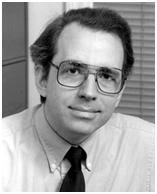


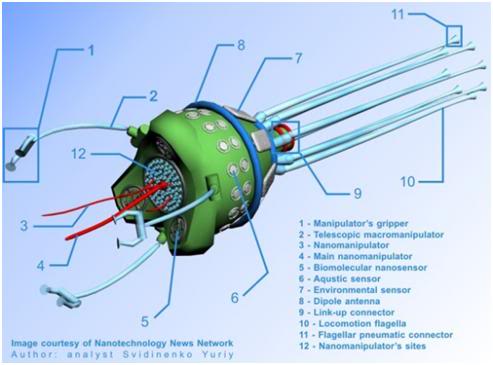
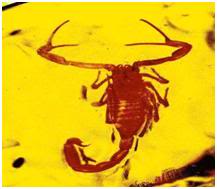 Buthidae: Scorpiones in Dominican Amber ~25-40 Million Years Old [Poinar G and Poinar R. The Quest for Life in Amber, Addison-Wesley, Reading, MA, 1994.]
Buthidae: Scorpiones in Dominican Amber ~25-40 Million Years Old [Poinar G and Poinar R. The Quest for Life in Amber, Addison-Wesley, Reading, MA, 1994.]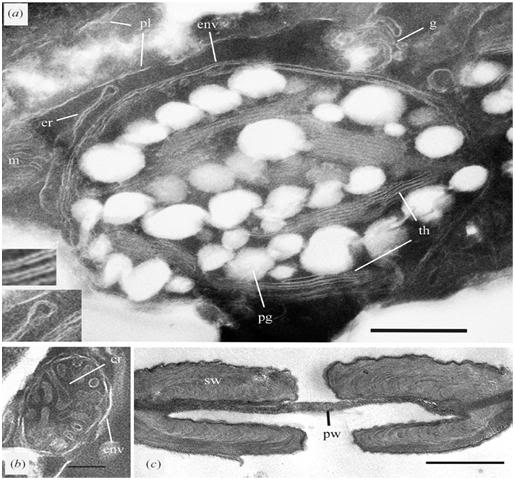 Plant Cell Ultra-structure in Baltic Amber ~45 Million Years Old: Transmission electron micrographs of ultrathin cross-sections of the amber cypress tissue. (a) Section of a parenchyma cell with a chloroplast, the double membrane envelope (env), thylakoid membranes (th) and large plastoglobuli (pg), membranes of the endoplasmic reticulum (er), the golgi aparatus (g), the plasmalemma (pl) and part of a mitochondrion (m). (b) Crosssection of a mitochondrion with the outer envelope (env) and cristae (cr). (c) Cross-section of a double-bordered pit from a tracheid-like cell with fine structures of the primary and secondary cell walls. Size bars: (a) 500 nm; (b) 200 nm; (c) 1 mm.Cypress [Proc. R. Soc. B272, 121–126 (2005)]
Plant Cell Ultra-structure in Baltic Amber ~45 Million Years Old: Transmission electron micrographs of ultrathin cross-sections of the amber cypress tissue. (a) Section of a parenchyma cell with a chloroplast, the double membrane envelope (env), thylakoid membranes (th) and large plastoglobuli (pg), membranes of the endoplasmic reticulum (er), the golgi aparatus (g), the plasmalemma (pl) and part of a mitochondrion (m). (b) Crosssection of a mitochondrion with the outer envelope (env) and cristae (cr). (c) Cross-section of a double-bordered pit from a tracheid-like cell with fine structures of the primary and secondary cell walls. Size bars: (a) 500 nm; (b) 200 nm; (c) 1 mm.Cypress [Proc. R. Soc. B272, 121–126 (2005)]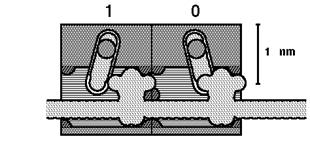 At right, nanoscale “rod-logic” mechanical computer, as envisioned by Drexler.
At right, nanoscale “rod-logic” mechanical computer, as envisioned by Drexler.As to FM-2030 (left), I have a lot of sympathy with John La Valley’s article,[7] and I took one hell of a lot of heat for running it, as I was the editor of Cryonics magazine at the time. However, in so many ways FM was a special case, and I believe he deserves considerable forbearance from us – if for no other reason that he was, indeed, one of us.
 Ray Kurzweil (right) is frustrating in many ways, but again, this is a man who has, on balance, made really important contributions to the broad set of issues that confront us. His discrete analysis of the historical trend of diverse technologies would make him invaluable as a stand-alone contribution.[8] That we don’t agree with his conclusions is a different matter, and shouldn’t be conflated with the overall intellectual worth of his contributions. Also, and this is very important, he has not in any way directly involved himself in cryonics, nor has he been critical of it, let alone someone who has ever even remotely attacked it. If he, or FM, had sought out leadership positions in cryonics, and then imposed their world view, my attitude would be very different. As it is, we as cryonicists invited both FM and Kurzweil to speak at our functions and to write for and about us. We were only too happy to accept their help (and indeed to solicit it) when we thought it to our advantage. As a consequence, I’m unwilling to attack these men, or to devalue their very real contributions. Sure, we can and should be critical of ideas and approaches that we believe (or know) are damaging to cryonics. But it is very important to separate the men from their ideas, and our friends from our enemies. We have far too few the former, and far too many of the latter.
Ray Kurzweil (right) is frustrating in many ways, but again, this is a man who has, on balance, made really important contributions to the broad set of issues that confront us. His discrete analysis of the historical trend of diverse technologies would make him invaluable as a stand-alone contribution.[8] That we don’t agree with his conclusions is a different matter, and shouldn’t be conflated with the overall intellectual worth of his contributions. Also, and this is very important, he has not in any way directly involved himself in cryonics, nor has he been critical of it, let alone someone who has ever even remotely attacked it. If he, or FM, had sought out leadership positions in cryonics, and then imposed their world view, my attitude would be very different. As it is, we as cryonicists invited both FM and Kurzweil to speak at our functions and to write for and about us. We were only too happy to accept their help (and indeed to solicit it) when we thought it to our advantage. As a consequence, I’m unwilling to attack these men, or to devalue their very real contributions. Sure, we can and should be critical of ideas and approaches that we believe (or know) are damaging to cryonics. But it is very important to separate the men from their ideas, and our friends from our enemies. We have far too few the former, and far too many of the latter.




 Marcelon Johnson, circa 1979.
Marcelon Johnson, circa 1979. The down-sides are appallingly obvious to (most) adults, and parents are uniformly horrified when their little “innocent” tells a whopper, or deliberately tries to mislead them at the tender age of 2 or 3. Some truly stupid parents will respond to this behavior by gently admonishing their little darling that, “It isn’t nice to lie, and we mustn’t do that.” And if such is the response to subsequent lies and acts of deciet, the end product is a monster. As it turns out, molding moral behavior requires intense hard work using a variety of tools: reasoning, explanation, reward, punishment, and emotional manipulation.
The down-sides are appallingly obvious to (most) adults, and parents are uniformly horrified when their little “innocent” tells a whopper, or deliberately tries to mislead them at the tender age of 2 or 3. Some truly stupid parents will respond to this behavior by gently admonishing their little darling that, “It isn’t nice to lie, and we mustn’t do that.” And if such is the response to subsequent lies and acts of deciet, the end product is a monster. As it turns out, molding moral behavior requires intense hard work using a variety of tools: reasoning, explanation, reward, punishment, and emotional manipulation.
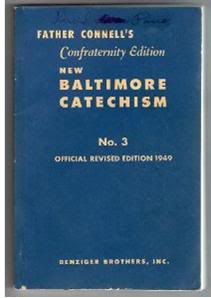 I was raised as Roman Catholic in the 1950s and 1960s and the principal “high order” intellectual instructional tool used to accomplish that end in young children was the 1941 revision of the Baltimore Catechism
I was raised as Roman Catholic in the 1950s and 1960s and the principal “high order” intellectual instructional tool used to accomplish that end in young children was the 1941 revision of the Baltimore Catechism 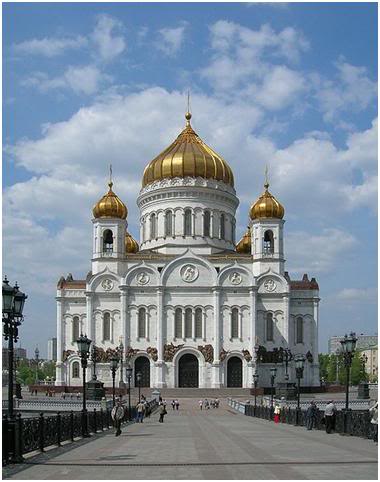
 Additionally, most people who obtain their values and morals in this way function in a fog. If you actually sit them down and ask them specific questions about what they should do in specific situations, they aren’t usually “wrong,” they are clueless. They simply stumble around, give an inane and meaningless answer, giggle, or just morosely say, “How should I know?” The last answer, BTW, is, in fact the correct one! How could they possibly know, since they have no clearly defined set of values?
Additionally, most people who obtain their values and morals in this way function in a fog. If you actually sit them down and ask them specific questions about what they should do in specific situations, they aren’t usually “wrong,” they are clueless. They simply stumble around, give an inane and meaningless answer, giggle, or just morosely say, “How should I know?” The last answer, BTW, is, in fact the correct one! How could they possibly know, since they have no clearly defined set of values?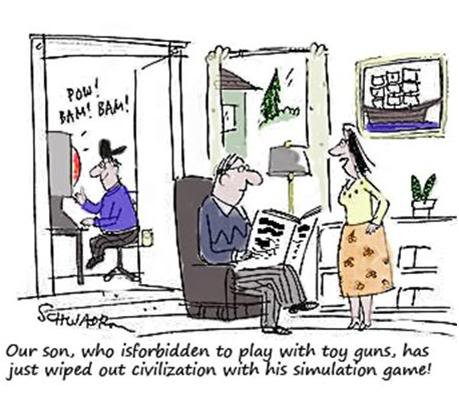 Currently, there is no moral or ethical code in cryonics – none (See the end for definitions of these terms as used herein). There really aren’t even any clearly defined values, and here is a practical example: A cryonics patient, or cryonics patients, are under attack, and you are the responsible cryonics organization’s CEO, or an Officer or Director. What are the limits of your responsibility and what are your obligations; to yourself and to the patient(s)? If the authorities come to you and say that you will either give over the patient(s), or they’ll strip you of your livelihood (i.e., take your medical or law license away, get your employer to discharge you…) is it permissible for you to hand over the patient(s)? What if they threaten your family, and/or other uninvolved, and completely “innocent” people? Is it OK, then? What if they threaten to imprison you, and even put the death penalty on the table, or they offer to spare some patients (those that may matter most to you, personally) if you just given them the one(s) they want? These are not hypothetical questions – they actually happened to me, and to the other Alcor Directors in the opening months of 1987.
Currently, there is no moral or ethical code in cryonics – none (See the end for definitions of these terms as used herein). There really aren’t even any clearly defined values, and here is a practical example: A cryonics patient, or cryonics patients, are under attack, and you are the responsible cryonics organization’s CEO, or an Officer or Director. What are the limits of your responsibility and what are your obligations; to yourself and to the patient(s)? If the authorities come to you and say that you will either give over the patient(s), or they’ll strip you of your livelihood (i.e., take your medical or law license away, get your employer to discharge you…) is it permissible for you to hand over the patient(s)? What if they threaten your family, and/or other uninvolved, and completely “innocent” people? Is it OK, then? What if they threaten to imprison you, and even put the death penalty on the table, or they offer to spare some patients (those that may matter most to you, personally) if you just given them the one(s) they want? These are not hypothetical questions – they actually happened to me, and to the other Alcor Directors in the opening months of 1987. Let me frame the question a bit differently, in order to show you just how dangerous having no defined values and no accompanying morals is. Suppose that the state comes to you and says, “We will shut you down unless you give us control over your patients.” What is the right thing to do? What principles or values will you use to guide you in making such a decision? The answer is NONE. We aren’t even “making it up as we go,” because that would imply that we keep a record our actions, and refer to these decisions as precedents. In fact, we don’t even do this!
Let me frame the question a bit differently, in order to show you just how dangerous having no defined values and no accompanying morals is. Suppose that the state comes to you and says, “We will shut you down unless you give us control over your patients.” What is the right thing to do? What principles or values will you use to guide you in making such a decision? The answer is NONE. We aren’t even “making it up as we go,” because that would imply that we keep a record our actions, and refer to these decisions as precedents. In fact, we don’t even do this! A consequence of this is that anyone who steps into a position of leadership in cryonics does so with no rudder to guide them, and no set of standards to which they can be held accountable, or conversely, to which they can turn to defend themselves against unreasonable expectations, or worse, unreasonable charges of misconduct. In particular, the man who steps into the Presidency of Alcor is a man who has entered a country with no laws, but which is nevertheless populated by judges and jurors – each of whom will decide his fate on unknown, unknowable, shifting, and all too often completely arbitrary grounds. The Directors, who are for all intents and purposes anonymous, never suffer the consequences of this grotesque situation (unless they err by becoming visible in their personal decision making, or are otherwise conspicuous), even as they select victim after victim for the rack and the chopping block.
A consequence of this is that anyone who steps into a position of leadership in cryonics does so with no rudder to guide them, and no set of standards to which they can be held accountable, or conversely, to which they can turn to defend themselves against unreasonable expectations, or worse, unreasonable charges of misconduct. In particular, the man who steps into the Presidency of Alcor is a man who has entered a country with no laws, but which is nevertheless populated by judges and jurors – each of whom will decide his fate on unknown, unknowable, shifting, and all too often completely arbitrary grounds. The Directors, who are for all intents and purposes anonymous, never suffer the consequences of this grotesque situation (unless they err by becoming visible in their personal decision making, or are otherwise conspicuous), even as they select victim after victim for the rack and the chopping block.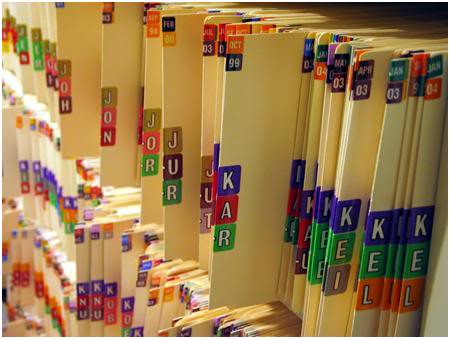
 Figure 9: Hippocrates of Kos, the father of rational medicine.
Figure 9: Hippocrates of Kos, the father of rational medicine.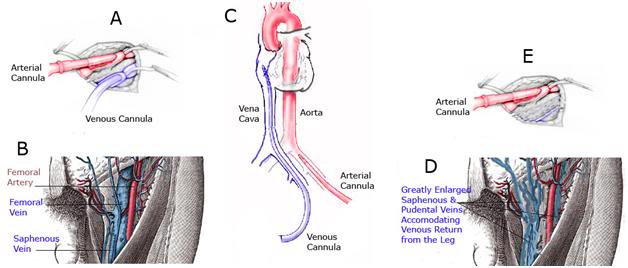 Figure 10: Femoral-femoral cardiopulmonary bypass (CBP) requires the placement of a long, large caliber cannula through the femoral vein (A&B) and into the inferior vena cava, preferably threaded up to the level of the right atrium (C). If the femoral vein has been obliterated, sclerosed, or is otherwise too small to accommodate the venous cannula (E), then either the contralateral femoral vein must be used, or venous drainage may be accomplished by cannulation of the internal jugular vein in the neck (not shown).When the femoral vein is destroyed as a result of disease or trauma, it is ‘replaced’ by a network of smaller caliber collateral vessels which serve to provide venous return from the leg to the heart (D). These vessels are often tortuous, are not of sufficient diameter to accommodate the venous cannula, and do not provide a straight, large diameter path to the inferior vena cava. In the case of patient A-1086 the arterial cannula in place in the right groin was used for perfusion (E) and the venous return cannula was placed in the left femoral vein.
Figure 10: Femoral-femoral cardiopulmonary bypass (CBP) requires the placement of a long, large caliber cannula through the femoral vein (A&B) and into the inferior vena cava, preferably threaded up to the level of the right atrium (C). If the femoral vein has been obliterated, sclerosed, or is otherwise too small to accommodate the venous cannula (E), then either the contralateral femoral vein must be used, or venous drainage may be accomplished by cannulation of the internal jugular vein in the neck (not shown).When the femoral vein is destroyed as a result of disease or trauma, it is ‘replaced’ by a network of smaller caliber collateral vessels which serve to provide venous return from the leg to the heart (D). These vessels are often tortuous, are not of sufficient diameter to accommodate the venous cannula, and do not provide a straight, large diameter path to the inferior vena cava. In the case of patient A-1086 the arterial cannula in place in the right groin was used for perfusion (E) and the venous return cannula was placed in the left femoral vein.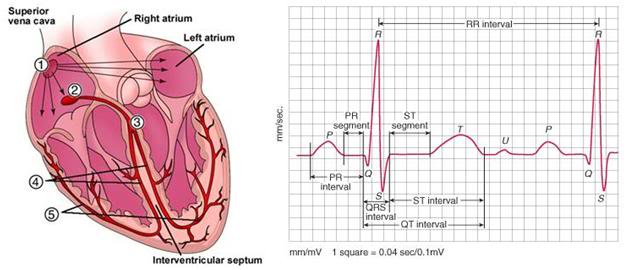 Figure 11: The anatomy of a heartbeat. The heart’s pacemaker is the sinoatrial (SA) node, which sends impulses to the atria and to the atrioventricular (AV) node, from which they are relayed to the ventricles. The signal from SA node (1) is seen as the P-wave on the ECG, at right. This signal results in the contraction of the atria, and within milliseconds it reaches the AV node (2), which in turn signals the rest of the cardiac conduction system to initiate ventricular contraction (3, 4, 5). The QRS complex of the ECG reflects the rapid depolarization and contraction of the right and left ventricles. Since the ventricular muscle mass is large, the amplitude of the electrical signal generated is on the ECG is corresponding large, as well.
Figure 11: The anatomy of a heartbeat. The heart’s pacemaker is the sinoatrial (SA) node, which sends impulses to the atria and to the atrioventricular (AV) node, from which they are relayed to the ventricles. The signal from SA node (1) is seen as the P-wave on the ECG, at right. This signal results in the contraction of the atria, and within milliseconds it reaches the AV node (2), which in turn signals the rest of the cardiac conduction system to initiate ventricular contraction (3, 4, 5). The QRS complex of the ECG reflects the rapid depolarization and contraction of the right and left ventricles. Since the ventricular muscle mass is large, the amplitude of the electrical signal generated is on the ECG is corresponding large, as well. Figure 12: Loss of chaotic variability and accompanying increase of the R-R interval is a sign of damage to the cardiac conduction system which is prognostic of a markedly increased risk of sudden cardiac arrest (SCA).Simplification of the fractal complexity of the R-R interval occurs in normal aging, independent of frank cardiac disease, and may be responsible for some of the increased risk of SCA associated even with so-called “healthy aging.” Loss of R-R interval fractal complexity in the presence of cardiac disease, or during the agonal process in slowly dying patients, is prognostic of increased risk of cardiac arrest, or impending cardiac arrest in the agonal patient.
Figure 12: Loss of chaotic variability and accompanying increase of the R-R interval is a sign of damage to the cardiac conduction system which is prognostic of a markedly increased risk of sudden cardiac arrest (SCA).Simplification of the fractal complexity of the R-R interval occurs in normal aging, independent of frank cardiac disease, and may be responsible for some of the increased risk of SCA associated even with so-called “healthy aging.” Loss of R-R interval fractal complexity in the presence of cardiac disease, or during the agonal process in slowly dying patients, is prognostic of increased risk of cardiac arrest, or impending cardiac arrest in the agonal patient. Figure 13: At the top are images of a human brain in the presence of a right subdural hematoma. At left is the brain at autopsy (after fixation and sectioning) showing compression of the right hemisphere and the relative collapse of the right cerebral ventricle and at right is a CT scan with false color (red) showing the appearance of a typical subdural bleed prior to craniotomy to evacuate the accumulated clotted and fluid blood overlying the brain. The rest of the Figure shows the procedure used for surgical management of a subdural hematoma; beginning with an incision in the skin (1) to expose the cranial vault over the area of the hematoma, after which the bone is cut and temporarily removed to expose the dura mater, the fibrous, tough membrane that covers the cerebral hemispheres (2). The dura is then incised and reflected to allow the surgeon to evacuate the hematoma; a process that is usually carried out by gentle suction and saline irrigation of the affected area of the cortical surface (3). Any evident bleeding vessels are clipped and cauterized, the bone flap is replaced and secured in position with metal staples or stainless steel sutures, and the skin flap is reapproximated and (typically) closed with metal staples (4).
Figure 13: At the top are images of a human brain in the presence of a right subdural hematoma. At left is the brain at autopsy (after fixation and sectioning) showing compression of the right hemisphere and the relative collapse of the right cerebral ventricle and at right is a CT scan with false color (red) showing the appearance of a typical subdural bleed prior to craniotomy to evacuate the accumulated clotted and fluid blood overlying the brain. The rest of the Figure shows the procedure used for surgical management of a subdural hematoma; beginning with an incision in the skin (1) to expose the cranial vault over the area of the hematoma, after which the bone is cut and temporarily removed to expose the dura mater, the fibrous, tough membrane that covers the cerebral hemispheres (2). The dura is then incised and reflected to allow the surgeon to evacuate the hematoma; a process that is usually carried out by gentle suction and saline irrigation of the affected area of the cortical surface (3). Any evident bleeding vessels are clipped and cauterized, the bone flap is replaced and secured in position with metal staples or stainless steel sutures, and the skin flap is reapproximated and (typically) closed with metal staples (4).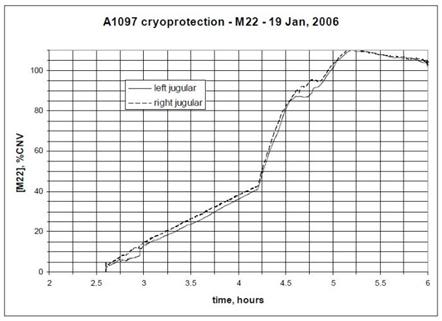
 Figure 14: The graph at top shows a 191 minute (3 hr, 11 min) cryoprotective perfusion for the vitrification of Alcor Life Extension Foundation neuropatient
Figure 14: The graph at top shows a 191 minute (3 hr, 11 min) cryoprotective perfusion for the vitrification of Alcor Life Extension Foundation neuropatient 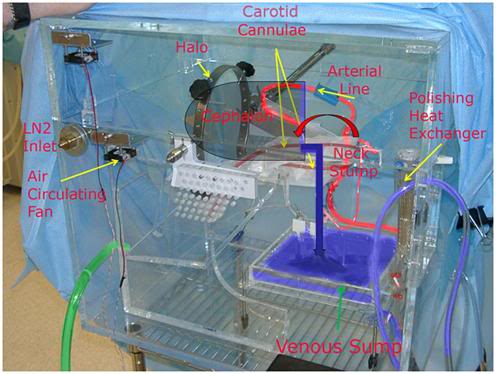 Figure 15: The temperature controlled neuro-cryoprotective perfusion enclosure used by the Alcor Life Extension Foundation. The cephalon is held in position using a standard surgical head fixation halo, with the stump of the neck being positioned over a polycarbonate plastic tray (venous sump, green arrow) that serves as the reservoir to collect venous drainage from the stump of the neck (right angle blue arrow) and return it to the extracorporeal circuit.
Figure 15: The temperature controlled neuro-cryoprotective perfusion enclosure used by the Alcor Life Extension Foundation. The cephalon is held in position using a standard surgical head fixation halo, with the stump of the neck being positioned over a polycarbonate plastic tray (venous sump, green arrow) that serves as the reservoir to collect venous drainage from the stump of the neck (right angle blue arrow) and return it to the extracorporeal circuit.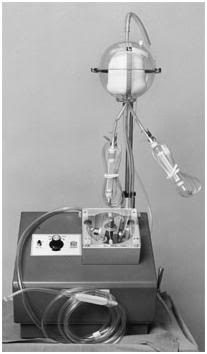 Figure 16: The Bentley Autotransfuser, which made its debut in 1970, allowed emergency medicine physicians and trauma surgeons to recover hemorrhaged blood and rapidly return it to the patient, thus preventing death from exsanguination, and often the need for extensive homologous blood transfusion, as well.
Figure 16: The Bentley Autotransfuser, which made its debut in 1970, allowed emergency medicine physicians and trauma surgeons to recover hemorrhaged blood and rapidly return it to the patient, thus preventing death from exsanguination, and often the need for extensive homologous blood transfusion, as well. Figure 17: Typical CT images of non-traumatic subdural hematomas (left and center) similar in nature to those frequently seen in spontaneous intracranial bleeds due to thrombocytopenia. The red arrows denote the area of the bleeds, the orange arrows the distortion of the contralateral cerebral ventricles. The green arrow on the image at right shows an air-fluid interface in the left fronto-parietal subdural hematoma cavity with fluid level from burr hole drainage causing mass effect compression the adjacent lateral ventricle (this image was from a case of subdural hematoma secondary to traumatic brain injury). Rebound of the compressed cerebral cortex to normal volume following craniotomy may take several days, providing the patient survives.
Figure 17: Typical CT images of non-traumatic subdural hematomas (left and center) similar in nature to those frequently seen in spontaneous intracranial bleeds due to thrombocytopenia. The red arrows denote the area of the bleeds, the orange arrows the distortion of the contralateral cerebral ventricles. The green arrow on the image at right shows an air-fluid interface in the left fronto-parietal subdural hematoma cavity with fluid level from burr hole drainage causing mass effect compression the adjacent lateral ventricle (this image was from a case of subdural hematoma secondary to traumatic brain injury). Rebound of the compressed cerebral cortex to normal volume following craniotomy may take several days, providing the patient survives. Figure 18: The operating rooms of every cryonics facility the author has had responsibility for over the course of his career all featured an x-ray view box (red arrows) to allow for intra-operative viewing and evaluation of diagnostic electromagnetic patient images. The operating rooms of all currently operational cryonics facilities lack this feature; this has been the case since they were first put into operation. Alcor Foundation, 1989 (A), BioPreservation/PW Biomedical, 1992 (B), BioPreservation, 1993 (C), BioPreservation/21st Century Medicine, 1999 (D).
Figure 18: The operating rooms of every cryonics facility the author has had responsibility for over the course of his career all featured an x-ray view box (red arrows) to allow for intra-operative viewing and evaluation of diagnostic electromagnetic patient images. The operating rooms of all currently operational cryonics facilities lack this feature; this has been the case since they were first put into operation. Alcor Foundation, 1989 (A), BioPreservation/PW Biomedical, 1992 (B), BioPreservation, 1993 (C), BioPreservation/21st Century Medicine, 1999 (D).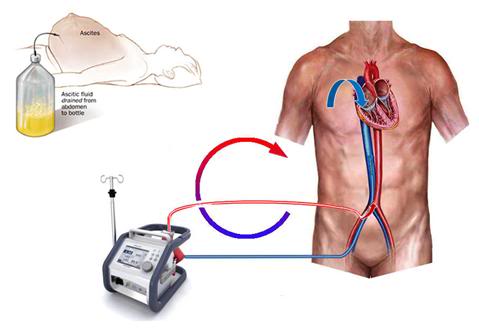 Figure 19: Femoral-femoral bypass in cryopatients is typically carried out by placing a short cannula in the femoral artery, and advancing a long, large diameter cannula through the femoral vein, and into the inferior vena cava (IVC). If the intra-abdominal pressure is elevated due to ascites or edema of the visceral organs (abdominal compartment syndrome), it becomes impossible to obtain adequate venous return, because of compression of the IVC. In the case of ascites, the abdomen may be decompressed by the simple expedient of draining it via a stab wound and a fenestrated tube, as shown in the drawing at the upper left.
Figure 19: Femoral-femoral bypass in cryopatients is typically carried out by placing a short cannula in the femoral artery, and advancing a long, large diameter cannula through the femoral vein, and into the inferior vena cava (IVC). If the intra-abdominal pressure is elevated due to ascites or edema of the visceral organs (abdominal compartment syndrome), it becomes impossible to obtain adequate venous return, because of compression of the IVC. In the case of ascites, the abdomen may be decompressed by the simple expedient of draining it via a stab wound and a fenestrated tube, as shown in the drawing at the upper left.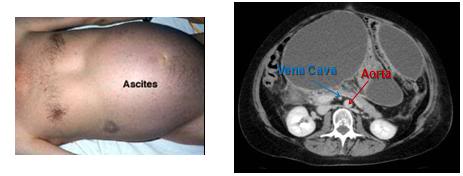 Figure 20: Shown at left above is the fluid distended abdomen of a patient with severe ascites secondary to end-stage liver failure. The protein-rich ascitic fluid ‘weeps’ from the serosa of the liver and accumulates in the abdomen where it compresses the abdominal viscera and can impede venous return from the lower extremities. At right is a CT scan with contrast showing the enormous degree of caval compression that can occur in ascities. The aorta is clearly visible (red arrow), but the IVC, which is normally twice the diameter of the aorta, appears as a small white dot, compressed as it is by the large volume of intra-abdominal fluid (blue arrow).
Figure 20: Shown at left above is the fluid distended abdomen of a patient with severe ascites secondary to end-stage liver failure. The protein-rich ascitic fluid ‘weeps’ from the serosa of the liver and accumulates in the abdomen where it compresses the abdominal viscera and can impede venous return from the lower extremities. At right is a CT scan with contrast showing the enormous degree of caval compression that can occur in ascities. The aorta is clearly visible (red arrow), but the IVC, which is normally twice the diameter of the aorta, appears as a small white dot, compressed as it is by the large volume of intra-abdominal fluid (blue arrow). Figure 21: The French (Fr) scale of catheter measurement. Even with the advent of ultra-thin-walled flat-wire femoral venous return cannulae, 21 Fr is the minimum size required to achieve adequate venous return in a 70 kg man under low flow conditions. The combined superior and inferior vena cava diameters, through which blood normally returns to the heart, are on the order 40-60 mm. Flow through tubes (cylinders) is not a linear function of tubing diameter, but rather increases or decreases as a function of the fourth power the radius of the tube (for the same liquid under the same conditions of temperature and pressure).
Figure 21: The French (Fr) scale of catheter measurement. Even with the advent of ultra-thin-walled flat-wire femoral venous return cannulae, 21 Fr is the minimum size required to achieve adequate venous return in a 70 kg man under low flow conditions. The combined superior and inferior vena cava diameters, through which blood normally returns to the heart, are on the order 40-60 mm. Flow through tubes (cylinders) is not a linear function of tubing diameter, but rather increases or decreases as a function of the fourth power the radius of the tube (for the same liquid under the same conditions of temperature and pressure).
 Figure 23: If the operator’s thumb is placed on the anterior superior iliac spine and the third finger is positioned atop the pubic tubercle, the index finger will usually be positioned approximately over the femoral neurovascular bundle, which contains the femoral artery and vein (left, above). At right, above, is an anterior view of the right thigh: V=femoral vein; A=femoral artery, N=femoral nerve, 1=adductor longus, 2=adductor brevis, 3=pectineus, 4=iliopsoas and 5=sartorius muscles. If a skin incision is made paralell to the midline as illustrated by the purple line in the figure at left, above, at the midinguinal point, the femoral vein will typically be found a few millimeters, to half a centimeter medial to the femoral artery. The use of these topographical landmarks and knowledge of the underlying muscular anatomy, is essential in performing femoral cut-downs on cryopatients, because the femoral pulse may be absent or not palpable, even when closed chest CPS is ongoing.
Figure 23: If the operator’s thumb is placed on the anterior superior iliac spine and the third finger is positioned atop the pubic tubercle, the index finger will usually be positioned approximately over the femoral neurovascular bundle, which contains the femoral artery and vein (left, above). At right, above, is an anterior view of the right thigh: V=femoral vein; A=femoral artery, N=femoral nerve, 1=adductor longus, 2=adductor brevis, 3=pectineus, 4=iliopsoas and 5=sartorius muscles. If a skin incision is made paralell to the midline as illustrated by the purple line in the figure at left, above, at the midinguinal point, the femoral vein will typically be found a few millimeters, to half a centimeter medial to the femoral artery. The use of these topographical landmarks and knowledge of the underlying muscular anatomy, is essential in performing femoral cut-downs on cryopatients, because the femoral pulse may be absent or not palpable, even when closed chest CPS is ongoing.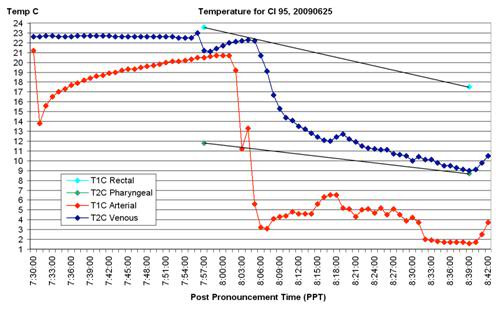 Figure 24: The graphic presentation of temperature data for CI Patient 95 documents the lack of venous return as an almost certain consequence of abdominal compartment syndrome, secondary to ascites. The arterial temperature shows a sharp drop as CPB is initiated, however the patient’s (circuit) venous temperature remains constant and does not begin to decline below ambient temperature until CPB is re-initiated an hour after the first attempt was made. The reader is encouraged to study all the data on this graph, and to carefully read the case report in its entirety, because I will be returning to this case and this data in a future installment of this article to make a point about another serious deficiency in the CPS of this patient. More precisely, I will be asking you, the readers, to identify this problem and ascertain its cause.
Figure 24: The graphic presentation of temperature data for CI Patient 95 documents the lack of venous return as an almost certain consequence of abdominal compartment syndrome, secondary to ascites. The arterial temperature shows a sharp drop as CPB is initiated, however the patient’s (circuit) venous temperature remains constant and does not begin to decline below ambient temperature until CPB is re-initiated an hour after the first attempt was made. The reader is encouraged to study all the data on this graph, and to carefully read the case report in its entirety, because I will be returning to this case and this data in a future installment of this article to make a point about another serious deficiency in the CPS of this patient. More precisely, I will be asking you, the readers, to identify this problem and ascertain its cause.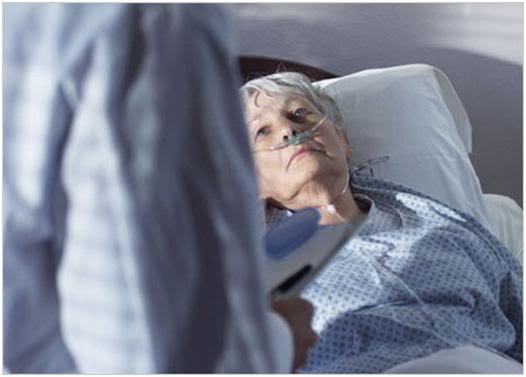 By Mike Darwin
By Mike Darwin Figure 5: Standby and stabilization require meticulous preparation and the deployment of a substantial amount of equipment and supplies. At right, a LUCAS cardiopulmonary support device is shown in place on a mock patient in a Portable Ice Bath (PIB). In addition to these (and many other) items of equipment, ice in large quantities must be on-site and immediately available.
Figure 5: Standby and stabilization require meticulous preparation and the deployment of a substantial amount of equipment and supplies. At right, a LUCAS cardiopulmonary support device is shown in place on a mock patient in a Portable Ice Bath (PIB). In addition to these (and many other) items of equipment, ice in large quantities must be on-site and immediately available.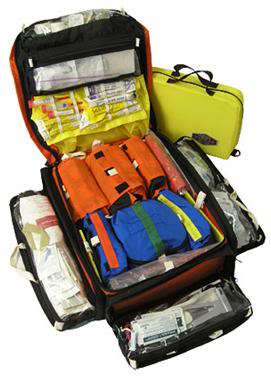 Figure 6: A Thomas Pack filled with Stabilization medications and ancillary supplies is an effective way to organize these items. This kit is one used by the Alcor Life Extension Foundation.
Figure 6: A Thomas Pack filled with Stabilization medications and ancillary supplies is an effective way to organize these items. This kit is one used by the Alcor Life Extension Foundation.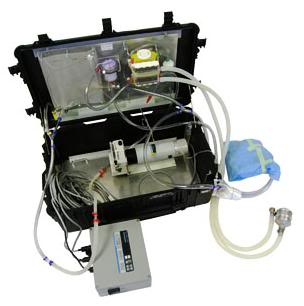
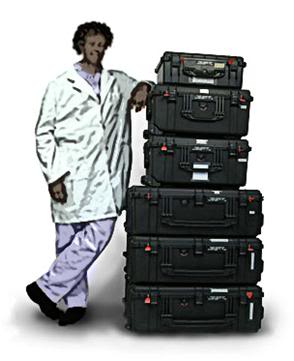 Figure 8: A typical Remote Standby Kit packed in rugged, shock-resistant Pelican Cases and ready for deployment (photo courtesy of the Alcor Life Extension Foundation).
Figure 8: A typical Remote Standby Kit packed in rugged, shock-resistant Pelican Cases and ready for deployment (photo courtesy of the Alcor Life Extension Foundation).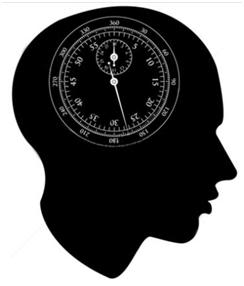 The use of patient cardiac arrest assessment or “mortality assessment” tools in a rigorous and evidence-based fashion is essential both to “getting it right” in terms of not being too late to arrive on the scene, and in containing costs by not deploying to early, or conversely, deploying under circumstances where the patient is not truly at high risk of arresting. No one prognostication tool will do the job, and in fact, it will simply not be possible in many cases to determine with any degree of precision when the patient will experience cardiac arrest. However, in the case of clearly terminal patients dying from inexorably fatal illnesses, such as end stage cancers, or untreatable multiple organ failure, the use of prognostic tools such as the Karnofsky’s Performance Assessment and the APACHE II and SOFA scoring systems (where laboratory data are available can be obtained) will help reduce uncertainty, and will definitely identify a significant subgroup of patients who will experience cardiac arrest within a window of two days, to a week at most.
The use of patient cardiac arrest assessment or “mortality assessment” tools in a rigorous and evidence-based fashion is essential both to “getting it right” in terms of not being too late to arrive on the scene, and in containing costs by not deploying to early, or conversely, deploying under circumstances where the patient is not truly at high risk of arresting. No one prognostication tool will do the job, and in fact, it will simply not be possible in many cases to determine with any degree of precision when the patient will experience cardiac arrest. However, in the case of clearly terminal patients dying from inexorably fatal illnesses, such as end stage cancers, or untreatable multiple organ failure, the use of prognostic tools such as the Karnofsky’s Performance Assessment and the APACHE II and SOFA scoring systems (where laboratory data are available can be obtained) will help reduce uncertainty, and will definitely identify a significant subgroup of patients who will experience cardiac arrest within a window of two days, to a week at most.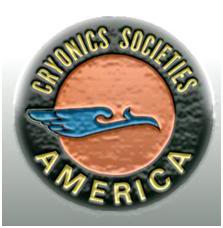 When cryonics began in the 1960s, the mission of the 4 cryonics societies
When cryonics began in the 1960s, the mission of the 4 cryonics societies During the 1980s, and continuing throughout the 1990s, divergence from this model began to occur. In particular, the Cryonics Institute began to define its services and activities around a low cost model which emphasized a simplified cryopreservation procedure with minimal/no emphasis on avoiding warm or cold ischemic injury and withdrawal from any interface with or intervention in the member’s medical care. In this model of cryonics, the cryonics organization becomes actively involved only after medico-legal death has been pronounced and a licensed Funeral Director takes custody of the patient and makes the removal from the home, hospital, ECF, or facility where the patient was pronounced legally dead. CI members can elect to have Standby and Stabilization services through a third party service provider, such as Suspended Animation, Inc., of Boynton Beach, FL, though the majority of CI members do not make such arrangements.[19]
During the 1980s, and continuing throughout the 1990s, divergence from this model began to occur. In particular, the Cryonics Institute began to define its services and activities around a low cost model which emphasized a simplified cryopreservation procedure with minimal/no emphasis on avoiding warm or cold ischemic injury and withdrawal from any interface with or intervention in the member’s medical care. In this model of cryonics, the cryonics organization becomes actively involved only after medico-legal death has been pronounced and a licensed Funeral Director takes custody of the patient and makes the removal from the home, hospital, ECF, or facility where the patient was pronounced legally dead. CI members can elect to have Standby and Stabilization services through a third party service provider, such as Suspended Animation, Inc., of Boynton Beach, FL, though the majority of CI members do not make such arrangements.[19]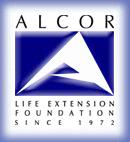 Alcor has continued to follow the prototypical cryonics society model to a greater degree, but appears to be no longer actively involved in trying to extend its members’ life spans by promoting risk reduction or health maintenance strategies, and it also appears to have ceded its activity in supporting and promoting interventive gerontological research to other organizations.[20] Contemporary cryonics organizations have thus effectively chosen to confine the scope of their operations to cryopreserving and storing their members, with or without aggressive attention to minimizing ischemic injury. Understanding these distinctions is crucial in any attempt to evaluate the performance of individual cryonics organizations, or of their service provider(s).
Alcor has continued to follow the prototypical cryonics society model to a greater degree, but appears to be no longer actively involved in trying to extend its members’ life spans by promoting risk reduction or health maintenance strategies, and it also appears to have ceded its activity in supporting and promoting interventive gerontological research to other organizations.[20] Contemporary cryonics organizations have thus effectively chosen to confine the scope of their operations to cryopreserving and storing their members, with or without aggressive attention to minimizing ischemic injury. Understanding these distinctions is crucial in any attempt to evaluate the performance of individual cryonics organizations, or of their service provider(s). First contact with a cryonics organization by a Prospective Member (PM) usually occurs in one of three ways: via the organization’s website, through printed literature designed for recruitment, or through a phone call to the organization’s representative(s). The critical elements which must be present in that first contact (depending upon the willingness of the PM) are:
First contact with a cryonics organization by a Prospective Member (PM) usually occurs in one of three ways: via the organization’s website, through printed literature designed for recruitment, or through a phone call to the organization’s representative(s). The critical elements which must be present in that first contact (depending upon the willingness of the PM) are: l) Costs, including a complete listing of, and charges for the infrastructure, capital equipment, and consumables employed to place a patient into cryopreservation and maintain him, indefinitely, in that state. This is understood to include financial transparency with quarterly, or at least annually prepared financial reports, preferably audited being available to members or prospective members.
l) Costs, including a complete listing of, and charges for the infrastructure, capital equipment, and consumables employed to place a patient into cryopreservation and maintain him, indefinitely, in that state. This is understood to include financial transparency with quarterly, or at least annually prepared financial reports, preferably audited being available to members or prospective members. Since Sudden Cardiac Arrest (SCA) and AD represent the two most common risks for information-theoretic death in cryonicists, advocacy of the MD by cryonics organizations, and continuing education of their members about the benefits of the MD should be a high priority for all cryonics organizations. Indeed, the quality and quantity of scientific evidence for the morbidity and mortality reducing effects of the MD are now sufficiently well established that it might well be argued that failure to advocate this intervention constitutes negligence.
Since Sudden Cardiac Arrest (SCA) and AD represent the two most common risks for information-theoretic death in cryonicists, advocacy of the MD by cryonics organizations, and continuing education of their members about the benefits of the MD should be a high priority for all cryonics organizations. Indeed, the quality and quantity of scientific evidence for the morbidity and mortality reducing effects of the MD are now sufficiently well established that it might well be argued that failure to advocate this intervention constitutes negligence. The cryonics organization also has an obligation to protect its members from the consequences of catastrophic sequelae resulting from sudden and unexpected medico-legal death. Such protection should include the existence and vigorous promotion of a cryonics emergency first aid program which empowers individual members and their families to act immediately in the event of sudden cardiac arrest (SCA) to initiate external cooling,[101-104] and where appropriate in the case of high risk members, to avail themselves of protection against undetected periods of prolonged warm ischemia by use of cardiac arrest and ‘man down’ detection systems and/or wearable or implantable defibrillators. [105]
The cryonics organization also has an obligation to protect its members from the consequences of catastrophic sequelae resulting from sudden and unexpected medico-legal death. Such protection should include the existence and vigorous promotion of a cryonics emergency first aid program which empowers individual members and their families to act immediately in the event of sudden cardiac arrest (SCA) to initiate external cooling,[101-104] and where appropriate in the case of high risk members, to avail themselves of protection against undetected periods of prolonged warm ischemia by use of cardiac arrest and ‘man down’ detection systems and/or wearable or implantable defibrillators. [105] In addition to the member’s name, address, phone number and birth date, all 50 states and the US territories require additional information to complete the Death Certificate. This information is gathered for statistical purposes and is often difficult to acquire in a timely fashion at the time of legal death. Indeed, in a number of cases the author is familiar with, the next-of-kin did not know some of this information leading to long delays in completion of the Death Certificate and release of the member to the cryonics organization. The following is a list of all the information required by the states’ department of Vital Statistics. Not all of this information is required in every state; however, the list below covers the information required by the combined 50 US states and the US territories.
In addition to the member’s name, address, phone number and birth date, all 50 states and the US territories require additional information to complete the Death Certificate. This information is gathered for statistical purposes and is often difficult to acquire in a timely fashion at the time of legal death. Indeed, in a number of cases the author is familiar with, the next-of-kin did not know some of this information leading to long delays in completion of the Death Certificate and release of the member to the cryonics organization. The following is a list of all the information required by the states’ department of Vital Statistics. Not all of this information is required in every state; however, the list below covers the information required by the combined 50 US states and the US territories.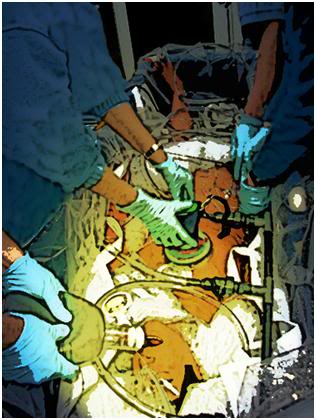
 Figure 1: Aschwin deWolf
Figure 1: Aschwin deWolf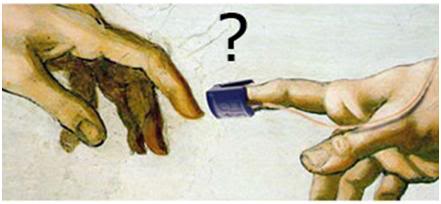 Figure 2: How meaningful is pulse oximetry in the context of evaluating the efficacy of cryopatient Stabilization?
Figure 2: How meaningful is pulse oximetry in the context of evaluating the efficacy of cryopatient Stabilization?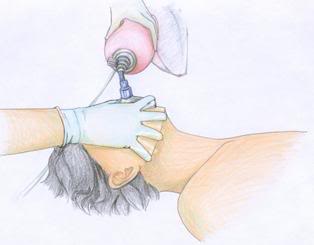 In fact, the validation of different modalities in resuscitation from cardiac arrest, and the “validation” of the effectiveness of cryonics procedures, have more in common than might reasonably be expected. Since bystander and emergency medical system CPR have been in widespread use throughout the Western world for 30 years, it would seem inevitable that there would be large and robust databases of survival and neurological outcome data from communities throughout Canada, the US and Western Europe. However, no such data exist! In 2005 a metanalysis of the literature disclosed that there were data from only 35 US cities or townships (representing just 9% of the US population), who had documented and published data on survival and outcome from cardiac arrest in their communities.[15] This metanalysis demonstrated a survival rate for all treated cardiac arrests of 8%, and for patients with ventricular fibrillation the rate was 18%. If these figures are extrapolated to the US population as a whole there are ~ 13,000 Americans who survive cardiac arrest long enough to be discharged from hospital out of ~ 300,000 cases of SCA each year. That’s a staggering disconnect and such a slim database provides little to go on in terms of improving the outcome for patients who will experience SCA in the future.
In fact, the validation of different modalities in resuscitation from cardiac arrest, and the “validation” of the effectiveness of cryonics procedures, have more in common than might reasonably be expected. Since bystander and emergency medical system CPR have been in widespread use throughout the Western world for 30 years, it would seem inevitable that there would be large and robust databases of survival and neurological outcome data from communities throughout Canada, the US and Western Europe. However, no such data exist! In 2005 a metanalysis of the literature disclosed that there were data from only 35 US cities or townships (representing just 9% of the US population), who had documented and published data on survival and outcome from cardiac arrest in their communities.[15] This metanalysis demonstrated a survival rate for all treated cardiac arrests of 8%, and for patients with ventricular fibrillation the rate was 18%. If these figures are extrapolated to the US population as a whole there are ~ 13,000 Americans who survive cardiac arrest long enough to be discharged from hospital out of ~ 300,000 cases of SCA each year. That’s a staggering disconnect and such a slim database provides little to go on in terms of improving the outcome for patients who will experience SCA in the future. Figure 3: Different clocks used to describe event time periods and intervals during resuscitation illustrate the lack of standardization in data collection which lead to reported outcomes from cardiac arrest that are all but impossible to meaningfully interpret. Reproduced from Cummins et al.[16]
Figure 3: Different clocks used to describe event time periods and intervals during resuscitation illustrate the lack of standardization in data collection which lead to reported outcomes from cardiac arrest that are all but impossible to meaningfully interpret. Reproduced from Cummins et al.[16]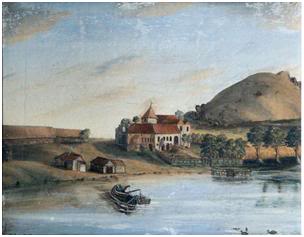 Figure 4: Utstein Abbey in the 18th Century.
Figure 4: Utstein Abbey in the 18th Century.
 An avid reader at an early age, Darwin discovered a box of
An avid reader at an early age, Darwin discovered a box of  Right: Mike Darwin at his home in Indpls IN in 1973 with cryonics rescue and perfusion equipment holding a flow meter in his hands and temporary dry ice storage container constructed by Darwin (photos by Ella Vinci).
Right: Mike Darwin at his home in Indpls IN in 1973 with cryonics rescue and perfusion equipment holding a flow meter in his hands and temporary dry ice storage container constructed by Darwin (photos by Ella Vinci).  Right: Mike Darwin with cryonics patient Clara Dostal in January of 1972 (photo by Curtis Henderson).
Right: Mike Darwin with cryonics patient Clara Dostal in January of 1972 (photo by Curtis Henderson). Right: Mike Darwin and Linda Chamberlain stand next to the cryogenic dewar holding the body of James H. Bedford, in July of 1973 (photo by Fred Chamberlain, III).
Right: Mike Darwin and Linda Chamberlain stand next to the cryogenic dewar holding the body of James H. Bedford, in July of 1973 (photo by Fred Chamberlain, III).  As a result of the Dastal
As a result of the Dastal  Right: First Portable Ice Bath (PIB) at the facilities of Soma, Inc. in, Indpls., IN in 1979.
Right: First Portable Ice Bath (PIB) at the facilities of Soma, Inc. in, Indpls., IN in 1979.  Above: The utility of burr holes in the skull for monitoring the response of the brain to cryoprotective perfusion is illustrated in these photos. At the start of cryoprotective perfusion (left) the brain is of normal volume, whereas near the conclusion of perfusion (right) it has lost substantial volume due to dehydration and has disappeared from view in the burr hole opening (photo by Hugh Hixon).
Above: The utility of burr holes in the skull for monitoring the response of the brain to cryoprotective perfusion is illustrated in these photos. At the start of cryoprotective perfusion (left) the brain is of normal volume, whereas near the conclusion of perfusion (right) it has lost substantial volume due to dehydration and has disappeared from view in the burr hole opening (photo by Hugh Hixon). Right: Fractures in a feline kidney as a result of cooling to below Tg, in this case to -196oC, following equilibration of the whole animal with 4M glycerol. Similar fracturing occurs in the brain (photo by Hugh Hixon).
Right: Fractures in a feline kidney as a result of cooling to below Tg, in this case to -196oC, following equilibration of the whole animal with 4M glycerol. Similar fracturing occurs in the brain (photo by Hugh Hixon). Right: Schematic of the Darwin Esophageal Gastric Tube Airway (illustration by Mike Darwin).
Right: Schematic of the Darwin Esophageal Gastric Tube Airway (illustration by Mike Darwin).  At right: This patient’s apical heart rate (HR), versus mean arterial pressure (MAP), are a textbook presentation of the course of hypovolemic shock, particularly in the setting of compromised coronary circulation. Note that as the mean arterial pressure declines, the heart rate increases to the patient’s maximum sustainable heart rate. Once the MAP declines to ~50 mmHg, or below,
At right: This patient’s apical heart rate (HR), versus mean arterial pressure (MAP), are a textbook presentation of the course of hypovolemic shock, particularly in the setting of compromised coronary circulation. Note that as the mean arterial pressure declines, the heart rate increases to the patient’s maximum sustainable heart rate. Once the MAP declines to ~50 mmHg, or below,  Right: Darwin (bottom center) with patient receiving in-home cardiopulmonary support using the first active compression-decompression heart-lung resuscitator followed by blood washout and extracorporeal support in 1995 (photo by Billy Seidel).
Right: Darwin (bottom center) with patient receiving in-home cardiopulmonary support using the first active compression-decompression heart-lung resuscitator followed by blood washout and extracorporeal support in 1995 (photo by Billy Seidel).  Left: Fecal retention device with associated temperature monitor.
Left: Fecal retention device with associated temperature monitor.  Above: Cooling curve of a cryonics patient receiving highly efficient CPS in conjunction with external cooling in the PIB as well as peritoneal and colonic lavage with ice cold fluids.
Above: Cooling curve of a cryonics patient receiving highly efficient CPS in conjunction with external cooling in the PIB as well as peritoneal and colonic lavage with ice cold fluids. Right: Mike Darwin performing the first chilled perfluorocarbon lung lavage on a cryonics patient (photo by David Hayes).
Right: Mike Darwin performing the first chilled perfluorocarbon lung lavage on a cryonics patient (photo by David Hayes). Above: Illustration of milestones Darwin anticipated achieving or facilitating during his “first life cycle;” from his August, 2008 lecture, “Cryonics: Why it has failed and what you can do about It.”
Above: Illustration of milestones Darwin anticipated achieving or facilitating during his “first life cycle;” from his August, 2008 lecture, “Cryonics: Why it has failed and what you can do about It.”
 Above: The work of Darwin, et al., demonstrating extensive damage with inadequate cryoprotection due to widespread ice formation in the cryopreserved cat brain (top) and vastly better preservation via freezing using 7.5 M glycerol in the dog brain (bottom).
Above: The work of Darwin, et al., demonstrating extensive damage with inadequate cryoprotection due to widespread ice formation in the cryopreserved cat brain (top) and vastly better preservation via freezing using 7.5 M glycerol in the dog brain (bottom). Left: Mike Darwin during his presidency of Alcor in 1986 (photo by Luigi Warren).
Left: Mike Darwin during his presidency of Alcor in 1986 (photo by Luigi Warren).  As was the case with the 10% Rule, the use of hardened, earthquake, fire, ballistic and blast resistant “vault protected” storage of cryonics patients, which Darwin designed and implemented with Hugh Hixon in 1983-4, (above left) [139,140] was also abandoned by Alcor not long after their move from Riverside, CA to Phoenix, AZ in 1994.[141] Darwin also originated the idea of using underground modular, concrete lined silos (fabricated from inexpensive, pre-cast steel reinforced concrete water drainage pipes) sunk into the floor of the cryonics facility to protect patients against earthquake, wind, fire, flood, and vandalism; a proposal that was implemented by Paul Wakfer and Mark Connaughton at the facilities of CryoSpan, Corporation, in Rancho Cucamonga, CA in 1995 (above right) [142,143] but which has not been used since.
As was the case with the 10% Rule, the use of hardened, earthquake, fire, ballistic and blast resistant “vault protected” storage of cryonics patients, which Darwin designed and implemented with Hugh Hixon in 1983-4, (above left) [139,140] was also abandoned by Alcor not long after their move from Riverside, CA to Phoenix, AZ in 1994.[141] Darwin also originated the idea of using underground modular, concrete lined silos (fabricated from inexpensive, pre-cast steel reinforced concrete water drainage pipes) sunk into the floor of the cryonics facility to protect patients against earthquake, wind, fire, flood, and vandalism; a proposal that was implemented by Paul Wakfer and Mark Connaughton at the facilities of CryoSpan, Corporation, in Rancho Cucamonga, CA in 1995 (above right) [142,143] but which has not been used since. Mike Darwin stands beside discarded neuropatient protective vaults in the parking lot of the Alcor Life Extension Foundation in March, 2011 (photo by Stanislaw Lipin).
Mike Darwin stands beside discarded neuropatient protective vaults in the parking lot of the Alcor Life Extension Foundation in March, 2011 (photo by Stanislaw Lipin). 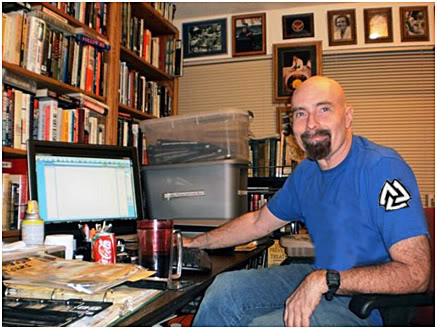

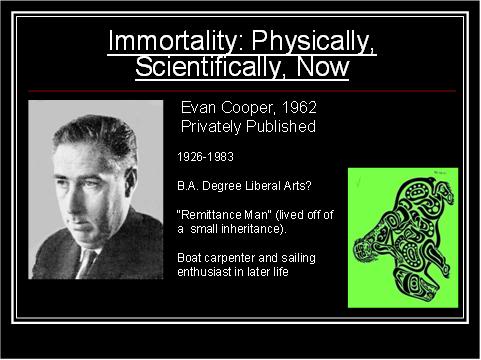
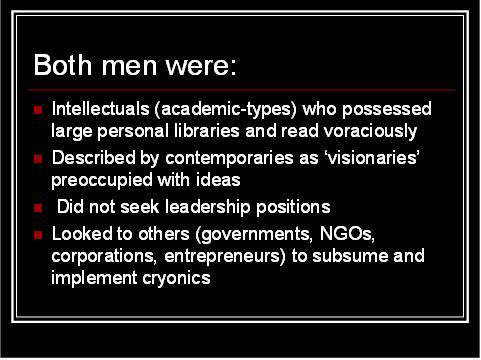 The character of these two men and the ‘outrageous’ nature of cryonics, more or less precluded the kind of careful planning required to launch such a complex, controversial and failure intolerant idea, and its associated enterprises.
The character of these two men and the ‘outrageous’ nature of cryonics, more or less precluded the kind of careful planning required to launch such a complex, controversial and failure intolerant idea, and its associated enterprises.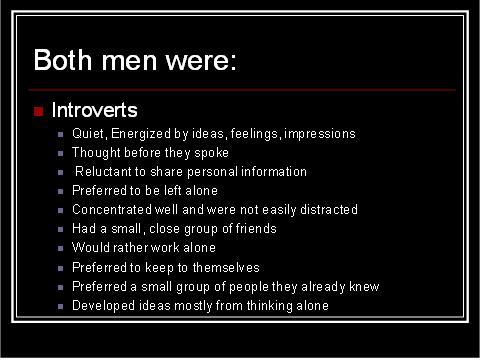
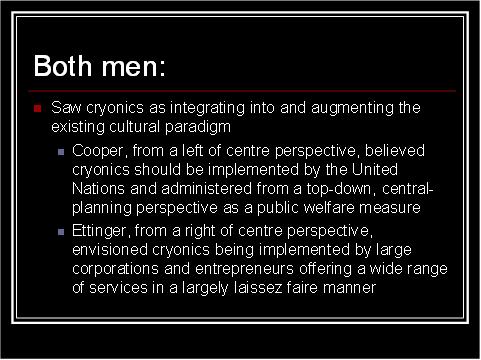 In short, there was a failure to take personal responsibility for the success or failure of implementing cryonics and a near total failure to understand the enormous negative impact of missteps, or outright failure, on the credibility and viability of the idea.
In short, there was a failure to take personal responsibility for the success or failure of implementing cryonics and a near total failure to understand the enormous negative impact of missteps, or outright failure, on the credibility and viability of the idea.

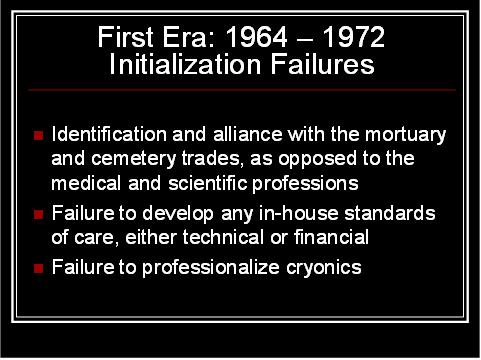

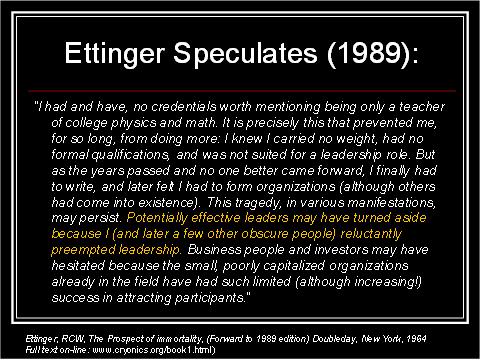


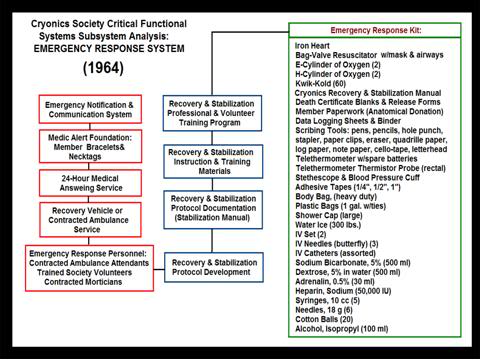
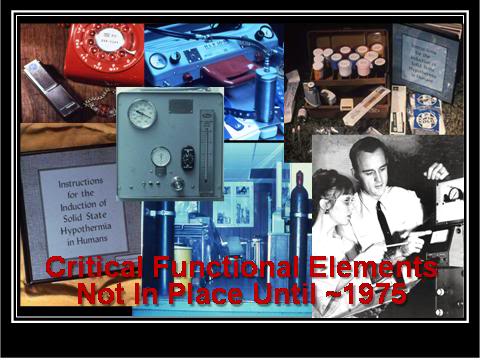
 Second generation perfusion machine, perfusate reservoir, and heat exchanger in its first use on a cryopatient:
Second generation perfusion machine, perfusate reservoir, and heat exchanger in its first use on a cryopatient: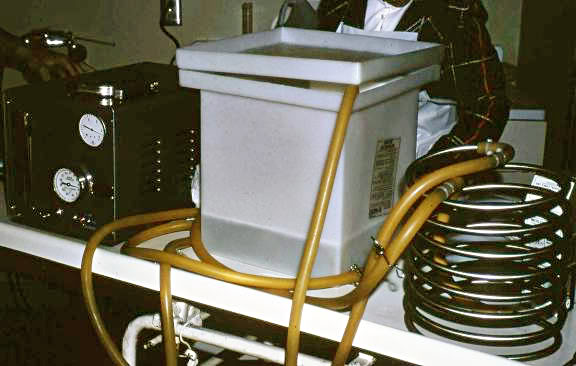
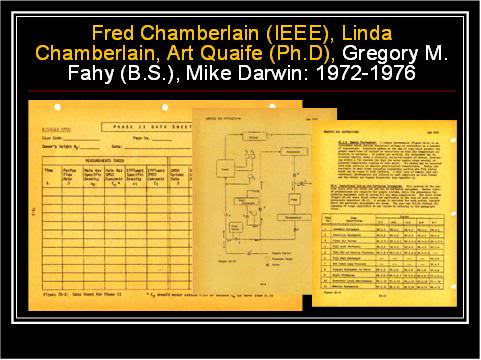
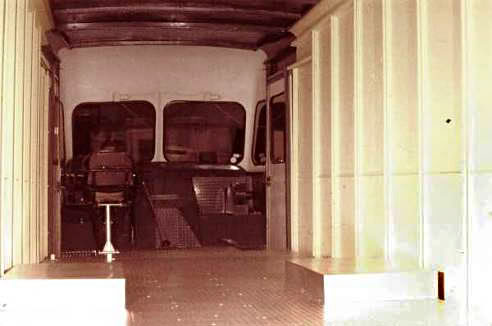

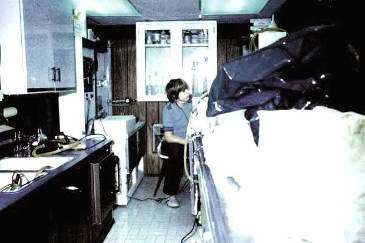 We acquired cryogenic storage equipment and familiarized ourselves with every aspect of its safe operation and the safe handling of liquid nitrogen. We did this first by didactic study and then followed-up the book-learning with careful, incremental, hands-on experience.
We acquired cryogenic storage equipment and familiarized ourselves with every aspect of its safe operation and the safe handling of liquid nitrogen. We did this first by didactic study and then followed-up the book-learning with careful, incremental, hands-on experience.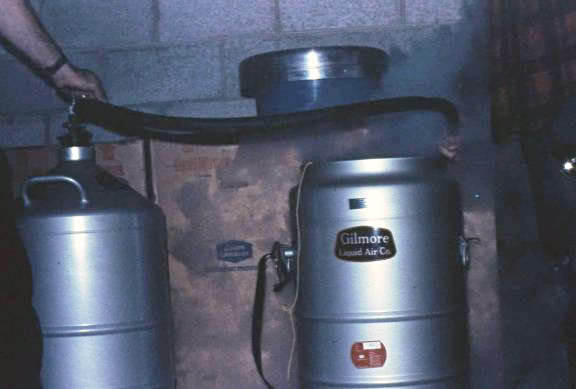
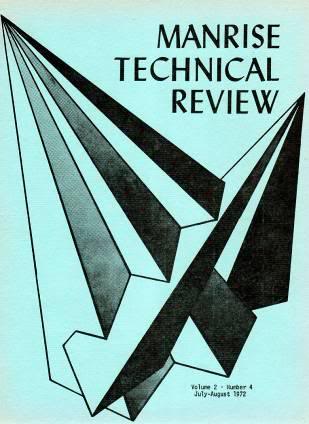
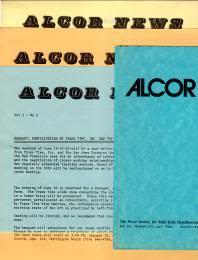
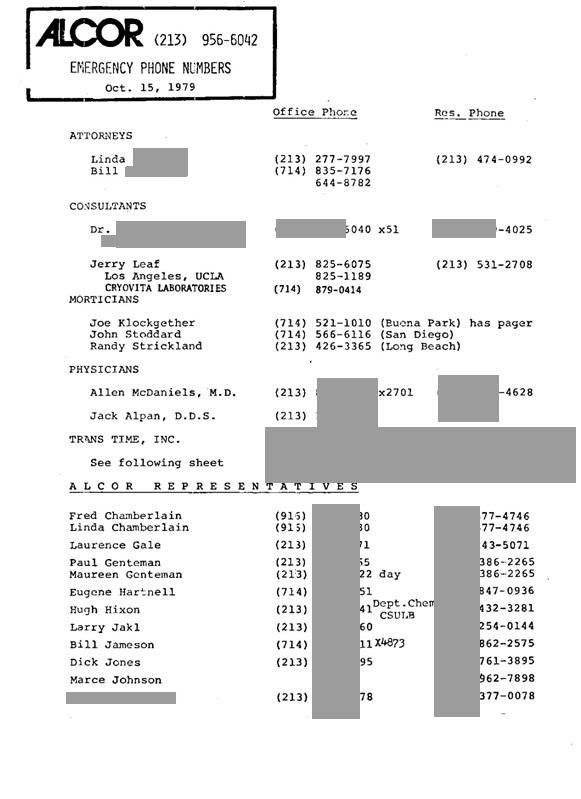 These lists were updated no less frequently than quarterly by Linda Chamberlain, and they were maintained current in an era when there were no personal computers and at a time when these lists had to be typed by hand, and then mailed out via snail mail to all the Alcor Representatives. Beyond these technological handicaps, there was the fact that the people running Alcor had demanding full time jobs. From the period of 1972 to 1976 not only was the ECL maintained and distributed without fail by three people holding full time jobs, these same three individuals also:
These lists were updated no less frequently than quarterly by Linda Chamberlain, and they were maintained current in an era when there were no personal computers and at a time when these lists had to be typed by hand, and then mailed out via snail mail to all the Alcor Representatives. Beyond these technological handicaps, there was the fact that the people running Alcor had demanding full time jobs. From the period of 1972 to 1976 not only was the ECL maintained and distributed without fail by three people holding full time jobs, these same three individuals also: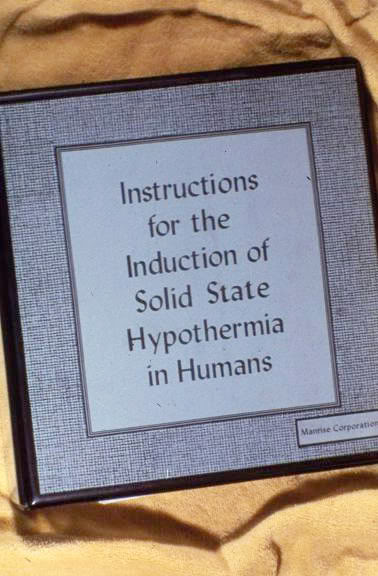
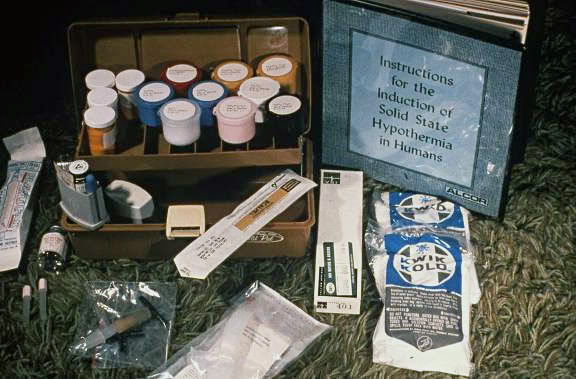 • Produced a wide range of brochures and literature as well as produced a monthly newsletter (2 pages 8.5” x 14”) during much of that interval.
• Produced a wide range of brochures and literature as well as produced a monthly newsletter (2 pages 8.5” x 14”) during much of that interval.

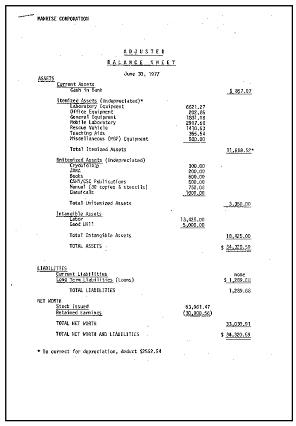 I think it is most important to point out that all of this effort was undertaken prior to placing our services ‘on offer’ to the public and attracting media (and thus regulatory) attention. We made ourselves into professionals first. We taught ourselves hypothermic organ preservation, basic surgical skills, the fundamentals of extracorporeal perfusion, a great deal of pharmacology and medicine, a fair bit of practical cryogenic engineering, and lots of crafts skills; ranging from electrical wiring, simple circuit design, wood working and basic construction…. And we mastered the biomedical and surgical procedures required to conduct animal research.
I think it is most important to point out that all of this effort was undertaken prior to placing our services ‘on offer’ to the public and attracting media (and thus regulatory) attention. We made ourselves into professionals first. We taught ourselves hypothermic organ preservation, basic surgical skills, the fundamentals of extracorporeal perfusion, a great deal of pharmacology and medicine, a fair bit of practical cryogenic engineering, and lots of crafts skills; ranging from electrical wiring, simple circuit design, wood working and basic construction…. And we mastered the biomedical and surgical procedures required to conduct animal research. Left: Mike Darwin at the Cryonics Society of New York in1971 (Inset: in Russia July, 2008).
Left: Mike Darwin at the Cryonics Society of New York in1971 (Inset: in Russia July, 2008).